Issue 1
SWISS MEDTECH
Inside the pearl of Switzerland’s economy
INNOQUEST DIAGNOSTICS
Pursuing science and innovating for life

www.healthcare-outlook.com

Issue 1
SWISS MEDTECH
Inside the pearl of Switzerland’s economy
Pursuing science and innovating for life

www.healthcare-outlook.com
Striving for a future where advanced therapies are available and affordable for every patient
Rajiv Tanna of home healthcare technology partner, birdie, discusses how AI is ready to transform adult social care, but robots are not


For over a decade, our portfolio of in-house magazines has been lovingly produced, printed, and distributed to our esteemed subscribers across the globe from our headquarters in the UK.


But now we are moving with the times, adopting a digital-first approach by producing online-only publications. A major factor in this decision is to minimise our environmental footprint, reducing the carbon emissions involved in the logistics of print magazine distribution and the resources required therein.



Going forward, we will provide print orders of any magazine in-line with the requests of our featured companies, subscribers, and conference & expo partners.



Please get in touch for a print-on-demand quote or visit our website to find out more.

“We always planned that when our digital subscribers consistently accounted for 85% of our total magazine subscribers, we would cease printing our publications in-line with our environmental and sustainability goals.”
– Ben Weaver, CEO, Outlook Publishing Ltd
EDITORIAL
Editorial Director: Phoebe Harper phoebe.harper@outlookpublishing.com
Senior Editor: Marcus Kääpä marcus.kaapa@outlookpublishing.com
Editor: Jack Salter jack.salter@outlookpublishing.com
Editor: Lucy Pilgrim lucy.pilgrim@outlookpublishing.com
Junior Editor: Ed Budds ed.budds@outlookpublishing.com
Junior Editor: Rachel Carr rachel.carr@outlookpublishing.com
PRODUCTION
Production Director: Stephen Giles steve.giles@outlookpublishing.com
Senior Designer: Devon Collins devon.collins@outlookpublishing.com
Designer: Sophs Forte sophs.forte@outlookpublishing.com
Junior Designer: Louisa Martin louisa.martin@outlookpublishing.com
Production Assistant: Megan Cooke megan.cooke@outlookpublishing.com

Digital Marketing Manager: Fox Tucker fox.tucker@outlookpublishing.com
Social Media Executive: Bria Clarke bria.clarke@outlookpublishing.com
Web Editor: Oliver Shrouder oliver.shrouder@outlookpublishing.com
BUSINESS CEO: Ben Weaver ben.weaver@outlookpublishing.com
Managing Director: James Mitchell james.mitchell@outlookpublishing.com
Sales Director: Nick Norris nick.norris@outlookpublishing.com
Regional Director: Joshua Mann joshua.mann@outlookpublishing.com
TRAINING & DEVELOPMENT MANAGER
Marvin Iseghehi marvin.Iseghehi@outlookpublishing.com
BUSINESS DEVELOPMENT DIRECTOR
Thomas Arnold thomas.arnold@outlookpublishing.com
HEADS OF PROJECTS
Callam Waller callam.waller@outlookpublishing.com
Deane Anderton deane.anderton@outlookpublishing.com
PROJECT MANAGERS
Felix Revell felix.revell@outlookpublishing.com
ADMINISTRATION
Finance Director: Suzanne Welsh suzanne.welsh@outlookpublishing.com
Finance Assistant: Suzie Kittle suzie.kittle@outlookpublishing.com
Finance Assistant: Victoria McAllister victoria.mcallister@outlookpublishing.com
CONTACT
Healthcare Outlook
First Floor, Norvic House, 29-33 Chapelfield Road
Norwich, NR2 1RP, United Kingdom.
Sales: +44 (0) 1603 363 631
Editorial: +44 (0) 1603 363 655
SUBSCRIPTIONS
Tel: +44 (0) 1603 363 655 phoebe.harper@outlookpublishing.com www.healthcare-outlook.com
Like us on Facebook: facebook.com/healthcareoutlookmag
Follow us on Twitter: @hc_outlook
It is my pleasure to introduce you to our inaugural issue of Healthcare Outlook – a brand new venture launched by Outlook Publishing to foreground the ever-shifting dynamics of the global healthcare sector.
In this breakthrough issue, we foreground a diverse array of companies united by one common purpose – making quality care accessible to all. Embodying this ethos on its mission to save lives is our cover star, Center for Breakthrough Medicines (CBM). From its base near Philadelphia, the birthplace of cell and gene therapy (CGT), CBM continues to push the envelope of biotechnology through its world-class capabilities.
“We can map the entire journey of a product from early development to commercialisation, building in the requisite milestones to track progress and ensure quality,” shares CBM’s Chief Strategy Officer, Alan Moore.
Elsewhere, we explore how several organisations are embracing technological innovation to deliver healthcare at home schemes, offering patients the care they need in ultimate comfort. This includes Roper St. Francis Healthcare - the Lowcountry’s largest and most convenient care provider - who has been spearheading its Hospital at Home programme to alleviate pressure on emergency departments, free up more patient beds, and deliver more effective care in a familiar environment surrounded by personal support systems.
Meanwhile, in the wake of the government’s Hospital at Home announcements in the UK, our Topical Focus shines a light on the work between Zoom and the NHS, as the healthcare system pursues its ambition of rolling out 40 to 50 virtual ward ‘beds’ per 100,000 of the population. With the latest figures highlighting that over 7.21 million people are currently waiting for hospital treatment, we foreground the vital role that technology has to play in improving the delivery of healthcare.
Featuring a host of other players from further afield including Sysmex West and Central Africa, Swedish Medtech and Innoquest Diagnostics to name but a few, we hope that you enjoy the first of many issues to come.
Phoebe Harper Editorial Director, Outlook Publishing









SCIENTISTS AT THE Genome Institute of Singapore (GIS) have worked with researchers at the Singapore General Hospital (SGH), to utilise artificial intelligence (AI) in the discovery of critical biomarkers used to predict and diagnose patients with chronic myeloid leukaemia (CML).
This vital research will be transformative to CML patients, who suffer from a type of blood cancer that is caused by a genetic mutation which affects an enzyme called tyrosine kinase.
Typically, CML is treated using a bone marrow transplant, however, this is not plausible for patients in the later stages. Therefore, AI could help predict the severity of CML so that bone marrow transplants can be more effective in the early stages.


SEVERAL MAJOR HOSPITAL building projects, a cornerstone of Boris Johnson’s ‘new hospitals programme’ launched in 2019, have been put on hold till at least 2030.
The programme included the construction of 40 new hospitals. As
RESEARCHERS IN SYDNEY have made serious steps towards the treatment of endometriosis, improving the health of millions with the painful condition.
Scientists from Sydney’s Royal Hospital grew tissue from every known form of the disease, analysing changes and observing how each tissue behaved when placed under certain conditions. As a result, a variety of treatments can be created depending on the type of endometriosis and determine whether a woman will need fertility treatment.
Endometriosis is a chronic disease with symptoms including abdominal pain, heavy periods, bloating, bleeding from the bladder, as well as anxiety caused by the pain.

part of this, the former Prime Minister pledged six brand new facilities and 38 new builds. However, the majority of these plans have now been put on hold for at least a decade.
In a speech made in May 2019, England’s Health Secretary, Steve Barclay, emphasised the government’s commitment to the building programme, further stating that it would receive a £20 billion investment.

THE NATIONAL INSTITUTE for Health and Care Excellence (NICE) has approved a state of the art drug, known as mavacamten, which could offer hope to thousands across England.
According to draft guidance from the NHS, mavacamten could be used to treat individuals with hypertrophic cardiomyopathy (HCM), which currently has the potential to help over 7,000 people.
HCM can cause heart muscle contractions, which leads to the heart becoming thickened and stiff, stopping it from pumping sufficient amounts of blood.
Also known as Camzyos, the new drug is the first of its kind to specifically target the chronic disease, which is caused by a genetic mutation in half of all reported cases.

THE DEMOCRATIC REPUBLIC of the Congo (DRC) has launched its first large-scale immunisation campaign in the form of the novel polio vaccine 2 (nOPV2), which will protect thousands of children from the disease. From the beginning of June 2023, more than 17 million

20 provinces.
The initiative is preparing the country for a nationwide dosage, scheduled for July 2023. Already, more than 20 million nOPV2 doses have been administrated, however, each round was limited to only two provinces.
With over 407 cases reported 2023, DRC accounts for almost
THE FIRST PURPOSE-BUILT township has been launched in Malaysia to encourage a lifestyle more aligned with healthcare and wellness. The KL Wellness City (KLWC) was officiated in June 2023, with a gross development value of RM11 billion (USD$2.4 billion), covering 26.49 acres.
The facility includes the Nobel Healthcare Park, the KL International Hospital (KLIH), innovation laboratories, clinical R&D facilities, office towers, retirement resorts, wellness-centric serviced apartments, and much more.
The facility is projected to open in 2026 and is working with international partners who are interested in advancing Southeast Asian healthcare.
A HOSPITAL IN the UAE has successfully tested the delivery of medicine with a flying drone. This form of transportation could be a life changing service, as it transports medicine to those desperately in need more quickly and efficiently.

Additionally, the use of drones helps reduce emissions and improve medical access in less accessible areas of the region.
The first successful delivery test was completed in Dubai Silicon Oasis (DSO). Consequently, the Fakeeh University Hospital, which spearheaded the trial, is the first healthcare provider to utilise drone technology.
Rajiv Tanna, co-Founder and CPO of home healthcare technology partner, birdie, discusses how Artificial Intelligence (AI) is ready to transform adult social care, but robots are not
Written by: Rajiv Tanna, co-Founder, CPO, birdieIn April, scientists at Loughborough University revealed that they had been developing a robotic system to provide domestic care for elderly people. Simply put, the robot has been programmed to interact with older adults and perform a variety of tasks around the home. The project’s leader called this research “essential” to reducing the burden on healthcare systems, like the UK’s.
Technological progress in robotics has fostered innovation in a variety of new sectors. In social care, the premise seems simple: healthcare organisations like the NHS lack staff to provide care. To fill the gap in the human workforce, these organisations could use advanced robotic systems instead.
While this presents an apparently
appealing solution, it’s worth considering the wider context of social care in the UK first. Robots sound exciting and innovative. But other technologies, like AI, might provide more suitable, immediate solutions that enhance human connections.

The UK’s social care system has had a perennial lack of funding. Successive governments have delayed required reforms for years. Even now, as the sector plunges further towards crisis, the government continues to reduce funding. In April, the Department of Health and Social Care cut the £500 million it had pledged to the workforce in 2021 in two.
But, despite the lack of government support, the UK’s population continues to grow older. More ageing adults needed care last year than ever before. And more will need it next year than they did this year. In 2021/22, almost two million older adults requested support, according to The King’s Fund’s Social Care 360 report. Just over 800,000 received it.
In response to this, robotic carers might sound like a suitable solution to filling some of the 165,000 industry vacancies in 2022 (a rise of 55 percent from the previous year). The problem is: robotic systems can’t solve the wide-ranging challenges care providers, care professionals and care recipients are currently facing. Nor are they ready for operational,
widespread deployment. Eventually, they could complement care professionals in specific tasks such as lifting people. But, the social care sector needs a holistic solution that can be introduced now, not later.
Even in the long term, those involved in the sector doubt the potential efficacy of these robots. Loneliness is already a widespread problem among the UK’s elderly population. Interacting with a robot, instead of a human, will only make that problem worse. Essentially, people want human-to-human contact, especially when they’re less mobile.
While robots may not provide the solution that the adult social care sector needs, another form of technology may be able to. AI has been attracting attention over the past six months as a result of the new, consumer-facing ‘generative AI’ platforms launched by several big tech companies.
But AI, in truth, has been in use across a wide range of industries for years - and now it’s social care’s turn. In fact, the technology can improve experiences at every level - from care provider to care professional and care recipient.
By digitising operations, care providers open an enormous wealth of opportunity for themselves and everyone they care for. The notes they collect on a daily basis can suddenly become useful in a way they never were on paper or in disparate, poorly managed documents. This data might relate to care professionals’ dayto-day activities, or care recipients’ individual needs - from medication schedules, incident reports, and visitation notes.
By logging this information into a comprehensive, AI-powered platform, they will suddenly be able to unlock critical insights that would have likely gone unnoticed in

paper-based logbooks. For example, the technology could enhance care providers’ care plans for an individual care recipient, based on their medical history and behaviours. So, if an older adult who suffered a cardiac arrest a few years ago regularly reports having a diet high in added fats or fried foods, the platform could proactively recommend making periodical cholesterol checks.
Similarly, it could also automatically summarise care recipients’ individual needs and translate these reports into data-driven recommendations that can give care professionals the confidence to deliver proactive and preventative care efficiently to each individual care recipient. As a result, care providers can be better prepared to detect the early symptoms of a condition and receive suggestions on how to react, ultimately maintaining care recipients’ health outcomes and happiness for as long as possible.
But there’s more to it. The technology could improve the human connection of care as well by equipping care professionals with auto-reminders of specific events that recipients care about, such as a favourite dish or wedding anniversary. It could also analyse care professionals’ and recipients’ individual profiles to optimise rotas and ensure greater continuity of care. This will not only help save time, but allow care professionals to make better decisions and deliver more personalised care to ageing adults.
Of course, all of these improvements require access to sensitive data.
As such, everything has to be secure and safe. But let’s remember that the social care sector already holds vast amounts of sensitive data - it’s just in paper logs and saved across cabinets.
Essentially, AI represents an opportunity to improve risk controls whilst elevating experiences across every level of the sector, putting individual care recipients and their needs at the centre of care. AI is not an unsupervised technology that dictates what people do. Rather, it is a tool that helps professionals better understand each care recipient’s needs, and in turn, provide high quality care.
If deployed correctly, care providers can offer advanced care services and care types that enable care professionals to confidently deliver care efficiently. This ensures care recipients age confidently, happily and healthily.
Change needs to come from within
“AI IS NOT AN UNSUPERVISED TECHNOLOGY THAT DICTATES WHAT PEOPLE DO. RATHER, IT IS A TOOL THAT HELPS PROFESSIONALS BETTER UNDERSTAND EACH CARE RECIPIENT’S NEEDS, AND IN TURN, PROVIDE HIGH QUALITY CARE”
– RAJIV TANNA, CO-FOUNDER AND CPO, BIRDIE

Healthcare institutions operate on the frontline of human safety and well-being, and so keeping up with and utilising the latest technological developments is critical to a positive patient experience, and an optimised healthcare system.
We dive into the medical advancements between the Australian Capital Territory Health and Alcatel-Lucent Enterprise, a collaborative effort redefining Canberra’s healthcare space
Writer: Marcus KääpäServing an international customer base, Alcatel-Lucent Enterprise (ALE) delivers customised technology experiences to fulfil its customers’ needs. Central to the company, ALE’s mission is to maximise connectivity by delivering digital-age networking, communications and cloud-based solutions with tailored services.
ALE operates across multiple industries including the healthcare space, in which it provides healthcare information technology (IT) tools and solutions that deliver key services and help optimise the all-important patient care pathway. It is the view of ALE that simplified, efficient and secure communications allow clinicians to better collaborate and spend more time with the people who matter most – their patients. This in turn results in better outcomes for patients, staff and communities on the whole. These innovations in healthcare IT enable ALE’s client care providers to deliver a revolutionary connected digital experience to their staff and patients. Digital transformation enables ubiquitous
access to quality care for all, simplifying day-to-day operations through connectivity.
In Australia, ALE has worked with the Australian Capital Territory (ACT) Health specifically for Canberra Hospital on a messaging project focused on enabling critical alarms, contextualised with location information to improve patient and staff safety. Through increasing the efficiency of communication and messaging, ALE’s messaging duress and location solution have helped create a safe environment in the hospital’s Adult Mental Health Unit (AMHU).
Canberra Hospital provides general and tertiary acute public healthcare to the ACT and the surrounding New South Wales (NSW) region in Australia. It is the largest of its kind in the area, providing care to more than 500,000 people. The public hospital delivers a
range of services including acute inpatient and day services, outpatient services, women’s and children’s services, paediatrics and pathology, as well as the AMHU that is focused on providing a safe and supportive environment for patients with acute mental illness or disorder.
It is no surprise that efficient messaging is paramount to delivering safe care for patients; incidents that occur across the clinical space need to be responded to quickly. Prior to working alongside ALE, at ACT Health, smart devices were only operating as phones, and there was no emergency duress alarm that provided accurate geographic location, forcing personnel to juggle multiple devices when it was time to respond to a call.
In the face of this practical issue, ACT Health required an open standards solution that could be easily integrated and interconnected across multiple locations within the existing infrastructure. The organisation works with Spectralink smart medical devices, which are certified and fit within the clinical stack around the delivery of critical
alarms. This ALE solution provides messaging and duress alarms as well as location-based services, triggered by the alarm button on the Spectralink device.
Where the traditional pager can distribute the relevant messaging, the technology incorporated by ACT Health at Canberra Hospital allowed the command centre to see when a call has been acknowledged and if personnel were responding. The location-based services implemented have resulted in faster response times, which are crucial in providing patients with the necessary care and ensuring staff safety.
Together with ALE messaging software, mission-critical messages are sent with unique audio and unique
they were accidentally dropped or damaged. Lastly, there were the user experience benefits, such as the tool helping to create a safer and more organised workspace, with the new technologies supporting improved facility and organisational workflows, as well as improved staff support, communication and collaboration, and of course, better patient care.
audible tones, so staff are aware of whether it is an alarm code they need to respond to even before they take the device out of their pocket. After a successful proof of concept (POC), the solution was adopted for duress situations at Mental Health Ward 12 at Canberra Hospital. The alarm notifications management service app improved staff safety with duress/ lone worker functions, as well as improved paging across the hospital.
Peter O’Halloran, Chief Information Officer at ACT Health, commented: “Since we’ve moved to ALE... we’ve really seen it refine and get much easier, so clinicians now simply have one device to go to that can do

everything they need.”
The benefits presented are manifold; the integration between Spectralink smart medical devices (using an alarm button) and AlcatelLucent OmniAccess Stellar IoT Bluetooth® Gateways and the alarm notification management service is enriched with location information. Consequently, location services led to cost and time savings, that are otherwise spent looking for staff, patients or equipment, with a single smart medical device resulting in reduced personal protective equipment (PPE) and ICT costs and equipment durability, meaning devices were not being replaced if
In the words of Nicole Hill, Global Director of the Healthcare Sector at ALE: “The work we have undertaken with ACT Health underlines just how important it is that hospitals and other clinical settings are able to deploy care quickly and safely when an alarm is raised. The feedback we have had on this project highlighted improved patient outcomes and better organisational workflows, as well as cost benefits due to time saving, and the use of a single smart device. These advances in technology can genuinely assist in providing high-quality care delivery, and we look forward to working with more healthcare providers to implement similar systems.”
Medical technology (MedTech) in its many forms serves the healthcare industry in prevention, diagnosis, monitoring, treatment, and care, and as the industry is always evolving, another transformation is underway.
3D printing is the latest driving force behind how medical treatments are moving forward. Although the technology has been around for a while, it is infiltrating hospitals as a way of delivering more affordable prosthetics, especially in the US where medical bills are rising exponentially.
Prosthetics is not the only part of healthcare to benefit from the increased scale of supply enabled by 3D printing and secure its future in MedTech, as the technology
Writer: Rachel Carrwill eventually be able to provide organs, cutting the need for human donors. For now, it is used for the development of surgical instruments and anatomical guides, alongside
creating straight-to-patient products such as replacement limbs.
Despite how 3D printing is aiding the medical profession and patients alike, certain aspects of the process such as 3D bioprinting are still in the development stage, and the printers themselves are not regulated.
Ultrafine particles (UFPs) are released during the printing process, when there is no proper ventilation in the machine. If inhaled, UFPs can cause adverse health effects, including an increased risk of asthma, heart disease and strokes.
However, the positive implications far outweigh the negatives of exposure to UFPs. Moreover, 3D printing for medical purposes is set to become a USD$32 billion industry by
After making an impact in manufacturing, 3D printing has now proven itself as an invaluable asset within the healthcare industry
2025, and that number is expected to almost double by 2030.
Presently, three areas of the healthcare industry utilise 3D printing: learning and anatomical replicas, surgical tools, and prosthetics.
One of the largest areas of application in 3D printing is the fabric of anatomical replicas by using patient scan data to enhance the diagnosis of illnesses, clarify treatment decisions, and even practice surgical interventions in advance of the actual treatments.
The technology can also produce anatomical models to help the doctors visualise difficult anatomies when using minimally invasive techniques. Furthermore, the models can explain upcoming medical procedures to patients and their families, and assist in precisely sizing medical devices.
3D printing can also create surgical tools with precision and accuracy to follow a patient’s unique anatomy. The tools can place restorative treatments such as screws, plates and implants, leading to better postoperative results. As prosthetics can be time consuming and expensive, mainly due to replacements or alterations,

printing technology can change this by being used regularly to produce patient-specific components.
Known as additive manufacturing, the recent advances in 3D printing have led to stronger and lighter products, along with reduced waiting times and lower costs. Due to the individualised nature of healthcare, using printing technology is the perfect solution for the industry.
Another way in which MedTech innovation is making a difference in the healthcare industry is with 3D bioprinting. Except, rather than changing lives, it is saving lives, and although the manufacturing process is similar to 3D printing, bioprinters print with cells and biomaterials, creating organ-like structures that let living cells multiply. This leap in medical progress has been achieved through a fusion of biology and engineering.
The aim of 3D bioprinting is to deliver previously unavailable treatment options to patients by regenerating lost organs and functions, and to address medical needs unmet by conventional surgery and therapies.

According to the Health Resources and Services Administration (HRSA), nearly 106,000 Americans are currently on the waiting list for an organ donor, and 17 die each day while waiting. Therefore, a 3D printing process that uses the patient’s own cells to grow organs would not only reduce the waiting list, but also dramatically decrease the risk of organ rejection, eliminating the need for lifelong immunosuppressive medication.
3D printed organs have not been approved for human use yet, however, transplants using the technology may soon be a reality. Researchers in the medical field have put together a timeline of 20 to 30 years before full-size 3D printed organs can be transplanted into humans, meaning donor hearts and livers will not be needed.
So far, flat structures such as multi-layered skin, bones, muscle structures, retinal tissues, tubular structures such as blood vessels, and hollow organs such as bladders have been 3D printed. A heart would require billions of cells; ergo, until biologists have a breakthrough, the waiting list for organ donors will stay in its present condition.
The process begins by generating cells to bioprint, which are then instructed to become organ specific cells. The cells are then rendered into a living, printable ink (bioink), which involves mixing them with materials like gelatin or alginate to create a paste-like consistency. The substance is then loaded into a syringe and placed into a printer cartridge and deposited using the patient’s medical scans, which involves a layer-by-layer approach and 3D scaffolds.
The tissue is often connected to a pump which drives oxygen and nutrients through it. In time, the tissue develops on its own and function naturally increases.
With techniques under continuous development, providing both short-term and long-term solutions, MedTech no longer seems like science fiction, but rather, the future of healthcare.
As the UK’s NHS faces unprecedented
hospital waiting times and increasing backlogs of patients in need of care, could ‘hospitals without walls’ be the answer? Ash Thornley-Davies, Account Executive for Healthcare and the NHS at Zoom, tells us more

Writer: Phoebe Harper
In recent years, the NHS has come under increasing pressure, as patient demand escalates alongside recordbreaking figures on the waiting list for hospital treatment. Indeed, the latest statistics from January 2023 show that a staggering 7.21 million people in the UK are waiting for hospital treatment.
To alleviate strain on the system, the UK government is seeking answers in technology and the critical role it can play in improving the nation’s healthcare delivery. Recent
announcements centre on Hospitals at Home, as a scheme that aims to deliver a health and social care system that will be faster, more effective, and deliver more personalised care through effective remote monitoring. Within this vision, the near future will see half a million people with longterm health conditions treated at home instead of in hospitals.
In this brave new world, virtual conferencing technologies such as Zoom will be instrumental. The tool’s effectiveness has already been
proven by several successful case studies, as seen with London’s Great Ormond Street Hospital for Children NHS Foundation Trust (GOSH). During the COVID-19 pandemic period, GOSH became a leading digitally enabled healthcare facility by incorporating Zoom Meetings and Zoom Webinars for video visits and staff communication to great effect. As Account Executive for Healthcare and the NHS at Zoom, we speak to Ash Thornley-Davies to find out more about its potential going forward.
Healthcare Outlook (HO): What is your opinion on the current uptake of technology within the UK’s healthcare sector?
Ash Thornley-Davies, Account Executive, Healthcare and NHS (ATD): COVID-19 rapidly accelerated the technology uptake in healthcare, particularly within the NHS in the UK. The pace of innovation over the past three years has been dramatic, and it has transitioned from a belief that patients weren’t ready for digital healthcare, to now questioning how we can improve that experience for patients. It’s given rise to interesting challenges, such as enabling bedside technology so that families can directly call a patient’s bed and allow them to see and interact with their loved ones. These are great challenges to be able to solve and we are fortunate to have this unique platform that allows us to do that.
HO: What role can technologies such as Zoom play in assisting the sector’s professionals?
ATD: Zoom plays a really important part in the way that technology works. Rather than being a siloed piece

of technology within a healthcare organisation, Zoom can integrate into the majority of clinical systems being used in a hospital. This means we’re providing an integrated care experience for both patients and clinical staff. Through electronic patient records (EPRs), we can embed Zoom into that system to speed up access of care for the patient and eliminate errors in clinicians potentially contacting the wrong patient. Our role is instrumental in speeding up care and reducing the backlog that the NHS is currently facing. We’re also futureproofing and improving outcomes for patients by using things such as virtual reality (VR). This means that when we have surgeons conducting surgery, this can be live-streamed to qualifying doctors and trainees so they have a first-person view of how that procedure is progressing while accessing advice from anywhere in the world. This way, you can harness

the collective power and advice of a global network through the Zoom platform.
HO: Could you expand on the development of Hospitals at Home across the UK? Looking ahead, do you see this as a major area for progress in the integration of technology and healthcare for the NHS?
ATD: The Hospital at Home programme is a government initiative to try and reduce backlogs and free up beds for patients who really need to be in a physical hospital. All the evidence suggests that patients recover quicker at home, and so this has really helped us to shift the perception of where you can receive care and how that care can be delivered. Complementing this is the emergence of 5G across the UK, which means that more people than ever have access to
superfast broadband. In spite of this, Zoom works very well in low bandwidth scenarios, so even though you may have a weak internet connection, you can still receive care using virtual tools.
We’re early on in the Hospitals at Home journey, but there’s so much potential in that aspect of healthcare. Government ministers hope that the expansion of technology such as Zoom will free up hospital beds and clinician time by enabling doctors and nurses to monitor approximately 500,000 people remotely and the ambition is to have 40 to 50 virtual ward ‘beds’ per 100,000 of the population.
The department has also said that over 280,000 people have used remote monitoring at home and in care homes for long-term conditions in the last year, resulting in improved outcomes, with problems picked up earlier, shorter stays in hospital, and

fewer admissions.
In addition, one in five practices across the country, over 1,400 in total, have switched on prospective record access, enabling 6.5 million patients with online accounts to automatically view new record entries such as test results, appointment notes, and hospital letters online and through the NHS App.
HO: What are some of the other advantages that the adoption of digital services can bring and why does the NHS need them?
ATD: I believe that the biggest advantage of digitalising patient care is the speed at which a patient can go through their individual pathway. By digitising their journey, we can speed up access to care and enable them to see the right consultant in a timely manner. This leads to better outcomes for all.
HO: Finally, how do you forecast the future of technology progressing within the healthcare sector in the near future?

ATD: Conversational artificial intelligence (AI) has a big part to play through various roles in a healthcare setting. We are already seeing its adoption from corporate customers and even in the Life Sciences sector, where AI is helping to make suggestions and remove some of the burdens that are involved in certain
roles. For instance, AI could take part in a video consultation with a patient, then post consultation, it might suggest follow-ups or even prompt a clinician for things they may have forgotten to mention or have missed. For example, it could be that they mentioned patient X had Y condition, but their notes may not have suggested this as an outcome. I see this as playing a bigger part in assisting clinicians in doing their job, rather than replacing them.
VR and augmented reality will also continue to grow, as we’re able to give both patients and consultants additional information and data that helps them to make more informed decisions. I see this as especially critical in emergency situations where you’ve got paramedics on the ground who are able to see on a heads-up display vital statistics about the patient, from a record back in the hospital. Ultimately, this enables them to make better decisions and better outcomes for a patient.
“OUR ROLE IS INSTRUMENTAL IN SPEEDING UP CARE AND REDUCING THE BACKLOG THAT THE NHS IS CURRENTLY FACING”
– ASH THORNLEY-DAVIS, ACCOUNT EXECUTIVE, HEALTHCARE AND THE NHS, ZOOM

Writer: Phoebe Harper
Project Manager: Deane Anderton
The effects of MedTech on modern healthcare are wide reaching. Across Europe, approximately one million MedTech products and services are on the market, many of which come into contact with healthcare professionals and patients every single day.

MedTech encompasses a vast technological spectrum, from advanced X-ray equipment, to something as small and effective as a stent, and behind the scenes solutions designed to streamline the administrative burden of the healthcare system by keeping digital health records.
In this ever-evolving field, Sweden continues to establish itself as a frontrunner in digitalisation and embracing innovation. This dynamic country has birthed lifechanging medical inventions, including the pacemaker, ultrasound and the beam knife to name but a few.
Today, the industry is overseen by the European Medical Technology Regulation (MDR), the governing body that regulates all MedTech products, which is also supervised by Sweden’s Medical Products Agency. Such regulation must strike a fine balance between ensuring all MedTech products on the Swedish market are both safe and effective, without stifling the freedom for innovation for which the country is known.
The current marketplace is one defined by both digitalisation and sustainability, as the two prevailing industry trends that all players must adapt to. As a peak body and trade association consolidating over 200 medical device companies, Swedish Medtech continues to champion a favourable and enabling industry climate, leveraging Sweden’s advanced knowledge to create an incubator for research, innovation, investment, and production through continued collaboration with healthcare institutions.
Positioning medical technology as a prerequisite for effective healthcare, CEO of Swedish Medtech, Anna Lefevre Skjöldebrand, dissects the industry today and the continued drive towards digitalisation and sustainability
Healthcare Outlook (HO): Firstly, could you talk us through the origins of Swedish Medtech – when was it founded and what was its initial goal?

Anna Lefevre Skjöldebrand, CEO (ALS): Swedish Medtech was founded in 1969. At the time, it was evident how many medical device companies were encountering several issues in the market that needed to improve.

These were related to activities such as regulation and procurement. It began as a fairly small association that was trying to better understand the market for medical device companies – at the time, those companies weren’t even referred to as such since we didn’t have the legislation. It has evolved a lot since then, but originally Swedish Medtech acted as the interface between customers and medical device suppliers, in addition to dealing with matters of regulation and the marketing of products.
HO: How has Swedish Medtech evolved since that time?

ALS: Today, it is much more evident that we are an organisation working for the industry across a number of different areas. Our vision is that Sweden should be a market that is offering medical device companies the best possible climate for innovation and for introducing products.
We now have a secretariat of 11 people working within the organisation, whereas before this just consisted of a
board. Our membership is also growing. 10 years ago, we had roughly 120 members, and now we have just over 200. This growth is also challenging, since we are noticing an increasing number of mergers and acquisitions taking place in the market. As these companies continue to buy each other and join forces, we effectively lose members. As a result, we need to ensure that we are visible in how we produce value so that companies can see the benefits of our membership. This has been extremely important for us as we have grown.
HO: What is your current take on the industry across Sweden?
ALS: I find it extremely exciting. Sweden has a long history when it comes to medical devices, and it is a country that consistently scores enormously high on its innovation index in an international context. We also have a good climate for the healthcare sector to work closely with universities. We are seeing a growing number of medical

having an effect on a number of Swedish medical device companies, particularly for those who have been working with software engineers in Ukraine. We are experiencing a number of different challenges, but overall I would say that it is a healthy industry that has a very positive outlook.
HO: What are some of the major trends shaping the industry and how is the association responding to them?
ALS: The first of the two major changes we are seeing is sustainability, which is a very strong trend across Sweden and the Nordics. Secondly, the digitalisation of healthcare is also creating many new opportunities for medical device companies. We are doing a lot of work in both these areas.
device companies coming to Sweden, and it’s a strong industry.
That being said, there are challenges. These mainly relate to regulations that can make it unpredictable for companies in terms of how they put new products on the market. There are also cost issues when it comes to high inflation. Various new fees are escalating costs after COVID-19 and Russia’s war on Ukraine which are
In terms of sustainability, we are working together with our membership towards two different aims. Firstly, we want to showcase the good work that many of our members are doing today. Secondly, many of the medical device companies are small, medium or micro-sized businesses, so it’s really important that they understand the concept of sustainability and what it means for them from the beginning, since you need to be aware of this in the early stages of designing your product. As such, we are working on a lot of training in order for our members to understand the requirements in place on a global level, within the EU, and in the Swedish market. For instance, we’re arranging a sustainability conference for the first time which is aimed at medical device companies and their customers who are interested in understanding how the industry is working in the area of sustainability.
When it comes to digitalisation, this is a field we have been doing a lot of work in over the past 15 years. It’s one
“IF HEALTHCARE IS TO BECOME GREENER, BOTH ENVIRONMENTALLY SPEAKING AND IN TERMS OF SOCIAL RESPONSIBILITY, THEN IT WILL NEED TO PARTNER WITH THE MEDICAL DEVICE INDUSTRY SINCE THIS CAN ONLY BE ACHIEVED BY WORKING TOGETHER”
- ANNA LEFEVRE SKJÖLDEBRAND, CEO, SWEDISH MEDTECH
At Olympus we believe everyone should have the opportunity to live life to the full. Every day we are advancing medical technology solutions to help people everywhere fulfill their desires, their curiosity, their dreams, their ambitions, and their lives.

True to Life sits at the heart of Our Purpose of “Making people’s lives healthier, safer and more fulfilling.” For over 100 years Olympus has been pioneering innovative technologies and solutions that made the previously invisible visible and we have a
long legacy of delivering minimally invasive “see and treat” therapies that help detect, prevent and treat diseases.
Olympus collaborates with incredible professionals across the globe who are dedicated to ensuring people have the health to live fulfilling lives. Our medical technologies help them elevate the standard of care and create moments of fulfillment for all.
That is what we call True to Life.
In order to live up to Our Purpose, Olympus offers a wide range of high quality products with the newest technology. We provide solutions for General Surgery, Gastroenterology, Urology, Gynaecology, ENT, Hygiene and Preventitive Maintainance. Please have a look at our latest innovations:

Visera Elite III
A future-proof one for all system that grows with your individual needs. An endoscopic visualization platform with software upgrades designed to improve patient outcome and standardize processes.

EVIS X1
EVIS X1 represents a range of new, easy-to-use technologies that aim to revolutionize the way gastrointestinal disorders can be detected, characterized and treated.

Soltive laser

Powered by a novel energy source, the Soltive laser fragments stones relentlessly – with virtually no retropulsion - and offers precise cutting through soft tissue and state-of-the-art prostate enucleation.


thing to actually have the technology, but the difficult part that we have been focusing on is how that new technology can be implemented so that you have interoperability. Sweden has some huge advantages since we have been early in our adaption of digitalisation, but on the other side of the coin, that also means we are working with a lot of legacy software that now needs to be exchanged. In the healthcare space, these decisions can take a long time in adapting to the technology shifts that are needed. When it comes to interoperability and questions around standardisation, we are looking at how our members can ensure their systems evolve so that they’re working in the right environment. We’re also working on reimbursement issues relating to digital services and products.
Although the industry is not always seen as a selfevident partner in this area, we believe organising the future of healthcare is our most important issue to focus on. This is because big changes will need to be made if it

is to become sustainable from both a workforce and an economic perspective. We are trying to work together within Sweden in terms of our publicly financed healthcare and the various bodies that are responsible for bringing this to fruition.

“OUR VISION IS THAT SWEDEN SHOULD BE A MARKET THAT IS OFFERING MEDICAL DEVICE COMPANIES THE BEST POSSIBLE CLIMATE FOR INNOVATION AND FOR INTRODUCING PRODUCTS”
– ANNA LEFEVRE SKJÖLDEBRAND, CEO, SWEDISH MEDTECH
HO: Are there any recent or upcoming projects the association has been involved in that you would like to highlight?

ALS: For the past few years, we have been running a project that we call Innovation Accelerators. Here, we are working together to find the best ways of implementing technology and for the healthcare sector to support the uptake of new, innovative technologies. Sweden is a large country with 21 regions, but we are currently working with five of those regions, each of which has a very different approach. It’s been an extremely exciting project so far; the intended outcome is that we will try to change the system. It’s one thing to invest millions of Euros into developing a new product, but if there is no uptake, it’s not going to deliver any benefit to patients. We want to ensure that new technologies are reaching healthcare staff and patients, and that’s what this project aims to do.
HO: How would you define the outlook for the Swedish MedTech community and what are the organisation’s priorities within that future?

ALS: We are positive about the industry’s future. There will always be a role for medical devices to play in meeting healthcare needs, and I feel very secure that our companies are well-equipped to meet them. We are at a threshold now where, in order to change the healthcare systems across many countries, we need to be thinking differently. We need to invest more in technology and work in different ways to utilise the increasingly scarce resources of doctors, nurses, physiotherapists, and so on. Unfortunately, I think our systems need to be pushed a little bit further to almost crisis point before they justify making those major changes. Our industry has the potential to help the healthcare system make this transition in the best possible way before it reaches that stage. We are constantly working on making sure that we have the right regulation that ensures the products on the market are safe and effective, while simultaneously ensuring that it is not a hindrance to innovation. In addition, if healthcare is to become greener, both environmentally speaking and in terms of social responsibility, then it will need to partner with the medical device industry since this can only be achieved by working together. Finally, when it comes to the economy, we need to make sure that we are not killing our small companies at times like this when we are experiencing challenges with high costs. We are working with the Swedish market to ensure the best possible situation for our member companies in order to sell and market their products and receive the necessary reimbursement.

Dissecting the unique quandary of the Swiss Medtech sector and hopes for the future in the wake of regulatory and policy change
Writer: Phoebe Harper | Project Manager: Deane Anderton

The industrial prominence and relevance of Medtech has reached new heights worldwide. Switzerland is one country at the nexus of this field, as public interest in the sector has escalated in the wake of the COVID-19 pandemic.

Major contributors to the Swiss Medtech sector include distributors, specialised service providers, the supplier industry, and manufacturers – the latter of which produce medical devices that are applied across 29 specialist medical fields worldwide. The most prominent sectors within this are orthopaedics and
traumatology, diagnostics, cardiology, dentistry, injection systems and hearing system technology.
The industry is proven as a major source of employment and a key economic staple for Switzerland, increasing its revenue to CHF20.8 billion within the last two years alone. This dynamic period saw the Medtech workforce rise to a record figure of 67,500 people. Complementing these recent strengths, industry sales grew by an average of 7.6 percent a year throughout 2020 and 2021, with companies in all medical segments recording positive figures of growth.
Despite this growth, the sector must confront the specific challenge of the flawed regulatory framework within which all Medtech players must operate – the European medical device regulations (MDR and IVDR).
Incorporated into national legislation, the European MDR and IVDR demonstrate a fracture between the readiness of the industry versus its systems, highlighting a stark disparity between the number of medical devices requiring certification, and the official bodies able to do it. The implementation of these regulatory
KNF operates a total of 24 locations worldwide with production facilities in Switzerland, Germany, France and the US.

In hardly any other area are stakes as high as they are in medical technology. As human life depends on it, medical equipment needs to fulfil the highest standards possible in terms of reliability, safety, and cleanliness. Many medical devices move media or create vacuums –be it blood, medication, oxygen, air, reagents, etc. Therefore, the pumps used in the systems need to adhere to the same strict standards.
In short: pumps are a cornerstone of modern medical technology. Here, KNF, the world market leader for diaphragm pumps and systems, has taken over a globally leading role in providing cutting-edge pumps for the medical sector.
Within the medical field, diaphragm pumps have proven superior in many aspects to other pump types for a wide variety of applications. First and foremost, diaphragm pumps, by design, are extremely clean and offer maximum safety as well as reliability.
They work oil-free, are leak-tight and move fluids in a very gentle way. Contamination of the medium by the pump or leakage can thus be reliably avoided. Another designrelated advantage is their compact size, making them fit even in the most limited spaces.
As diaphragm pumps offer so many advantages in medical technology, it is no wonder that KNF provides diaphragm pumps for nearly every medical application where media need to be moved. Customers trust in KNF because the company builds long-lasting relationships.
This allows customers to find the ideal solution and to be able


In addition to their design-based advantages, diaphragm pumps are also used in medical technology due to their versatility. Suitable for all kinds of fluids as well as vacuum applications, they can perform various tasks. In addition, many pump aspects can be customised to a specific application.
Diaphragm pump parts that touch the media can be manufactured using many different materials like PTFE, EPDM, PPK, PP, stainless steel and many more which make the pumps chemically resistant. Also, the motor can be chosen starting with low cost DC motors options to high-performance, long running advanced BLDC motor options. Depending on the specific application, many other aspects can be customised as well.
to receive help with engineering challenges as well as aspects like certification. The decades of experience KNF has gained with agency regulations, audits and the complex approval process in the medical sector, help the company to quickly and reliably get to the optimal individual pump solution.

At KNF, customisation opens lots of options, many of which are especially interesting for medical applications. As many medical devices operate near patients or are even directly connected to patients, it is crucial that medical pumps work discreetly. For this, KNF offers a number of options like using a smaller eccentric, silencers, pulsation dampeners or shock mounts.
For liquid pumps, KNF has also developed a special Smooth Flow Technology that creates almost no
The liquid pump KNF FP 70 offers Smooth Flow Technology for minimum pulsation and is therefore perfectly suited for medical applications close to the patient.pulsation and therefore works very discreetly. These measures not only help with fluid dynamic issues but directly contribute to patient comfort and therefore improve recovery directly.
The development of medical equipment often involves very long validation and certification processes. Once the device has been approved and launched on the market, manufacturers highly appreciate if the components used in the device remain available over a long time horizon.
KNF pump series are available over very long periods of time. When a standard product reaches the end of its life cycle, KNF informs customers well in advance. For customer-specific products, the lifecycle can even be defined to the choice of the customer.
KNF: IN DIAGNOSTICS AND THERAPY LIKEWISE AT HOME
Medical applications can roughly be divided into the areas of diagnostics and therapy. KNF offers pump solutions for both. In diagnostics, KNF pumps take on tasks like degassing, liquid waste handling, needle washing and drying, tissue preparation for pathology and histology as well as recirculation and replenishment of liquids.
Pump applications for therapy and treatment are also very diverse. KNF pumps are used in autoclaves, cardiology, cosmetics, dental treatments, dialysis, endoscope cleaning, ear, nose and throat treatment, negative pressure wound therapy (NPWT), non-invasive therapies, orthopaedics and pulmonary function as well as suction units. Typical examples of KNF pumps used in medical applications are the KNF FP 70, NMP 830 HP and KNF N 96.

Customers value the individual customising options which allow for tailoring KNF pumps to the specific needs of every application.
The KNF Group is the world market leader for diaphragm pumps. Its portfolio includes OEM, process, and lab solutions for gases, liquids, and vacuum applications. The technologies are used in areas like medical, inkjet, gas analysis, food, chemical and nanotechnologies.
Founded in 1946 in Freiburg, Germany, the family-owned company currently operates 24 locations worldwide and employs more than 850 people. Production is in Switzerland, Germany, France and the US. The Swiss locations are special competence centres for liquid pumps and for micro gas pumps and KNF operates a sales centre dedicated specially to the Swiss market.
Customers value a pump that truly fits their needs. Therefore, most of the KNF pumps sold are customised to perfectly fulfil application-specific needs. For this purpose, KNF has developed a special modular design approach for all its pumps. This way, main components like mechanics, materials, and motors, as well as the electrical and hydraulic connections, can be adapted based on proven options which makes customising
As the world market leader for diaphragm pumps, KNF provides OEM pumps for nearly all medical applications that need pumps.

fast, reliable and economic.
Drawing from the many customising options aspects like high capacity, extended service life, high pressure, leak tightness, high chemical resistance, noise reduction, different port configurations, and much more can be realised.

Another advantage of the modular approach is that any batch size from one unit to thousands of units can be easily realised in this way.
The high engineering and product quality of all KNF products have a great beneficial impact on their total cost of ownership. Their long and reliable service life allows for uninterrupted operations over long periods of time, keeping productivity at a maximum. This way, costly downtimes and servicing can be avoided. In addition, most KNF pumps are repairable which enables users to only maintain affected parts without the need to replace the entire pumps.
For pumps used in less demanding applications, KNF also offers options to achieve an optimum total cost of ownership. For example, pumps that do not have to run for very long can be fitted with a more economical motor. This way, customers do not have to use overengineered solutions and only pay for parts and components that are really needed for their specific application.
With a high performance to size, efficiency and weight ratio, the micro diaphragm gas pump KNF NMP 830 HP is the ideal choice for medical devices and analytical equipment alike.Knowledge of the human body and how we should respond to failures in its systems have progressed at an unprecedented pace. We now know that due to genetics, no two people will react to the same disease, drug, or treatment in the same way. Even environmental and lifestyle choices can affect a person’s medical outcome. This is where personalised healthcare comes in.
Personalised healthcare is no longer about targeting and treating; it has shifted towards understanding how all of life’s nuances can be factored into a patient’s care plan to improve their health outcome.
CSEM has challenged itself to create future technologies that positively impact the Swiss economy, society, and our planet. It contributes to this new era of healthcare by innovating gold-standard (ISO 13485 certified) digital, life science, and wearable medical technologies for partners in the healthcare, fitness, and wellness industries who share CSEM’s vision.

Transformation of the personalised healthcare sector can be linked to the advancement of connected devices. Smartphones, watches, and other wearable solutions are now equipped with sensors for monitoring multiple human vital signs and AI-powered data analytics. These technologies collect the nuances in life that enable precise and tailored patient treatment.
With its partners, CSEM has already launched several digital solutions that improve patients’ lives. For example, its data science and algorithms have helped thousands of people conceive a child via a fertility bracelet that provides non-invasive detection of the fertility window in real-time.

CSEM’s cuffless optical blood pressure monitoring technology combines optical sensors and clinically validated software algorithms to revolutionise how people with hypertension manage

Personalised Healthcaretechnologies enabling the best patient outcome
CSEM is a Swiss technology pioneer, enhancing patient care through wearable medical devices, digital health solutions, and life science tools
their condition. This technology has since been linked to a wrist-worn wearable that can monitor an individual’s blood pressure 24 hours a day. Another development sees CSEM’s non-invasive optical algorithm technology enable accurate blood pressure monitoring by placing a fingertip on a smartphone camera.

“Medical Wearables, connectivity, flexibility and scalability offer unrivalled benefits,” says Jens Krauss, Vice President of Systems at CSEM. “Our technologies can monitor the cardiovascular system, the respiratory system, the brain, our muscle movements, and more – these technologies collect the digital biomarkers that make each person unique, our nuances.
“We work with our partners to understand how they want to use these biomarkers and help them find ways to efficiently manage their health data, using the most appropriate technologies. Ultimately, this means patients can gain easier access to advanced healthcare technologies, encouraging them to be a part of their diagnosis, treatment, and care from the outset.”
Data on its own cannot save lives. Correctly managing, analysing, and extracting the proper insight from data makes the difference.
“CSEM’s data science experts design, implement, and validate all our custom data-driven medical diagnostic models and decision support. We have decades of experience in designing and miniaturising medical wearables, which we strengthen with our ultra-low-power ASICs, ensuring their autonomy and portability,” says Krauss.
The benefits of this mean not only can diagnostic times be reduced, but in this online era, patients can access their data quickly and receive care in the comfort of their homes while being monitored by their medical practitioners. During the pandemic, CSEM worked alongside the European and Italian Space Agencies and other partners to develop a remote, real-time, patient vital sign monitoring service based on wearable technologies and a cloud platform. This allowed healthcare providers to monitor the health evolution of COVID-19 patients in their homes. It also helped reduce medical costs and stress on the healthcare infrastructure.
CSEM also works in the life sciences to narrow the gap between applied sciences and industrialisation, bringing together emerging microtechnologies and the biotech and pharmaceutical industries.
The central role of life sciences companies in drug pricing and access to medicines puts them on the frontline of societal challenges, such as aging populations or disease outbreaks. Through the convergence of biology and technology, new possibilities have been opened to diagnose better, plan therapies and treat diseases.
Combining engineering, biological understanding, and having a cutting-edge infrastructure CSEM is pushing the boundaries of life sciences technologies to accelerate drug discovery and enable personalised therapies.

“From design to technology validation in biosafety laboratories, CSEM uses the latest advances in cell microsystems, biomonitoring, and lab automation,” outlines Vincent Revol, Head of Research and Business Development in Life Science Technologies at CSEM. Most recently, CSEM and its partners have developed a multi-axis bioreactor to help treat lower back pain. While this condition is not life-threatening, it is a social burden with a high socioeconomic impact.
Regarding automated cell microsystems, CSEM’s solutions enable the standardisation and parallelisation of microphysiological systems on chips and plates. Equally, CEM is developing solutions to standardise the production, sorting, positioning, maturation, and testing of complex 3D models, a game-changer for personalised medicine, drug discovery, preclinical drug testing, and regenerative medicine.
Data analytics at the single-cell level are also being conducted at CSEM, as the company masters cell biosystems to develop novel cellular technologies. Meanwhile, low-cost solutions created by CSEM measure biomarkers in body fluids and access biological data in real-time for biomonitoring and point-of-care diagnostics.
“We also develop electrochemical, mechanical, and optoelectronic sensors for application within diagnostics and cell cultures, and harnesses proprietary low-cost fabrication technologies for sensing, sample preparation, and interface layers,” Revol shares.

“All the while, lab automation and AI are utilised to achieve reproducible and valuable results in a broad range of applications, enable faster results with fewer materials and reagents consumed, and free users from tedious manual work,” Revol concludes.
From life sciences to medical wearables and digital health, CSEM is enhancing healthcare. With nearly 40 years of technological experience, the company combines its multi-disciplinary skills to meet the personalised health industry’s specialised needs. The company has six sites across Switzerland, with two locations, Allschwil and Bern, focused entirely on progressing wearable medical devices, data-driven digital health solutions, and life science tools that enable the best patient outcome.
www.csem.ch

Chief Operating Officer of Medeco-ch, Sheela Bagnoud, tells us more about the Swiss family business providing quality medical implant distribution

Healthcare Outlook (HO): Firstly, could you introduce us to Medeco-ch, e.g., a brief overview of your main products and services, locations, client base, etc.
Sheela Bagnoud, COO (SB): Medeco-ch is a Swiss family business created and developed in 2011 by Sheela and Cédric Bagnoud. The company is located in Duillier in the Canton de Vaud, halfway between Lausanne and Geneva. With a dedicated team of 23 people, our company distributes exclusively medical implants to hospitals and clinics throughout Switzerland to treat traumatology cases (broken bones) or patients affected with orthopaedic diseases such as arthrosis, bone deformity, etc. All products are stored, packed and shipped from our 1,000m2 facility located in the countryside. Our main
partners are mostly situated in other European countries, including Kerimedical, Newclip, Orthofix, Bonalive and Bioretec, among others. We also have one supplier in the US (Viscot).
HO: What differentiates Medeco-ch from the competition?
SB: We are known for providing sterile set solutions that are immediately available whenever needed and without delay. We have a wide portfolio of such sets that allow you to immediately operate on patients with broken bones or deformity corrections. Products are on the shelf and surgeons can operate according to their needs without taking the decontamination and sterilisation process into account. These types of products are also proven to have a better carbon footprint than traditional reusable sets.

Our second strength is training. A lot of companies have decided to cut down on investments in this area, however we have decided that training our customers is a major focus. In partnership with our key manufacturers, we propose a wide range of professional courses on various supports (online and in person) which combine theory and practical sessions. Most of these courses are provided by peers, and this allows an exchange of good practice and case discussions.
The proper placement of implants assures a better fit and efficiency in their purpose. Our surgeon customers and the medical staff need to be confident in the implants and products that they are using in order to provide the best treatment to their patients.
Finally, we believe that service is crucial. We deal with all requests with the same intensity and care as if the patient treated were a family member. We deliver orders in 24 hours and our team is available to help and assist our customers at every step. We even have an emergency number available 24/7 if needed.
HO: What makes Medeco-ch a highly respected and reliable partner for the Swiss healthcare industry?

SB: As a well-established Swiss distributor, we have the chance to partner with the manufacturers that we choose. Quality and reliability of the products as well as compliance with the present regulations in Switzerland are key factors in our selection. In the past year, we have invested a lot to secure product availability in the Swiss market. We have accepted the role of Swiss Representative in addition to our responsibilities as importer and distributor for our major manufacturers.
HO: What does innovation mean to Medecoch?
SB: Bringing disruptive technology to the market allows the restoration of patients’


functions and gives access to treatments that are challenging or that the human mind finds complicated. Innovation is also about listening to the problems that our customers are facing and thinking out of the box to find the solution.

For example, for the treatment of rhizarthrosis of the thumb, we can propose a dual mobility thumb prosthesis called TOUCH which has proven to have excellent results in restoring the functions of the thumb.

HO: How long have you been a member of Swiss Medtech and how do you benefit from this membership?
SB: We have been a member of Swiss Medtech since its creation. We were in fact already members of the former Fasmed group. Being part of an association like Swiss Medtech allows us to be active in the decisions that could affect us and the medical business in Switzerland. We get the support, feedback and advice of the whole sector and it is reassuring. We also get regulatory information and explanations in time without having to look for it.
HO: Finally, what are Medeco-ch's priorities for the years ahead?
SB: Our priority is to understand the market needs even better and continue developing our services to our customers. We also want to maintain the sustainability of middle and small companies which can provide attractive and flexible solutions to patients in Switzerland. Competition is healthy!
changes is having a detrimental effect, as many Medtech products are disappearing from the market entirely as companies are forced to reduce their portfolios, whilst other products are increasing in price by an average of six percent due to escalated expenses.
Additionally, the dissolution of the institutional agreement between Switzerland and the EU threatens the country’s Medtech sector after it was relegated to third-country status in 2021, resulting in a host of negative implications including increasingly stringent requirements for placing products on the Swiss market.
The consequences of this are impacting Swiss importers, who are shifting away from the market. Indeed, research from the Swiss Medtech industry report demonstrates a recorded loss of 15 percent in product portfolio due to the country’s new third-country status. It is a sad story for what has traditionally been an extremely healthy trade balance within the Medtech field between Switzerland and the majority of
• 1,400 companies
• 67,500 employees
• Contributes 11.5 percent to Switzerland’s positive trade balance
• CHF6 billion imports
• CHF11.9 billion exports
• CHF20.8 billion turnover
• 6.4 percent sales growth per annum, 2012-2021
• 3.1 percent employment growth per annum
2012-2021
foreign countries, with Germany and the US as the two most prominent trading partners.
The combination of these three unique conditions - the proven growth recorded during the pandemic period, together with regulatory change and prohibitive policy frameworks - place Switzerland’s Medtech sector in a state of uncertainty.
To guarantee a prosperous future, industry players must also overcome the shortage of skilled workers it currently faces. This applies to the supplier field, and for manufacturers who are struggling to recruit a workforce with expertise in regulatory affairs and R&D in addition to production personnel.
Meanwhile, the Medtech sector, as with all fields, continues to adapt to the key drivers of innovation, by improving its ecological footprint in terms of sustainability and diversity to increase competitiveness, whilst also advancing the other prevailing industry trend of digital transformation. This includes the incorporation of Industry 4.0 in manufacturing processes and product innovation with the development of smart devices. The latter represents a major hurdle looking ahead.
Nevertheless, survey results show that above-average sales growth of 8.5 percent is predicted for the next two years. Switzerland continues to maintain its reputation as an attractive destination for investment, with the country’s stable economic environment and wealth of Medtech expertise representing the two major contributing factors.
Trusted partner for implantable, micromechanical precision parts for various medical fields.
Sophisticated solutions in the field of medical device implants often require a range of skills that a single company can hardly muster alone. Such developments require close cooperation with partners who offer complementary competencies. Cendres+Métaux, a Swiss manufacturer of high-precision implantable components, specialises in offering related skills and services to further the market success of its customers.
Medical technology developments require the interdisciplinary cooperation of partners with comparably high levels of competence in the field. An important prerequisite is in-depth experience with the rules and prescriptions governing the activities related to the development and approval of medical technology products. In the early stages of such a project, an assessment of the basic feasibility of expectations and of the processes that might be suited to master the production of the desired device often plays a decisive role. This in turn means that a positive outcome of such a project is more likely the earlier in the development process that partners begin to cooperate. For such endeavours, Cendres+Métaux can contribute a host of very experienced specialist teams along the whole value chain. The number and extent of customer projects that it has been able to foster until market maturity and successful commercialisation underscores its role as a competent and trustworthy partner for new development undertakings.
(2022)
Preserving its status as one of the best healthcare systems in the world, the entire industry will move forward united by the ambitious vision of Medtech 2030, which entails a series of goals designed to channel its collective will to shape a diverse and innovative economic sector.
Cendres+Métaux masters the full range of manufacturing technologies in its healthcare, from basic production processing such as casting, forming, turning, milling or injection moulding through surface treating, cleaning, assembly and packaging to supply chain and E2E (end-to-end) order management.
www.cmsa.ch
Ophthalmology
Neurosurgery
Dental

Ear, nose and throat surgery





Angiology
Spine Surgery



Cardiac Surgery
Contraception
Modular range. Our service portfolio is based on modules.

Implantable, micromechanical precision parts for various medical fields.
Healthcare Outlook (HO): Firstly, could you talk us through the origins of Swiss Medtech – when was it founded and what was its initial vision?
Peter Biedermann, CEO (PB): The association was founded in 2017 through the merger of two predecessor organisations with the aim of joining forces and speaking with one voice. Our overarching goal is to make a valuable contribution to people’s high quality of life: excellent products, attractive jobs, and a substantial contribution to the gross national product.

HO: What is your current take on the Medtech sector across Switzerland – what are some of the major challenges and developments facing the industry community?
PB: Since May 2021, the Swiss medical technology industry has been in third-country mode vis-à-vis Europe. This has placed great demands on exporting companies, as they are now forced to appoint an authorised representative in the EU. These are not letterbox companies, as an authorised representative requires specialist expertise, has to deal with liability issues and must have technical product documentation ready.
Uncertainties and additional work have also arisen for importers. Obstacle-free import is history with the third country mode. Importing has become more complicated and more expensive.
Swiss companies, like all other players, are affected by the implementation difficulties of the European Medical Device Regulation. The transition from an old to a new certificate is also expensive and often without added value. This is a source of concern for all players.
HO: Could you expand on some of the recent governing body announcements regarding regulations?
We speak with Peter Biedermann, CEO of the industry association preserving the economic importance of the Swiss Medtech industry
PB: One of the new features is that from now on all manufacturers, distributors and authorised representatives must register in the new Swiss medical device database, Swissdamed. This is because Switzerland no longer has access to the central European medical device database. In a second step, all products imported into Switzerland must also be registered, with the aim of enabling Switzerland to carry out its market surveillance autonomously.
HO: What role do start-ups and SMEs play within the industry?
PB: Many young companies are emerging in our country in the life sciences, including medical technology. They transfer the latest clinical findings and technologies into practice. It is great that there are always start-ups that survive the critical initial phase to grow and flourish independently. This ensures
the ongoing renewal of this vibrant and technology-driven industry.
HO: I understand that you are looking at moving into international markets for both established companies and SMEs – could you tell us more about this and why it is a strategic move?
PB: The home market is simply too small for our companies to legitimise the high investments that are needed in our industry. Internationalisation is therefore a must. Producing companies weigh up the advantages and disadvantages of Switzerland as a location very carefully: which processes should remain in Switzerland because of their complexity and can best be realised here. And, which operations can take place more cost-effectively in Europe or even in Asia in order to realise the best cost/benefit ratio.
HO: Finally, how would you define
the outlook for the Medtech community in 2023 and beyond?



PB: In our last industry survey of April 2022, our members were very optimistic. Spending on medical devices will continue to increase globally. After all, the COVID-19 pandemic has impressively shown that health comes first for many people. Our industry, together with the pharmaceutical industry, offers excellent solutions. However, from Switzerland’s point of view and our background as a high-priced production location, it is a constant effort to keep pace with international competition.
SWISS MEDTECH
Tel: +41 31 330 97 79
office@swiss-medtech.ch
www.swiss-medtech.ch
 Smart consulting, enhanced medical solutions.
Quality Regulatory eHealth Operations Clinical
Smart consulting, enhanced medical solutions.
Quality Regulatory eHealth Operations Clinical
HEALTHCARE OUTLOOK is a quarterly digital publication and media brand showcasing the latest innovations, industry insights and corporate stories from across the international healthcare sector. Its world-class team collaborates with the biggest and most exciting brands to craft engaging and authoritative content for a global audience of industry players.
As healthcare organisations worldwide confront unprecedented change, embracing technological innovations and incorporating critical environmental sustainability agendas, now more than ever is the time to showcase the strides being taken in this dynamic sector.



The expertise of our in-house design and production teams ensures delivery to the highest standards, as we look to promote the latest in engaging news, industry trends and success stories from the length and breadth of the global healthcare sector.
As a multi-channel brand, Healthcare Outlook reaches an international audience through various platforms, with exclusive content distributed through our website, online magazine, social media channels, and bi-weekly newsletter.
Through this compelling venture, we intend to foreground the movers and shakers of the industry. To participate as a featured company and join us in this exciting endeavour, contact one of our Project Managers or our Managing Director, James Mitchell, today.




Center for Breakthrough Medicines is striving for a future where advanced therapies are available and affordable for every patient. We discuss the miraculous development of biotechnology and the company’s hunger for innovation with Chief Strategy Officer, Alan Moore
Writer: Ed Budds | Project Manager: Felix Revell

Center for Breakthrough Medicines (CBM) is on a mission to save lives. An advanced therapy focused Contract Development and Manufacturing Organization (CDMO) dedicated to delivering life-changing treatments to the patients that need them, CBM’s leaders have successfully led cell and gene therapy (CGT) programmes at innovator companies and are bringing their expertise to solving the challenges associated with CGT manufacturing. CBM also boasts partnerships with industry leading pioneers who have taken advanced therapies to mass commercialisation. The company leads with science, developing the platforms and processes that turn its clients’ ideas into treatments that go on to transform patients’ lives.

Spearheading identification of new technologies for CBM, as Chief Strategy Officer (CSO), Alan Moore oversees new client development and on-boarding, building strategic partnerships and collaborations. He is now able to utilise and call upon 40 years of experience in the life sciences contract services field.
 Alan Moore, Chief Strategy Officer
Alan Moore, Chief Strategy Officer
“My father was a physician, and my mother was a head nurse. I remember my dad used to take us to the hospital to visit the patients after Sunday school, so I was destined to be a physician too. However, this was shortly after the discovery of restriction enzymes, and I became fascinated with biotechnology, so my dad gave me permission to not seek the family trade,” he recalls.
Starting out as a laboratory technician at Microbiological Associates, just as the biotechnology (biotech) revolution was starting and the company was simultaneously experiencing rapid growth, Moore moved into a management position where he helped build a strong organisation to test and ensure the

Alan Moore, Chief Strategy Officer: “Technology is absolutely crucial, from AI and machine learning (ML) to a number of different applications that range across the analysis of patient outcomes and relating those back to the manufacturing processes and the performance of the manufacture of products.
“Some of these applications are helping to design highquality viral vectors, making them more specific, and giving them the ability to target the exact tissue that is required to deliver the specific therapy needed for each individual patient.
“Technology can also be applied to help establish the knowledge that’s necessary to conduct gene editing, making sure that you know what the target is and are able to finely conduct the gene editing required to deliver the desired effect.
“Very early on, I saw the success of ML in the development of diagnostic tests or pediatric cancers. There were a series of cancers that were identified as small, round, blue cell tumors and some were very invasive, requiring aggressive surgery. Through ML, researchers were then able to identify a subset of genes that could uniquely identify these various types of cancers, and that was very important to pediatric oncologists.
“As a result of this, it’s clear that there are numerous key applications of ML and AI across diagnosis, design and development and manufacturing of these advanced therapies.”
safety of biotech products, gaining invaluable experience.
Later, in a role at Genzyme, Moore subsequently became enthralled with the concept of cell therapy. At this time, he was working with the National Cancer Institute and his team manufactured patient specific products for B cell lymphoma and multiple myeloma.
“I was then eventually attracted to CBM because of the specific mission presented to me, which was to build an end-to-end capability to advance cell therapies as rapidly as possible. Our founder was insistent that any of the roadblocks that face these products needed to be removed, which was a challenge that I was very excited to take up,” explains Moore, who remains fascinated by his profession.
“When you’re working on personalised cell therapies, you are as close to the patient as you’re ever going to get in support of the development of these products. The industry is moving rapidly as the technologies are advancing at light speed, so the progress that’s being made is exciting to witness.”
Seamless extension of your team managing the design and construction of your facility to be revenue ready as quickly and efficiently as possible

LET’S TALK ABOUT YOUR UNIQUE PROJECT VISION
thecarlincollaborative.com

Presently, due to the infancy of the technologies and processes that are being employed in the current incarnation, the manufacturing of these products can be inefficient and costly. However, CBM actively partners with state of the art companies to work towards an improvement.
“One of the other things that’s equally fascinating and encouraging is seeing our partner companies and tool providers jumping in with both feet now that the products have demonstrated success and that there’s been significant investment,” Moore adds.
CBM is partnering as broadly as possible with innovators so that the company is constantly aware of the latest developments and the everevolving future of processes and tools that will soon be utilised to efficiently produce key products.
The recent devaluation of many biotech companies due to shrinking stock prices has sparked a sectorwide shift towards focusing on the development of fewer, but later stage products. Previously, it was believed that in order to maximise value, a company had to establish its own manufacturing platform. In this capital-constrained environment, the concept of “build versus buy” is losing

• Embrace customers
• Be committed
• Respect all, always
• Ignite innovation
• Empower all teams
• Give your all, at all times
favour, as companies opt to allocate their limited capital towards therapy development while outsourcing the manufacturing process.
This trend continues to underline the importance of a CDMO, as well as the role it plays in helping biotech products move forward proactively.
“Another emerging trend is a greater capability on the part of CDMOs. For example, here at CBM, we established at the outset that we were going to have commercial scale and commercial ready facilities because our products can quickly move through the development cycle, from clinical, early clinical to late clinical and then finally, commercial manufacturing,” he declares.
Elsewhere, regulatory agencies have recognised the importance of many of these products and have subsequently provided mechanisms
to accelerate its approval process, which is gradually benefitting and enhancing the industry.
“We exist in a high growth environment where things are rapidly changing, and being able to keep your head above water and keep focused on the end goal is important,” expresses Moore.
“Often in science, we are very skittish around anything that we don’t have all of the answers to, and one of the things that I find constantly rewarding is being able to call on your core understanding and concepts and then apply those to new challenges.”
CBM was established with the goal of providing a complete end-to-end solution for developers of advanced
“WE HAVE ONE OF THE MOST EXPERIENCED TEAMS IN THE INDUSTRY AT PRESENT, INCLUDING PIONEERS IN CELL THERAPY AND VIRAL VECTOR MANUFACTURING”
– ALAN MOORE, CHIEF STRATEGY OFFICER, CENTER FOR BREAKTHROUGH MEDICINES




















A unique isolator workstation integrated with Bioquell bio-decontamination, distinct features, and more








◥ 2, 4 or 6 glove options with up to 2 transfer chambers or RTPs














◥ Innovative build allows for installation and validation in as fast as 16 weeks from order date










◥ No construction, additional electrical work, or HVAC required for installation




Room bio-decontamination systems for automated, mobile and scalable bio-decontamination.


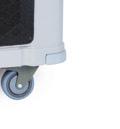












Bioquell
L-4


Help eliminate microbial contamination from exposed surfaces with systems providing validated cycles for enclosures and equipment.









A scalable service response option with validated results to help quell emergency contamination events to scheduled shutdown periods.

therapies, including support that provides the efficient transfer of a process all the way from development into manufacturing.
“One of the ways that CBM accomplishes this is by establishing the same scale of manufacturing platform in the process development area that is involved in manufacturing. This is pretty unique as companies usually don’t have large scale process development capabilities,” explains Moore.
“We’ve also recognised that there are unique challenges for cell therapies. We are dealing with patient specific cell therapies as well as the shelf cell therapies, and they differ vastly in complexity and scale.”
One of the challenges commonly encountered with patient-specific cell and gene therapies (CGT) is being able to efficiently receive patient material to engineer, move it rapidly, and then through the manufacturing process get it back to the patient quickly.

CBM has innovatively established

121 North Center Drive
North Brunswick, NJ 08902
+1 732 422 7585
bione@distekinc.com
www.distekinc.com
At Distek, quality and innovation are at the forefront of our bioreactor solutions. Our BIOne 1250 control station has revolutionized bioprocessing for both mammalian and microbial models. With a sleek appearance and intuitive touchscreen interface, the BIOne 1250 is designed to be the easiest-to-use and most capable standalone controller on the market, making it ideal for both novice and experienced users.

Our BIOne interface puts full control of all bioreactor parameters in your hands, providing real-time data on all bioreactor parameters. This empowers you to easily optimize bioprocess performance for optimal control and efficiency.
The standard controller options, including OPC and Additional Input & Outputs, significantly expand the capabilities of the controller, providing end-users with almost infinite process expansion potential. This feature allows you to engineer and develop future bioprocesses with ease.
In addition, the BIOne 1250 can seamlessly transition between Distek’s autoclavable and single-use bioreactors in seconds, offering versatility for all bioprocessing needs.
Distek’s bioprocessing solutions offer a range of options to fit various process needs, including the BIOne single-use bioreactor available in 2L, 5L, and 10L working volumes, which can be customized above and below the headplate for specific applications.

The BIOne single-use bioreactor exemplifies the industry’s growing preference for single-use technologies, eliminating the need for assembly, cleaning, or sterilization, resulting in an efficient and hassle-free solution for bioprocessing applications. Assembled in Distek’s advanced ISO-7 cleanroom, the BIOne SUB is then gamma-sterilized, significantly reducing the risk of contamination, ensuring that the bioreactor is ready to use immediately upon delivery.
The BIOne’s versatility and compatibility with a range of bioprocess controllers make it an ideal choice for researchers, scientists, and bioprocess engineers seeking a reliable and efficient system for their experiments or production processes. Whether working on complex cell culture models or developing new gene therapies, the BIOne single-use bioreactor provides an easy-to-use and versatile platform for bioprocessing applications, while its scalable design allows for seamless integration into existing workflows.
Contact Distek today at bione@distekinc.com to learn more or schedule your free evaluation.
digital manufacturing capabilities, which take the complexity of paper records and look at ways of reviewing data and streamline it, creating a more efficient process.
CBM’s process development team begins its operations by transferring knowledge from their clients to ensure a robust and scalable process. The company’s platform enables clients to reduce the development timeline and deliver the potentially life-saving therapies to patients sooner.
“We can map the entire journey of a product from early development to commercialisation, building in the requisite milestones to track progress and ensure quality all the way down
the path,” Moore sets out.
In this way, CBM is fully transparent in its partnerships, with an experienced program management team providing clear oversight of a project through regular updates, on-site access, and the potential for dedicated office space with the Partner-in-Plant programme.
CBM, is conveniently located in near Philadelphia- the birthplace of CGT and operates the largest fully integrated single-site development and manufacturing facility for advanced therapies.
CBM serves as a CDMO dedicated
to overcoming manufacturing challenges and providing timely access to life-saving cell therapies. Their 700,000 sq. ft facility has plans to build out 20+ suites each- for viral vector production and cell therapy, with the site offering customisation and expansion options to meet client needs.
Their experienced team supports clients from early development to commercialisation, leveraging a large facility and client-centric program management. CBM offers end-toend capabilities, including process and analytical development, CGMP manufacturing, and rigorous quality control measures.

The Universal Machine and Engineering Corporation specializes in the automating industry. Our fully degreed engineering team is a key part of being a single source solution provider to our customers. Our engineers design and ensure that each control panel, electrical panel, automated system or robotic device works as specified. Quality, reliability, accuracy and safety are at the core of every design that Universal Machine produces. Our customers return again and again because they understand that when they invest in Universal Machine technology, they get the support of a team of Universal engineers to keep their technology running reliably and profitably.
Our symbol, Oscar the Octopus, represents our many arms. These arms symbolize our experience, knowledge and dedication to serve our customers. They are hands which perform in all areas of the house –which means complete control of all aspects of your project.
The Universal Machine and Engineering Corporation team wraps its arms around all areas of system integration, including: design, fabrication, assembly, testing, controls, installation, specification, validation, training and maintenance.




The CBM team is committed to ensuring program integrity through a well-structured chain of identity including streamlined manufacturing processes, execution, and quality systems to minimise hiccups and enhance efficiency.
“Our single-source integrated services simplify the management of programmes and support rapid advancement to clinical trials and commercial production. CBM has the expertise and production agility to keep projects moving, as well as the crucial knowledge of the regulatory environment,” Moore expands.

Forming strategic partnerships within the CGT space requires high levels of collaboration from all parties involved. At present, the cost is high, the production is inefficient, and newer, better methods must be found through these collaborations.
Already in 2023, CBM has kickstarted this process and
has invested in a series of new agreements. In January, the company signed a licensing deal with UK-based Autolomous, a developer of critical manufacturing management systems for CGT.
This will prove to be vital as the future is all digital, and companies require digital batch records. Therefore, artificial intelligence (AI) is needed to help manufacture more efficiently, understand the surrounding manufacturing environment, analyse what makes the best optimal batch requirements, and have data to help support that decision making.
Also, earlier this year, CBM
signed a deal with Boston-based Asimov, to license Asimov’s HEK293 viral vector production platform for use in preclinical and clinical manufacturing. This was followed by the announcement of a new partnerships with Virion Therapeutics, a clinical-stage biotech company focused on the development of novel, adaptable, and accessible CD8+ T cell-based technologies focused on cancers and infectious diseases, as well as a separate partnership with Stoic Bio and Nucleus Biologics, making the company the preferred supplier of cell culture media and other critical biological solutions for CBM.
“WE BRING ALL OF OUR FOCUS AND ENERGY TO WORK, HAVE AUTHENTIC CONVERSATIONS AND HAVE FUN WORKING WITH OUR COLLEAGUES”
– ALAN MOORE, CHIEF STRATEGY OFFICER, CENTER FOR BREAKTHROUGH MEDICINES
Gemini Bio is proud to support Center for Breakthrough Medicines with custom manufactured cGMP buffers.
GeminiBio has the capability, agility, and speed C> CDMOs require:





Industry Leading Scalability
– cGMP batch sizes from 10 liters to 10,000 liters
Industry Leading Customer Experience
– 48 hour feasibility and 10-week lead times
Industry Leading Solution Capabilities
– water for injection, acids, bases, media hydration, salt solutions, solvents, etc.

Optima is your strategic turnkey partner. Based on renowned platforms using the most advanced technologies, we help you to make fill-and-finish processes more secure, flexible and productive.
The new OPTIMA FillCell is one of our innovative highlights in the ATMP sector. A flexible and modular system for filling valuable cell and gene products with product saving features. Every drop is precious.
- Flexible and modular design
- Maximization of product yield with comprehensive product-saving features
- Flexible, gentle, and safe handling with a format-less transport system
Our partner Center for Breakthrough Medicine, established as a world class advanced therapies CDMO, is equipped with a fully automated and isolated FillCell to enhance their drug product capabilities. The top-of-the-line filling solution reduces product loss while significantly increasing filling speeds.





“The difficulty with early-stage CGT companies is manufacturing and development, which was exacerbated during the COVID-19 pandemic. It was very difficult to procure some of these media and cell culture solutions, so the partnership with Stoic and Nucleus Biologics allows us to be a
preferred partner of choice,” Moore expands.
Part of an exciting time for the company, creating an alignment of interests is crucial to CBM’s plans moving forward as it aims to continue adding new partnerships to its collaborative roster.
From the outset, CBM recognised that it must empower its employees, and because of the breadth of services and specialisation that the company offers, this cannot be driven from the top down.
Specific staff achievements are regularly acknowledged at town hall meetings where the heads of the business units recognise the teams that have had success and accomplished
great things.
Looking to increase its already excellent strand of community engagement, CBM works with the Orphan Disease Center at the University of Pennsylvania. This is alongside its ongoing work with the Emily Whitehead Foundation and the Friedreich’s Ataxia Research Alliance.

Individuals or spokespersons for these companies are often invited to come and visit on site to motivate CBM’s team and interact with them.
Similarly central to all its success is CBM’s remarkable team of people that includes some of the brightest minds in the industry, who continue to build and innovate the extraordinary.
Everyone involved at CBM shares the same passion for saving and improving patients’ lives. This unifying culture drives its staff every day and
as the operation continues to expand, CBM is always seeking to add and enhance like-minded talent to its team.
“We have one of the most experienced teams in the industry at present, including pioneers in cell therapy and viral vector manufacturing – and the largest single-site facility in the world that is truly state of the art and located in an

ecosystem of heavily invested, worldclass biotechnology companies,” Moore outlines.
Upon joining CBM, new team members find themselves immersed in a culture dedicated to progressing advanced therapies to the clinic as fast as possible. Through this successful environment, CBM empowers its people to share ideas, innovate and collaborate, as every
voice is valued in the mission of bringing life-changing therapies to patients in need.
Ensconced among a team of peers and mentors with strong scientific and technical prowess, and proven experience in bringing advanced therapies to market, CBM inspires its staff to play their part in unearthing the next big breakthrough.
With the support of cutting-edge technology, an elite level of industry pioneers and a patient-centric company culture, there is no limit to what CBM can achieve.
Tel: 866-274-4009
breakthroughmedicines.com
“WE CAN MAP THE ENTIRE JOURNEY OF A PRODUCT FROM EARLY DEVELOPMENT TO COMMERCIALISATION, BUILDING IN THE REQUISITE MILESTONES TO TRACK PROGRESS AND ENSURE QUALITY”
– ALAN MOORE, CHIEF STRATEGY OFFICER, CENTER FOR BREAKTHROUGH MEDICINES
NOVO Health Services focuses on improving the patient experience, infection prevention and cost savings that do not impact service or quality. At the core of this mission is a new flagship facility and transformational merger, as President and CEO Karl Fillip tells us
Writer: Jack Salter Project Manager: Felix RevellGrowing up around the industry and telling my friends what my family did for a living was always met with a little bewilderment and surprise.”
The industry referred to in the fond recollections of Karl Fillip, President and CEO of NOVO Health Services (NOVO), is that of healthcare laundry. Having clean and hygienic laundry is essential for hospitals, providing a safe environment for patients and staff while preventing the spread of infections.

Fillip often refers to healthcare laundry as a “neglected industry”, however, one that flies under the radar
and comes with challenges but also tremendous growth opportunities for companies that do things the right way.
“There are plenty of opportunities in healthcare laundry for those that are committed to putting the patient first, being true partners in the supply chain to our clients, and spending the capital needed to stay at the vanguard of infection prevention, patient comfort and safety, while eliminating excess waste and costs,” he says.
“Historically, the healthcare laundry space was very disaggregated, but over the past several years a few dominant players have moved the



80,000 square feet
18 module tunnel washers
20 dryers
Three sling loaded pass-through washer extractors
Five large piece ironers
One small piece ironer
Four blanket folders
10 small piece folders
Two folding robots capable of processing 2,400 garments per hour
needle considerably in terms of consolidation. At the same time, the amount of automation and product advancements that reduce overall costs while improving the patient experience have allowed early adopters to differentiate themselves and create win-win scenarios for all stakeholders.”
Headquartered in Atlanta, Georgia, NOVO was established in 2015 by Fillip’s father and namesake, Karl Fillip Sr., an industrial and healthcare laundry veteran.
Having sold and ultimately departed his previous healthcare linen business, Fillip Sr. was asked by several former customers to consider opening a new company in partnership with Tuckahoe Holdings (Tuckahoe).
The launch of NOVO represented a unique opportunity for Fillip Sr. to build a new platform, that addressed all of the shortcomings he and the management team had seen in healthcare laundries of the past.
“We spent a lot of time in our customers’ shoes, understanding what their pain points were with healthcare linen and where we as a newcomer could provide the most value to the supply chain,” says Fillip.
Originally introduced to the team at Tuckahoe whilst working for a private equity firm in New York, Fillip was approached by Tuckahoe with an offer to join his father at NOVO, one of the fastest growing companies in the healthcare linen space generating revenues of over $200 million in 2022, up from $7 million in 2015.
The company provides a complete set of reusable linen products for end
A-1 Products Inc. began selling laundry and drycleaning supplies in 1961 in Birmingham, AL. In 2008, it opened a warehouse in Marietta, GA. Out of these two warehouses, it delivers on its own trucks to the Southeast, but also covers customers outside its delivery area by common carrier.
We have diversified our product line over the years and now our customer base includes industrial laundries in the healthcare sector such as NOVO Health Services along with hospitals and nursing homes. Other sectors include linen plants, uniform rental, formal wear and party rental companies.



We have expert representatives helping put the right program into place for our customers to maximize all their cleaning capabilities. They can also recommend the correct packaging to make sure everything a laundry or drycleaner is sending out looks professionally packaged. With an inventory of over 3,000 items, A-1 Products is fully stocked to fill its customers’ needs. But on the rare occasion we do not have an item in stock, we will source the product and have it shipped direct! We look forward to helping in any way possible.
Birmingham, AL 205-787-1403
Marietta, GA 404-428- 5545
www.a-1products.com


markets in both acute and sub-acute care, including bed and bath linens, patient and staff apparel, microfiber and dust control, and cubicle curtains. NOVO’s advanced technology product offerings of Cupron Copper and DermaTherapy® linen reduce the incidence of infections.
“We offer management services for in-house linen distribution as well as third party management services for healthcare systems that own their laundries but do not have the internal resources to manage a laundry operation. We also provide sterilisation services for reusable textiles and surgical instruments,” notes Fillip.
With 12 processing facilities in the Midwest and Southeast, NOVO services over 2,000 clients and has an employee base of over 1,600 associates.
Servicing the healthcare industry means that NOVO has very stable demand and can plan workflows accordingly, on a mission to improve patient outcomes by enhancing their experience and reducing the risk of hospital-associated infections (HAIs).
“Through this mission, we have selected products that improve the patient experience while appropriately managing the average cost to serve a patient. As a result, we have a strong following of clients and over 99 percent customer retention over the
company’s history,” Fillip acclaims.
Representing a significant investment in this core mission to put the patient experience first is NOVO’s new state of the art healthcare laundry processing facility, opened in South Florida in April 2022.
The site, which stands at 80,000 square feet, was designed and constructed with a strong focus on infection prevention and employee well-being.

“WE LOOK FORWARD TO FUTURE PARTNERSHIPS THAT CREATE AS MUCH VALUE FOR ALL PARTIES AS OUR MERGER WITH PARIS”
– KARL FILLIP, PRESIDENT AND CEO, NOVO HEALTH SERVICES

KSE Suppliers has been a go-to sourcing partner for wholesale buyers in the hospitality, healthcare, and institutional industries for over two decades. Offering traditional and high-tech textiles and materials, KSE has established a renowned reputation for providing high-quality and high-value institutional linen essentials. Their product range spans across 15 categories, including towels, washcloths, cleaning supplies, patient and professional

“This is NOVO’s new flagship facility, and the template for all our future plants. A lot of what we built into the plant wasn’t just geared towards meeting today’s standards of healthcare linen processing, but anticipated changes in the future,” outlines Fillip, who was instrumental in designing the facility.
From an infection prevention standpoint, it includes sling loaded pass-through washer extractors, cart washers that use hypochlorous acid which is more environmentally
– KARL FILLIP, PRESIDENT AND CEO,friendly than standard chemicals, and sonic air fans to keep lint to a minimum throughout the day and reduce the risk of contaminating clean linen.
In terms of employee well-being, NOVO recognises laundry is not an easy job, and that its future is tied to being the best healthcare laundry in the world to work for.
“Laundry is very labour intensive, and with our new plant, we set out a goal of making sure we minimise the amount of fatigue while our associates perform their job,” Fillip shares.


“Every machine, including ironers, blanket folders, and small piece folders, receives linen automatically, presented in an ergonomic fashion where the operator never needs to twist, turn, or bend over.
“This is a huge leap forward in terms of employee satisfaction and efficiency gains, as the operators are able to complete their jobs faster with less effort,” he continues.
As part of the endeavour, Fillip joined the Healthcare Laundry Accreditation Council (HLAC) board of directors, the body that monitors and accredits laundries that meet the
“A LOT OF WHAT WE BUILT INTO THE PLANT WASN’T JUST GEARED TOWARDS MEETING TODAY’S STANDARDS OF HEALTHCARE LINEN PROCESSING, BUT ANTICIPATED CHANGES IN THE FUTURE”
NOVO HEALTH SERVICESMiami garment system



standards of care required to properly serve the healthcare market.
“This allowed me to get a closer look not only at current standards, but where the industry as a whole was likely to go in the future.”
Bringing his M&A background to NOVO, Fillip has been able to lead the company to several other acquisitions and joint ventures during his tenure.
This includes a transformational merger in 2020 with Paris Healthcare Linen Services (Paris), a leading regional provider of linen processing and management services, that unlocked the potential of both companies.

“Our cultures were highly aligned, which created a strong foundation for the merger to start from,” details Fillip.
“Paris was the number one player
in their market and had a reputation as a world-class operator with welldesigned and maintained plants.” The merger turned NOVO into a supra-regional competitor and combined two exceptional senior leadership teams.
Paris was owned by David Stern and grew in a conservative fashion over its 30+ year history in healthcare linen, pioneering best practices used throughout the industry and possessing a tremendous amount of talent that NOVO felt could be better utilised with a more aggressive growth strategy.
“NOVO’s approach to sales, marketing, and creative partnerships allowed us to combine an ultra-high growth company with a best-in-class operator that brought a tremendous amount of bench strength to the table,” Fillip explains.
“This allowed NOVO to continue its growth trajectory by ensuring we had the right people in the right seats. As a result, we’ve added an additional $40 million of revenue in the two years since the merger, all whilst battling COVID-19 and rampant inflation, and continue to have unlimited growth potential in front of us.”
In terms of how the deal came about, Stern was known to the Fillip family for several years and helped Fillip learn the ropes of healthcare laundry upon joining NOVO, even offering him tours of his Paris plants.
The two stayed in regular contact, and Stern, who cared deeply about Paris, set out to find the right home for the hometown business he had built.
It is NOVO’s ownership structure and vision that makes it an acquirer of choice for family-owned businesses such as Paris, who are not just looking
to sell their business but one day find the right home for their business and employees.
“Based on everything he had learned about me and NOVO, he determined that we were the best strategic fit for his company and the best home for his Paris family. As a result, we privately negotiated and executed the transaction,” Fillip informs us.
“I think a big part of what Stern found appealing is we are still a family business at our core. We are far more interested in building a company that serves a purpose and provides the best value possible in our one small piece of the healthcare supply chain.
“Our flexibility allows us to create a win-win structure with our new partners, and we look forward to future partnerships that create as much value for all parties as our merger with Paris.”
Another of NOVO’s organisational strengths is the partnerships it has with key suppliers, who are critical to the company’s ability to serve its customers.

“From making sure we never missed a beat during the COVID-19 pandemic, to ensuring we are able to provide our services at the most competitive prices possible, our vendors are a key component to our success,” emphasises Fillip.
NOVO has worked with chemicals vendors, for example, to create its own proprietary formulations that result in longer linen life, improved cleaning, reduced impact on waste streams, and lower costs.
The company also partnered with Kannegiesser ETECH to integrate ergonomic laundry equipment throughout the new laundry processing facility in Miami, and works with textiles suppliers on a regular basis to design products that improve

the patient experience and mitigate the overall cost of serving a patient.
It all ties into NOVO’s number one goal of 100 percent customer retention, which can’t be achieved without providing a flawless service with best-in-class value propositions for clients.
“Beyond that, we are looking to find additional strategic partners that will allow us to bring our unique strategy of healthcare laundry to additional markets that could benefit from our approach to partnerships, grounded in always finding a way for both parties to achieve their end goals,” Fillip concludes.


Writer: Phoebe Harper | Project Manager: Felix Revell
Hospitals are bricks and mortar, but it’s the people on the inside that make them what they are.”
With an expansive footprint encompassing the Tri-County area of South Carolina (SC), Roper St. Francis Healthcare (Roper St. Francis) stands out as an historic, trusted care provider defined by its values and community-centric culture.
Leading with a steadfast value commitment to offering convenient, high value and clinically integrated care to the Lowcountry region, the opening words of Roper St. Francis’s Chief Operating Officer (COO) and Senior Vice President, Kevin Hoak, encapsulate the ethos that best defines the organisation as one that cares for its people – both externally, and internally.
“We have been a trusted source of healthcare over the past 100 years for folks in this region,” Hoak continues.
As the only non-profit, independently run healthcare system in the Lowcountry, Roper St. Francis encompasses an extensive selection of assets across the Berkeley, Charleston and Dorchester counties, employing over 6,000 individuals within its many sites.
The majority of these assets are in Charleston County, including three hospitals and several physician sites. Elsewhere, Roper St. Francis’s newest facility is located in Berkeley, where the organisation broke new ground by opening the first hospital to offer services in that county in 45
years. The latter is a site of continued development with upcoming plans for further expansion.
“We provide the most convenient care in the Lowcountry across all those sites of care. Our goal is that we want our patients to be able to go anywhere in our system and receive great care as conveniently as possible,” Hoak outlines.
In addition to the care provided internally, Roper St. Francis upholds a commitment to being an employer of choice, as an organisation that looks after its own and thereby fosters an organic company culture that makes all the difference. This has been reflected by its three-year consecutive status as one of the ‘150 Best Places to Work in Healthcare’, as ranked by Modern Healthcare magazine.
A key factor in making Roper St. Francis both an employer and healthcare provider of choice, is the culture of care that flourishes naturally throughout the organisation.
“Our people are the ones that make it special by how they care for our patients,” Hoak affirms. “But they also create the wonderful culture that we have across Roper St. Francis, from our physician engagement to all the clinicians, nurses and anyone else who works within our walls.”
Working in small, tight-knit communities such as Charleston, Roper St. Francis channels a spirit of community both within its operations and how they relate externally to their
Fostering a sense of family and community, Roper
Francis
delivers quality care that prioritises

One of the biggest lessons learnt from the COVID-19 pandemic was the need for a reliable and flexible workforce across the healthcare industry. Therefore, as a purely vendor-neutral management services provider (MSP) RightSourcing by Magnit works with a robust, national supplier network.
As a result, our model ensures that clients receive the best candidates, at the best rates, with the best efficiencies, which is ideal for unexpected events such as strikes, natural disasters and pandemics.
Through our dedicated partnership with Roper St. Francis Healthcare, we help navigate its usage of contingent workers by compiling an extensive repository of best practises. Moreover, at RightSourcing by Magnit, we have dedicated teams that work closely with client counterparts to provide actionable direction based on the hospital’s needs.
We are also committed to proactively addressing the demand for clinical, contingent workforce requirements, which are achieved through an adoption of tactical measures that are grounded in early implementation and are consistently communicated throughout the workforce. At RightSourcing by Magnit we leverage proprietary, industry-recognized technology and white glove concierge-level service delivery to manage, optimize and adapt our clients’ healthcare contingent workforce. As such, we deliver strategic analytics and insights on four integrated levels – descriptive, diagnostic, predictive and prescriptive. By assessing workforce utilization and expense trends, alongside underlying business drivers, our team consults on the actions our clients should take to optimize current usage and plan for future workforce demands.
In order to garner great visibility and predictivity across the business, our Magnit VMS Discovery dashboards provide our users with a combined historical and contextual data to improve efficiency.
We take all transactional data captured and bring it to
and increased operational effectiveness while maintaining optimal cost structure.
As a consultive partner to Roper St Francis, we work to drive down market labor costs without sacrificing quality or compliance in the following ways:
• Drive increased use of Direct Sourcing and Talent Networks, which saves approximately 20 percent on every engagement that is filled as a payroll order versus an agency sourced order. Our Best in Practice Programs direct sourcing accounts for 18 percent of sources, with a temporary to permanent model.
• Ensure competitive bidding is unbiased and applied universally on all orders, achieved through a Dynamic Market Rate Card as the Not To Exceed and then let competitive elements determine bill rate. We also capture pay rate to ensure consistent quality. Our rates average six percent lower when multiple suppliers are involved versus single sourced.
• Apply systemic market rate Base Interest (BI) with pure vendor neutrality versus static rate card, which empowers managers and enables better rate decisions.
• Enable 100 percent of the marketplace of suppliers (2,600) to be a priority, not just a second thought in a tiered framework.
• Implement and execute cost savings discipline across maximum spend by expanding program reach to be truly enterprise-wide and capturing rogue spend within existing program scope.
Strategic & Visionary Service Delivery

Best-In-Class Technology

Relevant, Actionable Real-Time Data



Proud Roper St. Francis Healthcare Partner Since 2015

Our Purely Vendor-Neutral Model is Different. Find out Why Hospitals Nationwide Choose RightSourcing’s Integrated Workforce Management Platform.



surroundings, taking care of each member of staff, patients, their family members and neighbours with a familial mindset.
“We have a wonderful culture and that starts from within - there’s no way to force it or duplicate it, it’s just something that has occurred over time and all we can do as leaders is foster it,” he says.
“We continue to nurture that culture and try to be engaged with all of our employees and physicians. When you’re with Roper St. Francis, we look at you as family.”
Although a continual mindset that has always defined Roper St. Francis’s method of operation, this rose to the fore particularly during the COVID19 pandemic, when the organisation proved itself as a critical touchstone for the Lowcountry communities.
“The community looked to us and our knowledge for updates and what to do to try to keep themselves safe. I think we did a great job by continually providing them with information regarding what we knew at that given moment for the disease,” Hoak shares.
Hoak’s own career path reflects a personal passion for hospital management, administration and the multi-faceted aspects of working in healthcare organisations, having held
positions at Virginia Hospital Center in Arlington, VA; HCA at Presbyterian Saint Luke’s Hospital in Denver; and at Saints Mary and Elizabeth Medical Center in Chicago.
“I have always been interested in healthcare and all its different elements, including the clinical, and non-clinical administration functions,” he comments.
In his current role as both Senior Vice President and COO at Roper St. Francis, Hoak oversees all clinical and operational strategies, including managing partnerships with key constituents.
“It has been a rich career trajectory that has exposed me to the many different elements of working in hospitals. Now that I find myself down here in Charleston, I am extremely excited by all the work that we’re doing moving forward.”
A key part of this direction is the strategic plan that was devised in 2022. This entails major developments organisation-wide, including a $1 billion investment into the upcoming relocation of Roper St. Francis’s primary facility, the Roper Hospital, an expansion of Berkely Hospital, and the implementation of a system master plan designed to optimise operations and streamline inter-regional communication across the sites.
sites. In addition, the organisation implemented the human resources (HR), finance and planning system, Workday, to optimise the back-office management.
“Epic was an easy choice for us since it was a better solution to deliver care to our patients. The previous EHR we had in place - the ambulatory or the physician office sites, was different from our hospital sites. As a result, you couldn’t see everything depending on where you were in that patient’s journey,” he elaborates.
Through Epic, Roper St. Francis now benefits from a single patient record system, meaning that every individual’s healthcare journey is easily accessible at any location.
“Effectively, this allows us to provide safer care to individuals, while also delivering higher value since we can assure that we now see lab or imaging results from our different sites of care, so we aren’t running extra tests in case we weren’t aware of those results, whereas before we may not have seen them.
“It’s a major advantage from a patient, quality, and value standpoint.”
Another critical area of optimisation made possible by advancements in technology, entirely geared towards the all-important value of convenience, is Roper St. Francis’s Hospital at Home programme.
• 1,000 doctors
• Four hospitals
• Six emergency rooms
• 117 facilities
• Six Express Cares and Walk-in Cares
An integral component of the strategy plan was moderinising various technological improvements that are being implemented to heighten convenience and efficiency throughout the system.
“When we rolled out our 2030 strategic plan, one of our initiatives was to modernise technology,” he says.
A major initiative in this regard came in 2022, when Roper St. Francis converted to the Epic cloud system to streamline communication across its many hospitals and ambulatory
“We’re really excited about Hospital at Home – especially because of the technology that we have and how it will develop to help monitor our patients. We have a great leader, Troy Powell (Vice President of Continuing Care) who has spearheaded that programme and really has been a champion internally to us, but also externally throughout the state,” Hoak tells us.
To date, the programme has delivered numerous reports of patient satisfaction and rewarding stories from those who have participated.





Primarily, such feedback centres on the convenience and comfort of being delivered care in a familiar environment, free from the hazards of a hospital setting where patients may suffer the impacts of being in unfamiliar surroundings, for instance falling over, or the distress of being distanced from their personal support systems.

Another hugely attractive aspect of Hospital at Home, is its ability to free
up beds at Roper St. Francis facilities for those who do require treatment in hospital. This is becoming an ever more prescient concern, as the population across Charleston continues to grow.
“We think Hospital at Home has a definite spot in our portfolio moving forward,” he continues. “We don’t want patients to be waiting in our Emergency Departments (EDs), we want them to get into a bed if needed.
“ WE HAVE A WONDERFUL CULTURE AND THAT STARTS FROM WITHIN - THERE’S NO WAY TO FORCE IT OR DUPLICATE IT, IT’S JUST SOMETHING THAT HAS OCCURRED OVER TIME AND ALL WE CAN DO AS LEADERS IS FOSTER IT”
KEVIN HOAK,
“If we can free up some more beds by having them enroled in Hospital at Home, then that’s a great thing.”
Ultimately, Hospital at Home returns to Roper St. Francis’s goal of delivering convenient, patient-centric care.
“In our minds, we want patients to be able to receive the majority of their care near where they live or work. Of course, you may need to travel further for tertiary or quaternary level care if you have a unique disease or require a certain procedure, but for the everyday type of medical treatments or care, it’s our vision that you should receive that in your community,” Hoak observes.
A healthcare provider of ambition, Roper St. Francis is currently involved in three major projects, including the launch of a new ambulatory hub in Summerville and the aforementioned expansion of the Berkeley facility. However, its most significant undertaking, announced in 2022,



concerns the $1 billion relocation of the Roper Hospital.
“Currently, our main hospital, which is our tertiary and quaternary facility and the hub of our system, is located down at the very tip of the peninsula in Charleston,” Hoak explains. Roper Hospital’s current location complicates the need for expansion and carrying out important updates. Consequently, after exploring several avenues and analysing patient demand, the decision was made to entirely relocate the facility.
“We are going to build a brand new medical campus for Roper Hospital located between Interstates 26 and 526 in North Charleston,” he shares excitedly. “It’s going to be a brand new $1 billion state of the art project that will allow more people to access Roper St. Francis care across the TriCounty area.”
Currently in the planning phase, construction is due to get underway in the near future.
“We’re really excited for that

project, and I think the community is as well.”
Catering to an ever-growing family of patients in line with escalating population levels across the Lowcountry, Roper St. Francis is rising to meet the challenge, expanding its reach while adhering to ever-evolving technological advances.
“We’re continuing this journey in delivering our core value commitments of providing convenient, high value, and clinically integrated care, and our precedence for doing so is in the name of patient satisfaction and quality. We’re extremely excited where Roper St. Francis is going in the future,” Hoak concludes.

As the healthcare industry in the US adjusts to the impacts of the COVID-19 pandemic, what becomes clear is the great significance of the on-the-ground workforce which maintains streamlined operations.

As a specialist healthcare cleaning company, Xanitos helps save lives by partnering with over 100 medical centers across 23 states.
The US healthcare management sector was placed under tremendous pressure during the COVID-19 pandemic. Throughout this period, healthcare partners utilised their leadership and service mindset as they expertly balanced the standardisation required for regulatory preparedness with the customised needs of each hospital.
Due to the specialised skillset possessed by Xanitos, the company has upheld its position as a leader in continuously providing the highest levels of service and infection prevention within the environmental services field.
CEO of Xanitos, Dave Crothall, comments: “With a laser focus on reducing costs and increasing revenues, healthcare organisations need partners in non-core services to effectively reduce costs, whilst maintaining a high quality of care that avoids future expenses.”
From a wider business perspective, COVID-19 put considerable strain on companies that served business and industry clients, as well as corporate and higher education clients.
Consequently, revenues serving these industries were negatively impacted, which risked affecting various healthcare clients. Fortunately, Xanitos’ healthcare partners were insulated from many of the knock-on effects impacting other industries.
“Our organisation remained at the ready as we adjusted to client needs, responded to unique requests and stepped up in every way possible,” observes Dave.
Quite simply, Xanitos helps save lives. Its dedicated team members make up a specialist healthcare cleaning company that is an onsite environmental services leader. The specialised services offered by Xanitos include hospital housekeeping, as well as ambulatory cleaning services, patient transport, linen distribution, linen processing, patient observation, and support service staffing.
As a service-based company, Dave tells us how people are at the heart of its business.
“While we utilise a number of vendors in purchasing supplies, equipment and software, we follow a similar philosophy of respect, alignment, service and communication to ensure our vendor relationships are mutually beneficial, well-tenured and in support of our mission to save lives.”
Xanitos seeks out experts in their
field who can oversee and implement the best practices possible, whilst customising its services to the specific needs of the hospital. Subsequently, the company has a great appreciation for the multitude of vendors that ensure the smooth running of services.

Xanitos meticulously selects its business partners to ensure that capital investments are allocated effectively. A noteworthy example is the company’s acquisition of Legion Building Services (Legion), which provides differentiated outpatient ambulatory cleaning services. This service facilitates diversification of its cleaning services and is a vital part of Xanitos’ strategy to become a healthcare cleaning specialist beyond acute care facilities to serve the entire continuum of care.
Consequently, Dave stresses the importance of cleaning services such as Legion.
1. Xanitos supports the use of reusable linens as opposed to disposable linens. Many healthcare facilities use disposable products.
2. Xanitos utilises UVC light technology to neutralise microorganisms as part of its laundry cart cleaning process. This process significantly reduces the amount of water and chemicals normally utilised.
3. The company uses ratio metric washing systems that perfectly match the amount of water and chemicals needed for every single wash batch. This ensures fully adequate and minimum water and chemical use in the washing process. Environmentally friendly chemicals are also used alongside reduced temperature products to minimise the use of steam heated water.
4. Xanitos utilises delivery trucks less than five years old with best-in-class diesel fuel efficiency.
5. Whenever possible, Xanitos upgrades and installs more efficient laundering equipment.
6. Finally, the company recycles generated waste materials such as plastic soiled linen bags, cardboard, pallets, and retired linen to keep pollutants out of landfills.
“Through Legion, healthcare organisations will realise standardised operations, regulatory readiness, best in industry staffing and education, cost savings, and a true partner in saving lives under the umbrella of one healthcare cleaning specialist.
“Given the fragmentation of the outpatient cleaning space today,





which is primarily serviced by local commercial janitorial companies, Xanitos is seeing considerable interest in our value proposition with Legion.”
Xanitos also invests in both hardware and software R&D internally, as seen by the Xanitos Room Optimization (XRO) System which involves a team cleaning process in
combination with a patented vacuum system. This initiative has made a meaningful difference in creating a safer patient environment and demonstrates Xanitos’ efforts to continuously prioritise patient safety and patient experience metrics.
Xanitos works hard to balance the importance of innovative vendor partners, who can support its mission to save lives, and investments in its frontline team members who are the driving force in delivering services to its hospitals across the country. In response to this, Xanitos has made a concerted effort to streamline the employee experience with investments in software that improves payroll, time management, recruiting and education sectors.
“These systems, while valuable and an integral part of Xanitos’ own recruiting and education programmes, are designed to supplement and streamline, but not replace employee acquisition,
retention and career development programmes.”
Xanitos’ main focus is to create a proactive and efficient workforce. With this priority, the company invests in employee experience programmes, mentorship and workshop events to attract, retain and grow the most effective hospitality employees. Each of these initiatives are meant to provide the skills and tools for frontline teams to be successful as well as engaged.
This strategy has proved successful in the tightened labour market, as Xanitos’ industry-leading recruitment team has consistently and programmatically improved staffing levels. In more than one instance, they have observed staffing levels at 60 percent or lower and leveraged their recruiting resources to raise levels to over 90 percent within the first 90 days.
Xanitos’ recruiting methods are recognised across the industry and
have been requested by hospital partners to assist in recruitment across support services. Currently, the company is also being leveraged to support its clinical partners and relieve nurse staffing challenges by providing patient observation assistants.
For anyone who observes Xanitos’ culture, it’s obvious there is a clear focus to promote from within, as the company strongly believes that the best way to recruit is to retain.
“Our approach? Grow our people with a particular focus on frontline hourly team members and frontline managers. This growth is supported by a variety of training programmes, online learning systems, mentorship, and tuition reimbursement programmes at select facilities.”
To further its employees’ expertise, Xanitos is proud to deliver education programmes for both frontline team members and managers. The programmes are led by the National Director of Education and Safety, Kelly Griswold, who alongside the education team, has created a multitude of programmes to support the initial and ongoing success of the frontline team members and managers.
Xanitos comprises a diverse workforce, with over 70 percent being non-white and 60 percent of the team identifying as female. Furthermore, Xanitos has created a management roadmap, which has proven successful in growing the leadership team at
DAVE CROTHALL, CEO: “Xanitos remains focused on what matters: to save more lives. In 2023 and beyond we seek to further our mission by expanding our retain and grow strategy to include both organic and inorganic growth.

“These two avenues for growth are working hand in hand so that we remain a specialist in healthcare cleaning, save more lives and expand our partnerships with existing clients to ensure that we are the first point of contact for all cleaning and adjacent services.

“For new clients, we will aggressively pursue new partnerships with healthcare organisations seeking to optimise value through a combination of cost reduction and cost avoidance as part of long-term partnerships that foster an environment of mutual prosperity for both organisations and our aligned teams.
“Xanitos will remain a healthcare specialist, believing the best avenue to retain and grow our mission is to retain and grow our people.”
Xanitos, with a predominant number of managers being women.
Dave explains: “The fundamental concept behind the roadmap is the idea that all of us require a sponsor or advocate to pull us up. Promotions can be intimidating to pursue and the promotion from frontline associate to manager is perhaps the largest jump a leader can take.
“However, an aspiring, high performing frontline team member is often the best recruit. They are familiar with our business, know the culture of the organisation, have shown an ability to work hard and by taking on a promotion, have the determination and courage necessary to be a leader.”

In just two years, the company’s
management turnover has reduced by 65 percent and frontline turnover by 25 percent, much of which can be attributed to a combination of investments in developing frontline workers to managers.

When speaking to Dave, it’s clear how passionate he is about Xanitos’ main mission to help save lives.
“Ultimately, the more lives we help save, the greater our organisation’s financial success. This is not the case with big box contractors who generate more profit through purchasing than they do in providing service.
“Xanitos’ alignment of mission and specialisation guides every
resource allocation decision, fuels the innovations we seek out and design, the programmes we create, the leaders we select, and the culture we have created.
“It allows us to be nimble, look around the corner for future risk and opportunity, and be ready to serve our healthcare partner needs, no matter the ask,” he concludes.

XANITOS
Tel: 484-654-2300
info@xanitos.com
Xanitos.com

“XANITOS IS NOT ONLY A CLEANING SPECIALIST BUT A COMPANY DEDICATED TO HEALTHCARE. THIS ENSURES WE MOVE IN LOCKSTEP WITH OUR HEALTHCARE PARTNERS AND ARE NOT IMPACTED BY MACRO-ECONOMIC TRENDS IN OTHER INDUSTRIES”
– DAVE CROTHALL, CEO, XANITOS

As deathcare undergoes a technological transformation, Carriage Services’ coFounder, CEO, and Chairman of the Board, Mel Payne gives us an insight into an industry where compassion is key
 Writer: Rachel Carr | Project Manager: Felix Revell
Writer: Rachel Carr | Project Manager: Felix Revell
The unavoidable business of death is one of society’s least discussed topics. Nevertheless, the deathcare industry has developed over time into one of the most successful markets.
At some point, everyone will rely on the services of a funeral home, but the emotional experience attached to it needs a compassionate and sensitive approach - an attribute which Carriage Services specialises in.

“How you take care of a family, how you make them feel, and how you help them celebrate a loved one has been, and will continue to be, the most important focus of our profession,” opens Mel Payne, co-Founder, CEO, and Chairman of the Board of Carriage Services.
Headquartered in Houston, Texas, the organisation combines tradition with digitisation as a result of the COVID19 pandemic, which was a time for innovation across all sectors.
Historically speaking, the deathcare industry has been around for over a century, ever since soldiers’ bodies needed embalming in order to preserve them for the long and arduous journey home from the American Civil War.
The process started to gain traction after Abraham Lincoln’s funeral procession in 1865; the public were impressed when they viewed the well-preserved body, realising the embalming process allowed more time for customs to enter the mourning period.
However, the idea of an actual ceremony using the services of a funeral home did not become widespread until the 20th century. This is when the industry experienced exponential growth between the years 1865 and 1920, with almost 25,000 funeral homes established in that time frame.
Up until then, funerals were organised by family members, friends, and neighbours, when tradition dictated that burials take place on family property. As communities became larger and more settled, cemeteries began to be utilised.
Firstly, could you briefly introduce Homesteaders Life Company (Homesteaders)?
Homesteaders is a national leader in providing products and services to promote and support advanced funeral planning and funding for end-of-life expenses. Since issuing our first policy in 1906, Homesteaders has emerged as the trusted name in the funeral profession because of the stability, security and integrity of our preneed products. We are a mutual company, owned by our policy holders, so we are accountable to the families we serve. Today, Homesteaders serves about 3,000 funeral homes across the country. We employ more than 250 employees nationally, with about 75 percent working out of our home office in West Des Moines, Iowa. Many of our team members are industryleading account executives in the field, so we have a very deep understanding of the day-to-day realities of the work. We pride ourselves on our positive culture and are consistently recognized as a Top US Workplace.
Homesteaders has been operating for almost 120 years. Can you elaborate on the company’s history and the industry expertise that stems from this?
Homesteaders traces our roots back to the early 1900s when very few families had breathing room for large expenses. The death
of a loved one could cripple their financial position. As John E. Paul assisted families in his community in Des Moines, Iowa, he realized the financial disruption caused by death was largely due to the unexpected cost of funeral and burial services. So, in the fall of 1905, he proposed a solution: The Homesteaders, a small, fraternal benefit society dedicated to helping families plan and pay for final expenses. Under John’s leadership, The Homesteaders issued Policy Certificate Number One on 24th February, 1906. By the end of that year, more than 500 families had secured end-of-life funding.
As Homesteaders enters our 118th year of providing secure, reliable funeral funding, we operate at the intersection of the funeral profession, the insurance industry and the consumer market. We are focused on understanding how each of these areas influences and impacts the consumer’s end-of-life experience.

-----
Since Homesteaders is owned by its policyholders, we are not accountable to shareholders but to the families we serve. We are a monoline company, solely operating in the end-of-life space, so we’re unique in our ability to focus on the needs of funeral providers without having to split our resources between competing business units.
Homesteaders has a competitive product portfolio, backed by a secure and conservative investment strategy and more than a century of financial strength and stability. We offer comprehensive marketing and operational support to help funeral providers connect with more families than ever before, including everything from lead generation and text-based aftercare to appointment setting and online funeral sales, all centered around EnGauge, a robust customer relationship management system (CRM) custombuilt through Salesforce.
Homesteaders also partners with more than 40 of the profession’s leading marketing organizations, so our customers can pick the firm that is the best fit for their business. When you combine all of that with loyalty programs like PartnerPoints® and Casket Price Protection as well as our new Funeral Home Conventional Business loan program, you get a comprehensive offering that is difficult for any competitor to match.
-----
We have made significant investments in the last few years in emerging new technology that has helped funeral home customers and agents respond to a shift in the way consumers shop for and purchase their funeral plans. We introduced eFuneral, a unique digital sales and lead generation platform that empowered funeral homes to attract, convert and close preneed and at-need sales. We partnered with insurtech companies like Benekiva to streamline our claims submission process.
Additional investments like our award-winning text-based aftercare program and our in-depth consumer analytics engine
have provided funeral professionals with tools to help them better serve families without increasing headcount.

How did Homesteaders adjust to the disruption caused by the COVID-19 pandemic, and how has this adaptation made the company stronger than ever today?
Much of Homesteaders’ response to the COVID-19 pandemic mirrored what you saw at employers across the country, but we also faced challenges unique to our business model. Social distancing requirements prevented our agents and funeral home customers from helping families plan and host funeral services in person, yet the rising COVID-19 death toll drove up demand while simultaneously causing more consumers to think about end-of-life concerns.
Despite the challenges of the COVID-19 pandemic, we maintained the highest degree of operational standards while sustaining forward momentum on key initiatives that will help us achieve our long-term goal of helping funeral homes reach more families than ever before, and positioning Homesteaders as a leading innovator in the preneed space.
Looking ahead, what are the company’s key priorities for the coming year?
We are excited to see many of the investments we have made in the last few years begin to bear fruit. New technology offerings and partnerships have positioned Homesteaders as a marketleading innovator in the funeral profession. Additional investments in the consumer space, including the most comprehensive and detailed market research the profession has seen in decades, have made our partners and customers more connected to consumers than ever before.
As we look at the year ahead, our team is focused on developing even deeper connections with consumers on behalf of our funeral home customers and agents through thoughtful and strategic investments in digital tools, grief support and more, enabling us to provide even better service.

Helping people design a better farewell, benefitting those they love.

The oldest funeral home in the US dates back to 1759 in Williamsburg, Virginia, and was run by cabinet maker Anthony Hay, who made coffins as a sideline. Before funerals became an industry, which is now worth $20 billion annually, women prepared the deceased up until the mid-1800s.
However, it was Abraham Lincoln’s public funeral that prompted the population to crave the same treatment. Consequently, death as a service caught on, with many professions entering the industry and funeral homes eventually becoming the businesses and organisations we see today.
There is a rich history of funeral homes and traditions. Today, funeral directors do much of the same as they did 100 years ago, but advances in technology are beginning to change the profession, as Payne will testify.
It was Payne’s own family tragedy, combined with an entrepreneurial spirit, that inspired him to start a business in the funeral home and cemetery industry. In order to honour the memory of his nephew, Carriage Services was incepted in 1991.
“I experienced the incredible impact that the funeral profession could have on a family and an individual. Following my nephew’s service, I was so touched by the noble work of the team at the funeral home, that I was drawn to the profession,” he shares.
After serving in Vietnam, Payne’s career path led him into the finance sector, subsequently gaining a degree in chemical engineering and earning an MBA.
Carriage Services has always maintained its core principles and industry standards which have been around for decades - for example, service always comes first. In fact, the message is an identifiable fixture of the company.
Although technology is increasingly assisting the process, and making the arrangements more seamless for families today as opposed to 30+ years ago, the sensitive nature of the industry still requires a personal and human touch.
The tools that are now available can help focus on the celebration of life and achieve unique services tailored to the individual being commemorated. However, Carriage Services still values the compassionate attitude its employees bring to the business.
It is an ongoing balance between technology and tradition. As the COVID-19 pandemic was a catalyst for innovation, the industry is undergoing a huge transformation.
“Within our own company, we have grown to a size where we are able to offer more support than ever to the leaders of our business through the very same technology. From marketing help to service, and guest experience ideas, the resources that were unavailable when the company was founded combine to create a first-class and memorable service for our families today,” assures Payne.
As the company is deeply committed to delivering an unparalleled customer experience through creativity and innovation, it has designed a purpose-driven customer journey that involves digital transformation.
“The customer-centric approach is at the heart of Carriage Services, and we are building all our processes around it. We leverage digital transformation principles and apply them to the customer journey, and it consciously revolves around wowing our clients.”
Whether it is through online transactions, phone conversations, or face-to-face engagements, the goal is to exceed the expectations of the families at every touchpoint along their personalised journey.
“From our marketing efforts to the
funeral service itself, we thoughtfully curate an elevated experience empowered by digital mediums. While we are currently in the process of implementing this new customercentric approach, we estimate full adoption will be achieved by 2024,” reveals Payne.
“We are confident that this transformation will solidify our position and create a service excellence moat around each of our businesses.”
With technology on the rise, the funeral industry is likely to undergo many changes over the next few years. From digital death management, to recording memories, innovators are disrupting and transforming an industry which is so quietly fundamental to society, and whose traditions have remained unchanged for decades.
Those same traditions are set continue, albeit in a new and more technologically advanced way.
As death is a delicate subject, the deathcare industry needs a tactful type of employee, and staff and partners must be selected accordingly. Not only does the nature of the business require the correct attributes, but investment in training and development is also of the utmost importance.
Carriage Services takes employment and ongoing training seriously as they play a crucial role in delivering exceptional care to families during difficult times. Therefore, the company places a high value on staff and partners alike.
“We look for key attributes that align with our values and commitment to excellence. Our staff must have genuine compassion and empathy towards the families we serve. This includes being able to provide emotional support, understanding, and comfort during a difficult and sensitive time,” reveals Payne.
Alongside compassion and empathy, sit professionalism and integrity. Individuals must maintain confidentiality, always adhere to ethical standards, and conduct themselves in a professional and respectful manner – in all interactions.
“Effective communication is critical; our staff and partners must possess excellent verbal and written communication skills to convey information effectively, including listening to needs and conveying instructions clearly,” he adds.
There is a code of conduct when dealing with heightened emotions and expectations. The funeral home has an ethical obligation to fulfil and standards to uphold. Moreover, a certain etiquette, professionalism, and courtesy are a given, as well as other skill sets.



Attention to detail and strong organisational skills are essential in ensuring that all funeral arrangements and services are carried out precisely and carefully.
“From coordinating logistics to managing paperwork, our staff and partners must have excellent organisational skills to ensure smooth operations,” Payne notes.
The funeral industry is a dynamic field, and it needs people who can adapt and thrive in changing circumstances. This includes flexibility with work schedules, responding to last minute changes, and being able to remain composed in unexpected situations.
As with most industries, being a team player is vital as collaborative work provides the best outcomes for the recently bereaved. As Payne informs us, Carriage Services seeks people who “support and assist their colleagues and contribute positively to the overall work environment.”
Moreover, funeral services are continuing to evolve since the COVID-19 pandemic. Therefore, a growth mindset and a commitment to ongoing learning and professional development are key attributes.
As a financially strong company with a focus on Preneed, how do these two factors make NGL unique?
Cameron Black, Vice President of Sales and Business Development (CB): Our purpose is to help people face life’s financial challenges with confidence, dignity and grace. We continue to be one of the most highly rated companies in the industry, rated A (Excellent) by AM Best, the world’s oldest and most authoritative insurance rating information source. This reflects our focus on financial stability meaning our partners and policyholders can be confident in
 Cameron Black - Vice President
Cameron Black - Vice President
NGL’s reliability and dependability for the longer term. Our excellent customer service and partnership mentality allows us to be one of the best Preneed partners in the profession by providing flexible

Celebrating a milestone in the Preneed insurance industry, National Guardian Life Insurance Company (NGL) is committed to collaboration and poised for growth.
products, personalized service and tools needed to better help those that we work with focus on their families.
How is NGL celebrating 25 years in Preneed, and what do the next 25 years look like?

CB: Celebrating 25 years in the Preneed space is an important milestone for NGL. With more than a century of insurance industry experience, we are proud to be there for families when they need it. This anniversary also provides an opportunity to reflect on our achievements and look towards the future. We plan on evolving and growing with our partners as the funeral profession changes with trends and technology. We look forward to the next 25 years as we continue partnering with the very best in this profession. Additionally, we are committed to developing the best products, demonstrating high-quality customer service and maintaining a financial position that will allow us to be a continued leader in the industry.
In what ways does NGL’s wholesale distribution model give partners more control over the products their agents sell?
CB: We understand that one size cannot fit all, and we understand that as an insurance carrier we should be focused on being the best carrier for all those we work with. Our expertise allows us to serve partners through connection, collaboration and compassion. Our valued partners know that when they choose to work with us they will receive a true partner carrier that is dedicated to serving and growing their business.
What is the ideal type of partner for NGL and how can you help them grow?

CB: When we partner with organizations, we look for mission statements and values that align with ours. We believe that when we have that same mindset, strong partnerships and long term relationships are formed. We look for partners wanting a carrier that will give them a valuable product at a great service level which allows them to focus on what they do best - providing top-notch service to families. We hope to be an extension of their business that encourages growth and focuses on the future.
How is NGL streamlining its business focus to further enhance its Preneed line of business?
CB: NGL has always had a strong commitment to our Preneed partners and the funeral profession, including our focus on providing dedicated service and valuable product offerings. Selling certain blocks of business further strengthened our financial position and allowed us to simplify and streamline processes which provided an opportunity to enhance our support and customer experience for our valued policyholders, partners, funeral homes and agents.








Keeping updated on industry trends, attending training programmes, and seeking opportunities for self-improvement are all activities that staff and partners should be prepared to do.
“By seeking staff and partners who possess these attributes, we ensure that our team is well-equipped enough to provide exceptional service to our families with compassion, professionalism, and excellence.
“The collective effort of our staff and partners makes our portfolio of businesses truly unique, positioned for high performance, and in full alignment with our vision and mission of being the best,” he affirms.
Carriage Services owns and operates 205 funeral homes and cemeteries in 26 states, employing over 2,500 dedicated staff. Although the company is growing organically with the death rate, the standard of care and dedicated nature of the staff remains the same.


“I have always defined the organisation as a highperformance culture company that just happens to be in the deathcare space. We have a Darwinian culture where only the best of the best succeeds,” Payne proudly states.
To adapt to the ever-changing post-COVID-19 landscape, the company’s entrepreneurial and agile nature allowed the managing partners to pivot and adapt to the different and difficult circumstances. By implementing certain initiatives, it enabled meaningful services to continue in a safe and compassionate manner.

• Virtual Funeral Services: Live streaming allowed families to remotely participate in funeral services and memorials, enabling them to honour loved ones while adhering to social distancing and restrictions on gatherings.
• Drive-Through Visitations: The bereaved paid their respects from the safety of their vehicle. The creative solution allowed families to grieve and express condolences while minimising contact.
• Online Arrangements: Enhanced capabilities afforded families to plan remotely through virtual consultations and online platforms, providing a convenient and safe way to organise the funeral without visiting a physical location.
• Personalized Memorialisation: Virtual memorial walls, digital guest books, and online tribute pages, allowed families to share comforting information about their loved ones online.
• Community Support: Donations to organisations and frontline workers by providing free or discounted services to those in the community affected by the COVID-19 pandemic, also offering support to families facing financial challenges.
Creativity and innovation helped the company adapt to continue providing compassionate and meaningful funeral services, all while prioritising the health and safety of the staff and customers it serves.
“I always believed, and have since proved, that when you find the “right who” and place them in the right seat, you should turn them loose through empowerment. The results are a testament to the high performing power of the Carriage Services operating model.”
The organisation differentiates itself from other companies in the sector by offering opportunities and experiences to partners, staff and clientele, therefore putting people at the core of its values.
“We believe that our staff, partners and clientele are the fuel that powers our high-performance engine, and we prioritise their needs and experiences above all else.
CRC is a leading provider of property damage restoration and general contracting services. When you work with our dedicated team, you get field-tested experience you can trust. And, service you can count on.

OUR SERVICES
Restoration
• Water Damage
• Fire Damage
• Storm Damage
• Mold Remediation
General Contracting
• Reconstruction
• Specialty Healthcare
• Commercial Roofing
CRC Team was very professional throughout the process. Communicated effectively. Was on time and did a fabulous job! Very helpful and kept a good attitude throughout this sometimes-difficult situation. I appreciate their fast and efficient work. Great customer service.
— CHERYL C., PROPERTY MANAGER“Our unique approach is reflected in our flywheel component of “first who, then what”, which emphasises the importance of our people in driving our success,” he elaborates.

The company’s commitment to people is reinforced by its decentralised model, where trust and empowerment are fundamental principles.
“We believe in fostering a culture of innovation and creativity, which sets us apart from other companies in the deathcare industry.

“Our Standards Operating Model and Strategic Acquisition Framework have been thoughtfully and strategically designed to support our high-performance culture company, positioning us as a unique and differentiating force in the industry,” Payne says enthusiastically.
The decentralised approach that the company takes is instrumental in enabling this high performance. The model is built on finding the “right who” to lead a business and then empowering that leader to make the best decisions, including selecting most vendors, for their business.
“Due to our size and scale, we are able to present cost-effective options for our managing partners as it relates to certain products and services.”
2.4 MILLION funerals held in the US each year
$7,000 - $12,000 – average cost of funeral with a burial
$6,000 - $7,000 – average cost of funeral with cremation
19,322 funeral homes in the US
20,272 cemeteries in the US (not accounting for pet cemeteries, hidden graveyards, or natural burial sites used by Native Americans)
“WE BELIEVE THAT OUR STAFF, PARTNERS AND CLIENTELE ARE THE FUEL THAT POWERS OUR HIGH-PERFORMANCE ENGINE, AND WE PRIORITISE THEIR NEEDS AND EXPERIENCES ABOVE ALL ELSE”
– MEL PAYNE, CO-FOUNDER, CEO, AND CHAIRMAN OF THE BOARD, CARRIAGE SERVICES
As a leader in the funeral and cemetery industries, Matthews Memorialization is dedicated to helping our customers grow and thrive in today’s changing marketplace, and helping the families they serve move from grieving to remembrance. We offer innovative products of superior craftsmanship and strategic business solutions that meet the needs of every family, whether they choose burial or cremation.



www.matw.com

This people-centric approach, combined with innovative ideas and creative concepts, sets Carriage Services apart from other companies in the sector. Its commitment to staff, partners and clientele makes it unique, and enables it to deliver exceptional opportunities and experiences that surpass industry standards.
Digital integration, automation, and seamless processes are at the forefront of transforming how Carriage Services assists grieving families with finalising arrangements, ensuring services are conducted in an exceptional manner.
As Carriage Services is committed to excellence and delivering a personalised experience to the clientele it serves, it is working hard on the development of a cutting-edge system called Trinity.
“Trinity is our new enterprise resource planning (ERP) system currently in development and it will replace our existing contract platform.
“Powered by a first-in-class family portal and front-facing engagement tool, Trinity will enable our funeral directors to deliver an elevated service experience like never before,” Payne elaborates.
Trinity will streamline its processes, enhance communication, and provide

an unparalleled service to the families who put their trust in Carriage Services at their time of need.
“The transformation is a testament to our dedication to innovation and continuous improvement.
“We are excited about the positive impact Trinity will have on our ability to serve families with the utmost care and professionalism. We look forward to sharing more about this exciting development in the near future,” he explains.
ERP is the latest innovation in funeral planning and the software is designed for organisations to manage day-to-day planning, while driving agility and success.
Eagle offers the highest levels of craftsmanship and manufactures everything from small monuments to large private mausoleums.


As one of the top producers in the country, Eagle Granite owns and operates quarries from which we get the beautiful Blue Ridge granite (medium blue/gray granite), Eagle Blue granite (a dark blue/gray granite) and Pink Pearl granite (a larger grained pink granite). In addition, Eagle Granite inventories 13 additional granite colors in block form. The company’s five production facilities totaling over 200,000 sq. ft. are able to take the raw granite material and finish it into a memorial made to the customer’s specifications.

We continue to look for innovative ways to improve and expand our operations for our customers!


For more than a century, Batesville ® has worked with licensed funeral professionals to provide products and services that help families remember loved ones and begin the healing journey.
©2023 Batesville Services, LLC


Our founder, Borden Tilley, started the company from his home garage in Williamsville, NY. Over 69 years later located in Pembroke, NY, Ideal Burial Vault is still family owned and operated by Borden’s son and grandson, George and Greg. They continue to deliver the same quality service and professionalism that Borden delivered so many years ago to the Buffalo/WNY area and the Rochester/Finger Lakes area.
Funeral Service earlier this year, are testament to the selective approach of partnering with the remaining larger businesses.
Embarking on advances in technology are only part of the company’s plans for this year, with other key priorities including more acquisitions. Two funeral homes are already in the Carriage Services fold, with another one in the pipeline.
As a consolidation company, Carriage Services prides itself on seeking strategic partnerships, and is committed to maintaining a disciplined approach to acquisitions. It ensures each partnership aligns with its goals and adds value to the organisation.



“Our acquisition framework is highly selective, as we diligently identify premium businesses in growing strategic markets that fit our Carriage operating model,” Payne informs us.
With a vision for excellence, the framework allows careful evaluation of each acquisition opportunity based on its potential to enhance the company portfolio and drive positive financial performance.
The latest acquisitions of Greenlawn Funeral Homes, Cemeteries and Cremations, and Wood Family

“Our future is simply not in growth for the sake of it but rather on being the best capital allocators and value creators for our stakeholders. We strive to continually elevate our performance and deliver exceptional results,” concludes Payne.
Whatever is next for Carriage Services, it is guaranteed that care, compassion, and clientele will remain at the fore.
“WE BELIEVE IN FOSTERING A CULTURE OF INNOVATION AND CREATIVITY, WHICH SETS US APART FROM OTHER COMPANIES IN THE DEATHCARE INDUSTRY”
– MEL PAYNE, CO-FOUNDER, CEO, AND CHAIRMAN OF THE BOARD, CARRIAGE SERVICES

A working environment where team members feel supported, valued and heard is being created by Rarebreed Veterinary Partners. CEO, Dan Espinal, tells us more about this new kind of veterinary workplace
Writer: Jack Salter | Project Manager: Felix RevellFor animal lovers, becoming a veterinarian is one of the most popular, rewarding and exciting career choices.

The love of a pet cat or dog is unconditional, and there is immense gratification to be had from working with these affectionate animals day in, day out.
Vets are not only tasked with diagnosing, treating, and helping our furry friends to feel better, but also educating pet owners, who encompass more than 70 percent of US households, on the preventative measures they can take to promote optimum animal well-being.
It is, however, a physically and mentally demanding industry that is not without its challenges.
Many vets, for example, suffer a tremendous amount of burnout and compassion fatigue, where long hours and exposure to heart-wrenching emotional situations and trauma can take their toll on staff. Indeed, the Centers for Disease Control and Prevention (CDC) estimates that nearly one in 10 veterinarians experience severe psychological distress.
In response to these crippling industry challenges, Rarebreed Veterinary Partners (Rarebreed) was co-founded in 2018 by CEO, Dan Espinal, and COO, Sean Miller, to create a new kind of veterinary workplace.
Aware that the high demands of the veterinary profession can lead to physical and emotional fatigue among practices, Rarebreed’s single vision is to reimagine the veterinary experience and make work actually work for people.
“I’ve worked with so many veterinarians who just love what they do, but I’ve also seen a lot of folks struggle to stay in this profession,” observes Espinal.
“There’s a lot we can do to change the paradigm. Part of it is rewarding our people well, and there’s also an element of listening and making them feel valued.”


During the last three years, we were all impacted from the unexpected and rapid changes to our work lives and how we conduct business. This was especially true in the animal health industry. Prior to the pandemic, did anyone ever think that veterinary practices would have to implement curb-side healthcare for pets? This was not only hard on the pet owners but equally, if not more, a difficult transition for practice employees who had to implement new mandated safety procedures while still providing quality care and treatments for pets.
The veterinary industry continues to successfully navigate through the evolution of caring for animals. Through the support of animal healthcare manufactures and the distributors that proudly represent their products and support services, practices can take advantage of innovative services and tools to fuel their continued growth as a business and find the assistance they need to reach their goals and support the well being of their valued staff.
Midwest Veterinary Supply recognizes that veterinary practices are one of many important cornerstone businesses in communities across the country. It is through listening to what practices need, we are able to provide much more than products. Veterinary professionals have told us that they are facing challenges that range from stocking their shelves and promoting pet owner compliance, marketing their clinic, managing staff burn out and compassion fatigue.
Working with an organization that prioritizes the unique and individual needs of your practice is the first step in setting the stage for success. Midwest Veterinary Supply provide a portfolio of business solutions to make operating your practices easier and more profitable.
We invest in the communities and professions that we serve through our mVet Collars for a Cause program. We are committed to donating 100% of the campaign’s net profits to Not One More Vet, an organization that focuses on providing support to all members of veterinary teams. NOMV is a leader in veterinary mental health and their aim is to transform the status of mental wellness within the profession so veterinary professionals can survive and thrive through education, resources, and support.
Streamlining services and internal workflows can reduce stress and help practices free up time to do what they love, practice medicine and spending quality time with their patients and pet owners. Successful practices partner with Midwest Veterinary Supply because they want the convenience of an online store, without the headaches of stocking product and shipping. MyVetStoreOnline, our exclusive online store platform, gives you the customization you want, the convenience you need. You give your customers access to diets, medications, and supplies, without staff spending their valuable time, stocking shelves, managing refills, sending order reminders, and packing orders.
It takes a team to navigate the road to provide exceptional care for animals. At Midwest Veterinary Supply, we take the first steps to partnership by listening to the unique needs of our customers. Our dedicated Sales Representatives have the industry knowledge, animal health education, and resources to help you select the right products and services to support your practice and to ensure that you thrive through the anticipated market fluctuations ahead.
It was Espinal’s time as an infantry officer in the US Army that originally opened his eyes to the sacred bond between humans and animals.
Espinal reflects on his time spent in Afghanistan as “an incredible and particularly insightful experience”, one in which there was a stark contrast between how the locals and US soldiers treated canines.
“We took them in, gave them names, provided shelter, and most importantly they made us feel like we were at home,” he recalls.
It was at this point that Espinal realised a tremendous business opportunity, and that our relationship with animals goes well beyond what we can even comprehend today.
“The more we understand about the way our own minds work, the more value we’ll see in the human-animal bond. I think it’s particularly important to have that conversation, especially as we’re better able to identify mental health issues and actually realise that
they’re pretty ubiquitous,” Espinal continues.
“I think animals provide an amazing tool to help us feel safe and loved.”
Upon return, Espinal went into venture capital investing and was inspired by the entrepreneurs taking risks and creating cool, exciting companies, before heading up the in-house chemistry business and Corporate Development and Strategy team at IDEXX Laboratories (IDEXX).
It was here that Espinal first met Miller, who himself held various roles in both IDEXX’s Corporate Development and Strategy, and Corporate Accounts teams.
“We ended up learning a lot about each other, found each other incredibly complementary, and spent the better part of three years kicking around business ideas, one of which ended up becoming Rarebreed,” shares Espinal.
“We got to see the proliferation of software start-ups entering our space, and IDEXX was one of the
Rarebreed focuses on people, bringing together teams of veterinary professionals to provide the best patient care.
Understanding the challenges that professionals in this field face, Rarebreed wants each hospital team to concentrate on delivering excellent pet care, while supporting their development, culture, and technology.

LOVE – Rarebreed believes in and genuinely cares for its people, hospitals, patients, and clients.
RESPECT – Rarebreed recognises and appreciates people’s similarities and differences, and always treats everyone with dignity.
FUN – Rarebreed believes fun is a key ingredient in high-performing teams, and that work should be a happy place.
“We want our values on the wall at every practice and our headquarters, because this is what we live by. Having a pet is about unconditional love, and it’s why many people join the field in the first place, so love is fundamental. Respect is also incredibly important, it’s a basic human need to be heard, seen and respected, so that’s a non-negotiable core value for us. And lastly, what’s the point if it’s not fun? We like to have fun within reason, and that’s part of who we are.” – Dan Espinal, CEO, Rarebreed Veterinary Partners
bigger acquirers of those companies, so we got to meet a whole bunch of interesting entrepreneurs trying to bring software solutions to enhance the client experience and patient outcomes.”
The dynamic duo realised that the market is, unusually, not constrained by demand, but supply – more specifically, the supply of talented, qualified veterinarians and veterinary technicians to meet demand at the point of need.
Thus, it dawned on Espinal and Miller that if they could treat people well, pay them competitively, provide great benefits and introduce creative incentives, they would have a highly differentiated platform.
“Rarebreed was born, we bought our first practice in 2019, and the rest is history. What we’re really trying to do is prove to the world that you can create a company in this industry that really does care for its people, creates the best working environment, and at the same time is effectively run.”
Today, there are just shy of 130 Rarebreed locations spanning from Florida to Maine, with a very strong concentration of facilities in the northeast.
A structured company culture permeates throughout the whole business, built on a familyfirst mentality that creates an encouraging, open, and fun working environment that fosters team member growth from all angles.

As people are the foundation of the company, it’s crucial that Rarebreed takes care of its team members from both a mental and physical standpoint.
Equally, technicians are empowered to maximise their wide range of skills in Rarebreed’s veterinary hospitals, whilst doctors and management are encouraged to trust their technicians and staff to perform the tasks they’re trained for.
The result of investing in people? Happier team members and a lower turnover of staff.
“Good culture eats strategy for
Reimagining the veterinary experience is about looking at the entire veterinary network and transforming it into an ecosystem that provides continuity of care for all. It means:
• General practices rely on PetMedic urgent care clinics to manage after-hours, nonemergency cases.
• Urgent care hospitals and general practices count on emergency hospitals to handle life-threatening situations.
• Emergency hospitals are able to prioritise crises and timesensitive cases, without having to worry about non-emergency patients.
• Each hospital within the organisation has the communal support, technology, and learning and development tools needed to thrive.
• Rarebreed’s veterinary team members are able to properly utilise the skills they’ve worked hard to perfect.
breakfast, so you really need to be able to operate, integrate, and differentiate the business,” Espinal explains.
“We have sought to do that by building unique capabilities that encourage best-in-class retention. We’re able to keep our veterinarians and we’re able to keep them happy.”
Rarebreed believes that team members who feel valued, appreciated and connected to an organisation provide better care for pets and owners, and continues to find ways to attract and retain the brightest and kindest minds in the veterinary profession.
Showing appreciation for team members also means taking care of them financially, with the company offering generous benefits and pay that transcends the professional average.
Similarly, diversity and inclusion is integral to making sure everyone at Rarebreed has a place where they can thrive, regardless of race, gender, sexual orientation or credentials.
“The industry is diverse from a gender perspective, particularly our business, but it’s not diverse from a racial perspective, which is something that has a long way to go,” emphasises Espinal.
Acting on strategy, which is secondary to culture, Rarebreed is introducing innovations to encourage better medical outcomes and client experiences.
As well as objective-based staff incentives, telemedicine is coming to the veterinary market, something that is already prevalent in human healthcare.
“Pet owners are often forced to diagnose the pet themselves, so wouldn’t it be amazing if you could talk to a veterinary professional on the phone and have them guide you to a specialist, general practitioner, or urgent care?
Elanco Animal Health (NYSE: ELAN) is a global leader in animal health, dedicated to innovating and delivering products and services to prevent and treat disease in farm animals and pets, creating value for farmers, pet owners, veterinarians, stakeholders, and society as a whole. With nearly 70 years of animal health heritage, we are committed to helping our customers improve the health of animals in their care, while also making a meaningful impact on our local and global communities. At Elanco, we’re driven by our vision of food and companionship enriching life and our approach to sustainability – Elanco Healthy Purpose™– is to advance the health of animals, people, the planet and our enterprise.
Healthy Pets, Healthy Pet Parents
At Elanco, we understand the unique and loving bond pet parents share with their pets and our goal is to make sure your pets live a longer, healthier life.
Our companion animal research and development focuses on innovative, effective products and therapeutic solutions for pets. We develop solutions that treat pain and prevent disease, enhance and extend quality of life, and improve the type of care that pets receive.
Your Pet and You
Register for exclusive product rebates and custom pet medication reminders. Access your personalized pet wellness dashboard to save on products, set reminders and organize important information for each of your pets.
• Access to high value rebates for your pet medication
• Custom email or text reminders to dose or refill medications
• Personalized dashboard with information for one or more pets
• Fun pet birthday and gotcha day gifts
• Relevant pet wellness news and information
• Additional special offers as we work to enhance your personalized experience
www.elanco.com
yourpetandyou.elanco.com


Talk to your veterinarian today about the 360-degree protection of Credelio® (lotilaner) and Interceptor ® Plus (milbemycin oxime/praziquantel).
Indications and Important Safety Information for Credelio and Interceptor Plus
Indications for Credelio
Credelio kills adult fleas and is indicated for the treatment and prevention of flea infestations and treatment and control of tick infestations (lone star tick, American dog tick, black-legged tick, and brown dog tick) for one month in dogs and puppies 8 weeks and older and 4.4 pounds or greater
Important Safety Information for Credelio

Lotilaner is a member of the isoxazoline class of drugs. This class has been associated with neurologic adverse reactions including tremors, incoordination, and seizures


Seizures have been reported in dogs receiving this class of drugs, even in dogs without a history of seizures. Use with caution in dogs with a history of seizures or neurologic disorders. The safe use of Credelio in breeding, pregnant or lactating dogs has not been evaluated. The most frequently reported adverse reactions are weight loss, elevated blood urea nitrogen, increased urination, and diarrhea. For complete safety information, please seeCredelio product label or ask your veterinarian
Indications for Interceptor Plus



Interceptor Plus prevents heartworm disease and treats and controls adult roundworm, hookworm, whipworm, and tapeworm infections in dogs and puppies 6 weeks or older and 2 pounds or greater
Important Safety Information for Interceptor Plus
Treatment with fewer than 6 monthly doses after the last exposure to mosquitoes may not provide complete heartworm prevention. Prior to administration of Interceptor Plus, dogs should be tested for existing heartworm infections. The safety of Interceptor Plus has not been evaluated in dogs used for breeding or in lactating females. The following adverse reactions have been reported in dogs after administration of milbemycin oxime or praziquantel: vomiting, diarrhea, decreased activity, incoordination, weight loss, convulsions, weakness, and salivation. For complete safety information, please see Interceptor Plus product label or ask your veterinarian.
“It’s a better utilisation of labour, it’s a better client experience, and it’s likely a better medical outcome for the pet,” states Espinal, who along with Miller was named Entrepreneur of the Year in the 2021 New England Awards program.

Given the crisis of labour and constraints on supply in what is a multi-stakeholder environment, one that comprises clinicians, medical professionals, veterinarians, clients and patients, telehealth is likewise providing increased access to care for pet owners as well as this improved experience.
“There’s about 17 open positions for every one veterinarian looking for a job, and typically that individual has three or four offers. We don’t have enough vets, simply put,” acknowledges Espinal.
“With more and more people adopting and seeing the value and companionship of animals, it’s about how we change this customer
experience where it’s really hard to see a vet, and when you do, it’s super expensive.”
Same-day, after-hours urgent care is another idea that Rarebreed is excited about in this regard. As part of the Rarebreed ecosystem, PetMedic urgent care clinics manage after-hours, nonemergency cases, providing relief to general practices and emergency hospitals.


PetMedic is there for the in-between moments of pet care when it’s not quite an emergency but regular veterinarian hours cannot wait, and was designed to fill the void for concerned pet owners, local family veterinary practices, and emergency rooms.
“This kind of format services clients after-hours and over the weekends, and it’s really exciting for veterinarians because they get to practice to the highest extent of their license,” Espinal informs us.
Digitail is the all-in-one veterinary software you wish you had sooner.
Veterinary software that actually increases productivity, making the entire patient journey easier and more efficient for you and your patients.
Reduce your workload by automating manual administrative tasks while eliminating the need for multiple, disconnected tools with a secure cloud-based PIMS accessible from anywhere.
Bring pet care into the palm of pet parents’ hands with the Digitail app resulting in streamlined, trackable communication, increased compliance, and improved experiences. Helping to give your clients a modern experience before, during, and after their visit.
digitail.io
“ THERE’S A LOT WE CAN DO TO CHANGE THE PARADIGM. PART OF IT IS REWARDING OUR PEOPLE WELL, AND THERE’S ALSO AN ELEMENT OF LISTENING AND MAKING THEM FEEL VALUED”
– DAN ESPINAL, CEO, RAREBREED VETERINARY PARTNERS
Dan Espinal, CEO, Rarebreed Veterinary PartnersDigitail
Everyone can rest easy when clients are financially prepared for a lifetime of care.


Preparing clients to manage the costs of owning a pet keeps the focus on care today — and through every stage of life. The CareCredit health and pet care credit card gives them a flexible, budget-friendly way to pay for all the veterinary services, products and prescriptions you recommend to keep their pet happy and healthy. And isn’t that what you both want?
Learn more at: carecredit.com/vetinsights

Rarebreed has gone through what Espinal describes as “hyperbolic growth” over the last three or four years, as evidenced by the acquisition of Vet’s Best Friend Group.
The landmark deal added 47 locations to the Rarebreed family, a major milestone for the company and the veterinary community.
With dreams of building an integrated healthcare network for pets that offers the full suite of services all the way to end of life, Rarebreed is now one of the largest practice groups in the country and is well positioned for rapid future


continuing to grow in the areas in which we play. The way we think about expanding and growing the business is by building density and building
clusters,” Espinal notes.
The space is highly unregulated in the US, so one of the challenges for Rarebreed when it comes to such acquisitions is the highly fragmented nature of electronic medical record (EMR) systems.
As there is no single de facto EMR system or standard in place, it means each practice has its own practice management system and set of tribal conventions, which might not match those of another acquired practice.
For operators such as Espinal and Miller, it’s therefore about getting the analytical insight needed to run the business.
“Sean and I saw this happen in real time at IDEXX, and what we said from the start was that we were going to be technology driven - one, so we can run the business better, and two, so we can enable the conditions to engage clients in a more effective way,” Espinal says.
“What we’ve done is we’ve created
Co-founded by Dr. Thom Jenkins (CEO) and Will Monk (CTO), PetsApp revolutionizes how veterinary teams work, improving the quality of life for pets and clinicians alike by allowing vets to send reminders, schedule vaccinations, discuss treatments and set up wellness plans.
Owners can book appointments and make digital payments from the convenience of their phone. PetsApp can also enable remote treatment where needed.
PetsApp streamlines the workloads of already overstretched vet teams allowing them to offer the very best in customer service, reduce burnout, and boost staff retention and clinic revenue.
www.petsapp.com
About Purina Pro Plan Veterinary Supplements and Purina Pro Plan Veterinary Diets
Nestlé Purina PetCare creates richer lives for pets and the people who love them. Founded in 1894, Purina has helped dogs and cats live longer, healthier lives by offering scientifically based nutritional innovations. Purina manufactures some of the world’s most trusted and popular pet care products, including Purina ONE, Pro Plan, Fancy Feast and Tidy Cats.
Our more than 8,700 US associates take pride in our trusted pet food, treat and litter brands that feed 51 million dogs and 65 million cats every year. More than 500 Purina scientists, veterinarians, and pet care experts ensure our commitment to unsurpassed quality and nutrition.
www.purina.co.uk
The UK’s leading pet health app Now available in the USA…








With text & SMS chat, appointment booking, reminders, digital payments, video calls, and now introducing Wellness Plans. PetsApp has it all!






Fully integrated with your favorite PIMS:
Since 1987, we’ve used our expertise to unlock the secrets of the gut microbiome. We pioneered the use of probiotics to support GI health, promote a strong immune system, and influence the gut-brain axis to support calm behavior. And, we can’t wait for you to see where microbiome science takes us next.

"I can receive inquiries while I’m en route to my next appointment... I don’t have a big team of sta but I do have a lot of people I need to serve."
– Donita McCants, Dr. Donita's Veterinary Concierge Services
a proprietary back end that allows us to integrate with different practice management systems. We aggregate the data, normalise it, and expose it via an application programming interface (API) to integrate different horizontal microservices, so that’s the approach we’ve taken.
“We’ve also made some investments in acquiring and investing in technology companies, which I think is a little unusual for players in our space,” he continues.
Enabled by technology with a very compelling employee value proposition, Rarebreed’s offerings across the spectrum of care therefore deliver what it believes is best-in-class medicine to people with pets.



As Rarebreed continues to grow, the company is also leaning more into specialty medicine, which it believes is a fundamental part of the future, and purchasing more large format hospitals.
“It was a hyper competitive market a year ago, when everybody saw that
“ I THINK ANIMALS PROVIDE AN AMAZING TOOL TO HELP US FEEL SAFE AND LOVED”
– DAN ESPINAL, CEO, RAREBREED VETERINARY PARTNERS
it has amazing growth trends and is largely resilient to recession, so a lot of private equity capital has poured into the space to buy assets.”
With inflation increasing and the signs of recession approaching, however, the company is now trying to be more prudent with its allocation of capital.
“We’re being a lot more selective about what we’re buying and the prices that we’re paying, simply because the cost of capital has gone up and we want our team to really tighten up operations to deliver a better experience for all our stakeholders,” outlines Espinal.
From a practical perspective, the future for Rarebreed in the short and medium term centres on the Eastern US, with a very heavy presence in specialty, emergency, general practice and urgent care.

The company is equally thinking long and hard about how it stewards the environment, and is currently
working towards B Corp certification, which designates businesses that meet high standards of verified performance, accountability, and transparency.
“It shows that you’re actually measuring your impact against a bunch of different environmental, regulatory, social and governance issues,” Espinal elaborates.
“We’re going through that evaluation now to see how well we stack up and demonstrate that we’re actually holding ourselves to high standards.”
As leaders in the movement for economic systems change, B Corps enjoy remarkable benefits that Rarebreed is already well on the way to reaping, such as attracting and retaining employees and building trust with consumers and communities.
Required to undergo the verification process every three years in order to recertify, B Corps are also
focused on continuous improvement, something that is ingrained in Rarebreed’s industry-defining veterinary experience.

“We want to show the world that we can pay our people the best, drive the most profitable business, and take the greatest care of clients and patients. That’s what we mean by industry-defining,” affirms Espinal, who is bullish about business going forwards.
“We’ve got a long way to go as an industry, but the future for us is bright. Business is running really well, the foundation is strong, the culture is great, and those are all things that we don’t take lightly.” RAREBREED

Writer: Jack Salter | Project Manager: Felix Revell
An important component of orthopedic treatment, physical therapy is often one of the first steps in addressing an injury.
It provides a number of benefits, such as reduced pain and increased range of motion, with the primary goal of restoring function and a return to activity.
Physical therapists are trained to identify the body’s biomechanical deficiencies, and can often target specific weakness areas or improper alignment.

Recognising the need for effective, individualised care, founding
partners George Papadopoulos and Robert Panariello opened the very first Professional Physical Therapy (Professional) clinic in 1999.
“I was determined to become a physical therapist. I wanted to be a life changer for people that were injured, touch people’s lives, and be remembered,” opens Papadopoulos, Chief Development Officer at Professional, a graduate from Long Island University who has been practicing physical therapy for more than 25 years.
“Anyone can follow a protocol and give people exercises, but I wanted

to be different on all fronts and spent hours of my free time shadowing orthopedic surgeons to learn evaluative techniques.”
With more than 190 Professional clinics now located throughout Manhattan, New York, New Jersey, Connecticut, Massachusetts, and New Hampshire, and the 200th facility currently in the construction phase, receiving quality treatment from the Northeast’s largest physical therapy provider has never been more convenient.
“In the past year, we have opened up more than 15 new offices. Our new
clinic growth is at an all-time high and is expected to continue in 2023,” reveals Papadopoulos.
Offering a full spectrum of outpatient physical, occupational, hand therapy, and rehabilitation services, Professional’s patient-oriented treatment methods have exploded onto the scene.


The company’s revolutionary services, which include many techniques for injury rehabilitation, pain management and ongoing health and wellness, are provided to patients
by multi-specialty, highly trained physical therapists who are experts not only in helping to manage pain, but also finding the source.
All physical therapists are accredited, licensed, and qualified
to treat a wide range of conditions, with a focus on both surgical and non-surgical sports and orthopedic injuries. Professional employs a wide range of therapists across a multitude of specialities and certifications, and offers onsite and permanent athletic training services to local universities,
• PHYSICAL THERAPY
• HAND AND OCCUPATIONAL THERAPY
• HIP TREATMENT SPECIALISTS
• SPINE PHYSICAL THERAPY
• ORTHOPEDIC PHYSICAL THERAPY
• WOMEN’S PHYSICAL THERAPY
• ATHLETIC PERFORMANCE AND TRAINING
• POST-DISCHARGE EXERCISE PROGRAMMES
• ERGONOMIC WORK SOLUTIONS
• INJURY PREVENTION FOR ATHLETES
• FITNESS CENTRE
• PRE- AND POST-SURGICAL REHAB
schools, and sports organisations from amateur to professional teams.
Such clinical expertise and exceptional patient experiences have made Professional the physical therapy provider of choice in the Northeast.
“Our patient-centric treatment philosophy is focused on providing exceptional, compassionate care to the entire person, not just their injury,” Papadopoulos explains.
Professional’s therapists try to identify any points of weakness or stiffness that may be adding stress to the afflicted area, and then treat those areas with certain exercises to ease the pain.
They then create a customised rehabilitation plan catered to the patient’s injury and lifestyle needs. As a company owned and operated by physical therapists, Professional prides itself on the unique ability to tailor treatments to meet the needs of each individual patient.

Duty bound to provide treatments that deliver results, the licensed physical therapists at Professional design these customised treatment plans using the most innovative therapeutics to help patients achieve and exceed their goals.
“It starts with a duty to uphold a code of ethics, demonstrating empathy, compassion, integrity and humility. Follow this up with a quality product that is clinically proven and a delivery system that challenges limits and changes lives, all with the human touch, and it makes everyone feel special,” affirms Papadopoulos.
The goal of Professional is to provide its physical therapists with personal and professional growth opportunities, including clinical education at every phase of employment.
Professional prides itself on the continuing education that it provides to staff, keeping them on the cuttingedge of new trends in rehabilitation and thus keeping patients healthy and active.
Clinical Excellence, the company’s comprehensive clinical education programme, equips clinicians with the knowledge and resources to deliver the best possible outcomes for patients.
Professional promotes patientcentric care by empowering and encouraging its clinicians to remain life-long learners, ensuring patients receive the strongest evidence-based care experience.
The company’s orthopedic residency programme, meanwhile, is built around the objective of training motivated individuals in the science and implementation of orthopedic physical therapy.
“The clinical education and residency programmes we offer our physical therapists improve patient care, increase credibility, and gives them a competitive edge,” Papadopoulos outlines.
“Professional has established itself as a leader in the field by offering cutting-edge training and development programmes that set us apart from the competition.”
“OUR PATIENT-CENTRIC TREATMENT PHILOSOPHY IS FOCUSED ON PROVIDING EXCEPTIONAL, COMPASSIONATE CARE TO THE ENTIRE PERSON, NOT JUST THEIR INJURY”
– GEORGE PAPADOPOULOS, CHIEF DEVELOPMENT OFFICER, PROFESSIONAL PHYSICAL THERAPY




A mentorship component is often included in Professional’s clinical education and residency programmes, to help therapists gain hands-on experience and develop their skills.

Cross-regional mentorship contributes to better communication and the development of skilled
To start off with, a one-to-one evaluation addresses the patient’s injury or change in physical function.
Professional clinicians prioritize patients’ ability to:
• Decrease pain
• Increase range of motion
• Gain flexibility, mobility, and strength
• Improve coordination and balance
• Restore function and return to daily activities
• Return to sport or an active lifestyle
• Prevent further and recurring injuries
clinicians as it allows knowledge and ideas to be exchanged between different areas, helping to establish a network of support.
“Through the sharing of best practices and evidence-based approaches, cross-regional mentorship can help standardise care and improve patient outcomes. Mentorship can also prepare a younger generation of clinicians to provide high-quality care to patients,” notes Papadopoulos.
The COVID-19 pandemic presented a challenging and unprecedented scenario for providers of physical therapy such as Professional, given treatment requires close contact between therapists and patients.
Though physical rehabilitation is harder to perform remotely than in person, the pandemic has forced many therapists and their clients to adapt to telehealth.

“People will always need human contact for manual techniques, evaluative and special tests that cannot be replicated by telehealth. We will grow to learn how to incorporate telehealth as an ancillary treatment, but it will never replace the human touch for thorough evaluations and treatments.”
As well as using telehealth to provide remote treatment to patients who can’t physically attend clinics, Professional harnesses other state of the art technologies and practices to get patients performing better than ever.
Utilising the intelligence tool Focus on Therapeutic Outcomes (FOTO), for example, Professional collects data from every patient to measure the physical improvement from the start of care to the end of treatment. The results consistently rank Professional in the top tier nationally across all other physical therapy practices utilising the technology.
“At Professional, we pride ourselves on quality and always prioritise patient outcomes above all else,” says Papadopoulos.
The MedBridge app, meanwhile, enables patients to track their progress, set goals, and receive
tailored exercises and treatment plans.

Professional also has patients use wearable devices such as fitness trackers and smartwatches, in order to monitor their movements, progress, and receive real-time feedback. Data on patient progress is collected by therapists using digital goniometers and dynamometers.
The company, who connects with patients via instant messaging within its home exercise programme (HEP), is also looking at motion capture software to collect motion data.
“Utilising the latest in wearable sensors, motion capture technology,
and innovative new biofeedback devices, therapists use tools that provide real-time actionable data to inform their treatment decisions and expedite patient recovery,” Papadopoulos informs us.
“Our investments in systems integration and optimising our electronic medical record (EMR) system relieve the administrative burden on clinicians and allow them to spend more time providing the exceptional, evidence-based care that is a hallmark of Professional.”
Augmented by technology, Professional remains an industry leader and the Northeast’s number one choice for physical therapy.




“THE CLINICAL EDUCATION AND RESIDENCY PROGRAMMES WE OFFER OUR PHYSICAL THERAPISTS IMPROVE PATIENT CARE, INCREASE CREDIBILITY, AND GIVES THEM A COMPETITIVE EDGE”
– GEORGE PAPADOPOULOS, CHIEF DEVELOPMENT OFFICER, PROFESSIONAL PHYSICAL THERAPY
Life Flight Network is tasked with providing efficient critical care transportation to ill or injured patients with safety and compassion. We examine its services with Chief Operating Officer, Michael Weimer

Writer: Rachel Carr
Project Manager: Felix Revell
As a nationally recognised air medical transport service, covering a large part of the Pacific Northwest, Intermountain West and Alaska, Life Flight Network is on a mission to save lives.
As part of this mission, the organisation seeks out rural communities, often far removed from specialty healthcare, where air medical services are a critical

need. At its core, providing efficient and expedited aid in a medical emergency, while focused on safety and quality of care, is why Life Flight Network is one of the oldest and most respected air medical providers.
Working in emergency medical services was a vocational calling for Michael Weimer, Chief Operating Officer (COO) of Life Flight Network. “My career in healthcare started as a volunteer EMT in rural Idaho in 1993. I had a desire to help people in need which propelled me to pursue a career in paramedicine,” he opens.
After spending 27 years in the emergency services sector, Weimer began working as a flight paramedic with a hospital-based air medical programme, a career field that he has remained in up to his present role where he is completing a Fellowship designation from the American College of Healthcare Executives.

The not-for-profit Life Flight Network began in 1978 as Emanuel Life Flight, owned by and operated by Emanuel Hospital. Emanual Life Flight was the first hospital-based air ambulance programme on the West Coast and only the fourth in the nation.
It transported 121 patients in its first year with the inaugural aircraft, a French-made Allouette-3 helicopter. In 1993, Emanuel Life Flight merged with Aircare, a Providence Health System flight programme.
“Our name was changed to reflect this milestone, and Emanuel Life Flight became Life Flight Network,” informs Weimer.
Along with the merger and name change, the decision came for the three largest healthcare providers in the Portland metropolitan area to jointly participate in the ownership and overall operation of Life Flight Network, while the day-to-day operations remained under the auspices of Legacy Emanuel Medical Center.
“In 2006, the consortium made a strategic decision to transfer the organisation from governance of the hospital structure and separate it into its own entity,” says Weimer.
The consortium recognised Life Flight Network would need the strength of its own organisational structure if it was to survive in the rapidly growing and increasingly competitive air medical industry.
care and life-saving transport is provided to seriously ill patients from the scene of an emergency or from one hospital to another by Life Flight Network, whose aircraft are equipped with the same
state of the art medical equipment found in a hospital intensive care unit.
This set up allows the expert flight nurses, flight paramedics, and flight respiratory therapists to provide the highest levels of emergency care to patients in transport, saving precious time that is of the essence.
“Our teams stabilise, monitor, and care for even the most hemodynamically unstable patients throughout the duration of the flight,” outlines Weimer.
The number one objective is to save lives, but the ability to navigate the hospitals, which were at capacity, was tested during the COVID-19 pandemic.
“Healthcare has undeniably seen some significant changes over the last few years. The pandemic alone was enough to throw the entire world for a loop. That said, the healthcare industry is growing faster than any other in the US,” Weimer reveals.
With industry leading care and transport, Life Flight Network’s mission of saving lives during the pandemic was accomplished by employing the foremost emergency clinicians, pilots, and mechanics.
“By operating state of the art equipment, continually advancing operations, and acting with compassion and empathy, we perform beyond the expectations of our patients and healthcare partners to ensure they are receiving the level of care and service they deserve.”
Life Flight Network utilises numerous aircraft to support operations and has its own FAA Part 135 Air Carrier Certificate. The range of each rotor wing is 300 nautical miles without refuelling, and all rotorwing aircraft use night vision goggles.
“We also operate the Pilatus PC-12, which is widely used in the air medical industry. The fixed-wing aircraft is very versatile, and capable of operating from short unimproved runways to large international airports,” explains Weimer.
“SECONDS COUNT IN A CRITICAL MEDICAL EMERGENCY, AND WE REFUSE TO SEE LIVES LOST DUE TO LONG WAIT TIMES FOR LIFESAVING MEDICAL CARE”
– MICHAEL WEIMER, COO, LIFE FLIGHT NETWORK
ICU-level

The PC-12 cruises at 276 miles per hour and has a range of over 1,800 miles. There is also a fleet of specially equipped critical care ground ambulances, including the latest addition of six Class I Freightliner critical care ambulances.

As a not-for-profit, Life Flight

Network reinvests earnings into the organisation, ensuring healthcare partners and patients receive the quality of service and lifesaving care they depend upon. This reinvestment model provides advanced training for employees, allows new aircraft and ground ambulances to be acquired,
and enables the latest cuttingedge medical equipment to be purchased.
It also offers community outreach and education to the company’s healthcare partners, all of which directly contribute to the well-being of patients. “We answer only to our
“We show up every day, motivated by our ability to have a positive impact on our communities, and nothing we do in the pursuit of that is too small” –
patients. There are no shareholders or profit margins to consider, only lives to save. Our not-for-profit status is the foundation of our organisation, giving us the freedom to focus on the patients and communities we serve,” Weimer says proudly.

Life Flight Network has, and will continue to have, a strong track record of placing critical air medical resources in rural communities throughout the Pacific Northwest and Intermountain West. “Citizens should not have to choose between where they live and if they live,” says Weimer.

“We are currently in the process of opening two new bases. The first will be a 24-hour critical care transport base in Hoquiam, Washington, based at Bowerman Airport with both fixedwing and rotor-wing aircraft.”
The new base is part of the continued effort to expand rural
EMPLOYEES:
900
AIRCRAFT : 50
GROUND AMBULANCES: 39
ROTOR-WING BASES : 29
FIXED-WING BASES: 10
access to critical air medical resources, providing lifesaving care to Washington’s western peninsula and the surrounding communities.
Within the aircraft’s state of the art medical interior, the crew will operate a mobile intensive care unit, with the ability to perform a multitude of highly skilled medical functions during transport.
“The new base will infuse nearly $2 million in economic impact to the area, creating approximately 20 new jobs,” Weimer tells us.
The second base will be located at Good Shepherd Health Care System in Hermiston, Oregon, with a helicopter staffed 24 hours a day.
“The base highlights yet another step forward in our efforts to increase community access to quality critical care transport and speciality health care services, providing faster access to lifesaving care for Hermiston and the surrounding communities,” he adds.

Michael Weimer, COO, Life Flight Network
Safety and risk management are core philosophies of Life Flight Network. To meet all the challenges associated with the safe transport of critically ill or injured patients by helicopter, fixedwing aircraft, and ground ambulance, the focus on safety is unrelenting.


“All operations are vetted through the Safety and Risk Management department prior to implementation, and we continually evaluate our procedures to ensure the highest degree of safety is provided to our patients, healthcare partners, employees, and the public at large,” Weimer states.
An absolute premium is placed on the experience, training, and professionalism of the pilots and mechanics. Aircraft and ambulances utilised by Life Flight Network are maintained to the most rigorous standards in the industry, complemented by ongoing and comprehensive training to maintain the highest levels of proficiency.
“Our decision to update our fleet with a number of new Bell aircraft will increase overall standardisation, improving efficiencies and associated logistics. Every decision we make is made with our patients and healthcare partners in mind,” assures Weimer.

With increased range and endurance, the new aircraft can respond to more calls with fewer delays for refuelling. The standardisation of the fleet, meanwhile, means aircraft maintenance will take less time, returning aircraft to service faster.
“Both translate to greater availability for our patients and a faster response when time is of the essence.”
Working in an emotive and urgent environment requires certain qualities and a special skill set. Employees must therefore be dedicated, as they are an integral part of the mission to save lives.

“We show up every day, motivated by our ability to have a positive impact on our communities, and nothing we do in the pursuit of that is too small. As the national leader in air medical care, we will continue to hold ourselves to the highest standards in

the industry,” states Weimer.
Striving for excellence, quality, and innovation in everything, and continuing to prioritise expanded community access to medical services is of utmost importance to every member of the organisation.
“Seconds count in a critical medical emergency, and we refuse to see lives lost due to long wait times for lifesaving medical care.”
It is imperative that patients and healthcare partners can trust and rely upon Life Flight Network in a time of crisis, and it is just as imperative to the company that it can provide lifesaving care with compassion and kindness.

“We are honoured to have served the Pacific Northwest and Intermountain West for the last 45 years and we look forward to the future,” Weimer concludes.


Always Best Care Senior Services (ABC) has been helping thousands of families with non-medical, in-home care and assisted living referral services since 1996.

In select markets across the US, the diverse company has also added skilled home care for clients that suffer from illness or injury.
The undeniable passion for helping people maintain a safe, independent and dignified lifestyle represents a strong foundation of ABC. Every client receives extraordinary care in an inspiring environment with caring and compassionate people surrounding them at all times. The company’s care coordinators have worked with thousands of seniors across the country, and are always ready to help provide optimum aid and support to all residents and clients.
At ABC, the company believes that an educated, informed consumer makes the best decisions. Therefore, the objective of the business is to help new clients make informed choices about important healthcare issues and how they can potentially affect daily life.
Because ABC respects a client’s right to make these crucial and often life-changing decisions, the company’s emphasis is on providing a variety of resources from a wide spectrum of viewpoints, not simply presenting ABC’s own opinions and interests as an organisation.
Having worked hard to modify and customise a variety of terms and phrases that are typically associated with senior housing and assisted living, ABC is pleased to present definitions for each of these to new
care to clients in need of vital support services across the US
potential clients through a complex and thorough induction process, acting as the first stage in the care journey.
The initial step in ABC’s care process includes a personal consultation with an ABC Care Coordinator. In the following meeting, the company follows a series of carefully strategised steps to fulfil the necessary introductory process.
Firstly, ABC thoroughly discusses the client’s required care needs and uses this to create a written, detailed and highly personal care plan. The company then works with clients, or in many cases, their loved ones to determine how best to meet the personalised requirements of care. This is then followed by a detailed process of coordinating billing with insurance providers.
A client’s individual care plan is then constantly assessed and updated by ABC using a comprehensive monitoring system, to meet physical,
social, emotional and intellectual needs, as time passes and conditions may develop and alter.
ABC knows that its exceptional service continues to set the company apart from all other home care companies in the vastly competitive sector in which it operates.
As a result of these high standards, every ABC team member and caregiver receives comprehensive training before being assigned to a care plan, with high standards held to the mantra of “we only hire care providers we would have care for our own loved ones”.
ABC provides in-home care services from as little as one hour per day at one end of the scale, all the way up to 24-hour care, seven days a week. Whatever care needs are required, ABC is there for its clients.

Some of the key home care services that ABC provides include everyday activities such as dressing, personal care, bathing, incontinence care,
24/7 Coastal Contact provides a simple, cost-effective way to keep your business running smoothly, even when you’re not there. We work within your software to manage your schedule for open shifts, calls off, added shifts, missed visit alerts, clockins and clock-outs.
24/7 Coastal Contact has integrated with Always Best Care Senior Services as a preferred vendor to provide a solution to after-hours on call for their franchisees.
After-hours on call consist of 6,284 hours per year – that’s a lot of hours that you as owners and your staff are having to man the phones. 24/7 Coastal Contact can remove that workload from you and your staff. We are currently providing services to several locations and look forward to growing with Always Best Care Senior Services to provide relief from afterhours on call.
WE CAN BE YOUR SOLUTION!
www.247coastalcontact.com

Offering
24/7 Coastal Contact LLC specializes in providing management of after-hours on call operations for the home care industry. Our on-call service is created specifically to alleviate the stress associated with operating a 24/7 365-day home care business. We work hard to build trust and truly work as an extension of each office, and want to be considered as a part of the team.
SERVICES: Home Care After-Hours
The 24/7 Coastal Contact team has extensive experience in managing incoming calls, scheduling replacement caregiver shifts, and monitoring clock-ins and clock-outs.

Daytime Services
To keep your operations running as smoothly as possible, we will diligently work to provide messages and call patching as needed Monday through to Friday from 8am to 5pm.
Dedicated Team Approach
We operate as an extension of your office staff. We assign each agency to a team to ensure consistency with the account associates and their schedules for both daytime and after-hours needs.

cooking, transportation to medical appointments, errands or shopping, domestic services such as laundry and cleaning, as well as the provision to facilitate social outings and help maintain a sense of personal freedom.
The now vast array of resources amassed by ABC includes an extensive library of content and information to help potential new clients make more informed decisions on senior care and future
ABC constantly reviews and integrates new guidelines from the Centers for Disease Control (CDC) on a regular basis. These guidelines are provided by the CDC in an effort to deter the transmission of infections, viruses and other diseases.
Recommended safety measures include:
• Avoid touching public surfaces with your hands whenever possible, including doorknobs, elevator buttons, restroom surfaces, restaurant menus and tables, public computer keyboards, etc.
• Avoid touching your eyes, nose or mouth, and wash your hands after.
• Wash hands often with soap and water frequently, for at least 20 seconds.
• Avoid close contact with people who are sick.
• Stay home when you are sick.
• Cover your cough or sneeze with a tissue, then throw the tissue in the trash.
• Clean and disinfect all touched surfaces and objects frequently using a regular household cleaning spray or wipe.
• Avoid crowds, especially in poorly ventilated spaces. The risk of exposure to respiratory viruses like COVID-19 may increase in crowded, closed-in settings with little air circulation if there are people in the crowd who are sick.

• Avoid all non-essential travel including plane trips and cruise ships.
ABC is an essential business offering an essential service, and it will continue to operate even during periods of difficulty, such as the COVID-19 pandemic.
health-related issues.
The expansive vision of the company is to work as a united team providing the best senior care in the world – with the broadest range of services on offer and the most loving and consistent care anywhere.
Before offering employment, ABC conducts extensive background and reference checks on all new caregivers, who are insured to guarantee a level of safety for all clients once they pass. The new staff then receive extensive training upon being hired and ongoing training to keep up with the demands of the industry. What this means for clients of ABC, is that they will receive some of the best caregivers that the entire industry has to offer.
“You’re not alone if you are considering staying in the comfort of your home. A survey states that nine out of 10 individuals want to enjoy the perks of aging-in-place. And, with over 10,000 people turning 65 every day for the next 10 years across the US, that number has the potential to grow vastly,” the company declares in its introductory materials.
Today, aging-in-place is not as easy as it once used to be. Family members are challenged for time or the skills necessary to provide quality care for their loved ones. More importantly, as a person ages, the need for additional services and time increases exponentially.
This is why ABC is determined to provide an assured peace of mind from day one, so clients can enjoy more of the good things in life.
Above all else, ABC puts the health and safety of its clients, their families, and its employees first.
The company has taken many steps in order to maintain a safe and independent lifestyle for its clients while reducing the risk of transmitting threatening diseases
such as COVID-19. The highly trained, specialist care teams are constantly being educated to ensure they follow best practices in order to provide the safest and highest quality care possible.
As an expert in the senior care industry, ABC can offer valuable information and insight into the best way to care for clients’ loved ones throughout what can often be a stressful time and difficult transition. In this way, ABC’s caregivers are available to provide immediate care


and support to its wide-ranging senior community and their families.
During the height of the COVID-19 pandemic, ABC tested its caregivers with rapid testing kits, in line with the company policy of always placing health and safety at the forefront of all operations.
During these unprecedented times, ABC continued to make the safety of its clients, staff and caregivers the top priority, and this resulted in ABC’s home care division being selected as one of the few premier home
care agencies in the country to be included in the Federal Government’s BinaxNOW test kit distribution initiative. These tests then allowed ABC’s agencies to provide rapid testing to all staff and caregivers, which greatly benefitted the entire business.
ABC endeavours to continually look at the best practices, guidelines and techniques to ensure the safest and highest quality care that it can provide to the company’s ever-growing senior community.


The McGill University Health Centre is a forward-thinking health centre in the Canadian medical sector. We speak to President and Executive Director, Pierre Gfeller, regarding the progressive facilitation of medical services in and around the region
 Writer: Marcus Kääpä | Project Manager: Felix Revell
Writer: Marcus Kääpä | Project Manager: Felix Revell
The demand for healthcare services is only growing.
Since the onset of the COVID19 pandemic, the medical space has formed a frontline in which technology and modernisation have pooled together to help overcome a global crisis.
In Canada, healthcare and social services are managed by the provinces, and it is in this medical sector that McGill University Health Centre (MUHC) operates. A complex and sophisticated academic health centre that provides tertiary

and quaternary care, the MUHC also provides additional primary, secondary, and palliative care services to the adult and pediatric population of Montreal and, through McGill University’s RUISSS (Réseau Universitaire Intégré de Santé et Services Sociaux), to the west of the province of Quebec.
“Through our affiliation with McGill University, we ensure teaching and training for students, residents, and researchers,” introduces Pierre Gfeller, President and Executive Director of the MUHC, who completed his four-and-a-half-year mandate at the beginning of January. “Our Research Institute conducts fundamental, clinical, and evaluative research to accelerate discovery and innovation that will improve human health. Finally, we also evaluate the introduction, acquisition, and use of new health technologies, as well as methods of organising and delivering services. Our hospitals are open 24 hours a day, 365 days a year, and
operate at the Glen Site, the Montreal General Hospital, the Neuro, the Lachine Hospital, as well as other sites in Montreal.”
The MUHC works with the Quebec Government to offer services to the population of the province and is made up of a community of more than 16,000 people. Yearly, the MUHC admits more than 34,000 patients, treats more than 160,000 patients in the emergency department, performs more than 28,500 surgeries, delivers almost 3,000 babies, and completes more than 33 million diagnostic and therapeutic tests and procedures. Additionally, every year, half a million patients come to the MUHC’s hospitals for ambulatory visits.
The realm of healthcare is one that is constantly changing to keep up with growing populations and an advancing medical technology sphere. Dr. Gfeller has operated in the
PIERRE GFELLER, PRESIDENT AND EXECUTIVE DIRECTOR: “I have built a dynamic career in healthcare over nearly 40 years that includes a host of roles and accomplishments. I started as a family physician and practiced medicine from 1981 to 2002.
“Following this, as a senior executive, I served in both consultancy and management. My goal was to mobilise teams to get results and contribute to the reorganisation of institutions and services. From 2012 to 2015, I was Executive Director at Sacré-Coeur Hospital and from 2015 to 2018, President and Executive Director of the Integrated University Health and Social Services Centre (CIUSSS) for the Nord-de-l’Île-de-Montréal sector. This extensive experience was instrumental in preparing for my role as President and Executive Director of the MUHC in May 2018.
“From the get-go, my overarching objective was to help the organisation perform at the highest level with exemplary governance and teamwork, a respectful, stimulating, safe and ethical workplace, innovation and excellence in all aspects of its mission, and stakeholder engagement.”
McGill and GE HealthCare have been collaborative partners for several decades on many projects across modalities such as MR, CT and X-Ray. We are proud to collaborate with such a world-class research institution that has scored among the top three of Canada’s Top 40 Research Hospitals. This strong partnership forms the foundation for the latest collaborative effort that seeks to modernize healthcare delivery while supporting equitable access to healthcare in rural communities.
For patients in remote communities who need hours to reach a specialized health care center, a fast diagnosis can mean the difference between life and death. By using an artificial intelligence (AI) - driven system to prioritize and highlight areas of radiological interpretation for urgent imaging findings, we hope to increase the accessibility and quality of specialized care provided to our remote communities.
Each year, MUHC radiologists examine over 190,000 x-rays, 100,000 CT scans, 40,000 MRIs and 70,000 ultrasounds. Approximately 12,000 x-rays and 1,000 ultrasounds per year come from Northern health regions. Dr. Caroline Reinhold and colleagues devised this unique project that takes a pragmatic approach to using AI to analyze emergency medical images that require urgent review, helping to accelerate care and potentially save lives.
Thanks to the donations from GE HealthCare, TD and Intel, this initiative will have a positive impact on the individuals living in the Nord-duQuébec and Abitibi-Témiscamingue regions. In the near future, this project could considerably impact many of the seven million Canadians who currently live in rural communities.
www.gehealthcare.ca
GE HealthCare brings an unmatched, organization-wide commitment to advancing value delivery in support of McGill’s world class patient care.

You put others first,
sector for almost 40 years and has witnessed first-hand the impact of the COVID-19 pandemic alongside the many changes that have taken place.
“The COVID-19 pandemic was an especially difficult time for our patients and the community at large, for our partners across the health and social services network, and for us as a team,” he tells us. “Throughout the past years, we have “kept calm and carried on”. Our staff showed their true colours from day one of pandemic preparedness in January 2020, to the actual management of it during the multiple waves, and even today as it continues to be a part of our new reality. Leadership, compassion, generosity, talent, dedication, teamwork, and resiliencethis was and is the MUHC.”
For Dr. Gfeller, the COVID-19 pandemic has changed many things, one example of which is telemedicine which has been used much more extensively. One of the goals of the
MUHC’s strategic plan is to leverage data that is produced by its clinical services and provided to patients. This will enable the MUHC to innovate through research, teach future professionals, and introduce new treatments and trajectories in clinical care for patients. The implementation of an electronic medical record, which is still absent in most of Quebec, is a goal currently pursued by the MUHC.
Furthering the notion of modernisation, the MUHC is undertaking a project to improve a community hospital, valued at CAD$225 million. The Lachine Hospital is a community hospital based in the West Island of Montreal and includes the CHSLD Camille Lefebvre. This major modernisation project will expand the hospital and upgrade certain units in the historic building.
Once completed, it will allow the hospital to maintain its high quality

PIERRE GFELLER, PRESIDENT AND EXECUTIVE DIRECTOR: “I strongly believe that solid infrastructures are the requisite foundation for the delivery and teaching of healthcare, as well as the conducting of research, and that people are the cornerstones to success.
“With that in mind, over and above stewarding projects to modernise physical space, technology, and equipment at the MUHC, we have sought to ensure that talented experts are positioned in key clinical, administrative, and research positions. Respect is one of our core values, so we want to see equity, diversity and inclusion become second nature not only to employment practices, but also to relationships with the patient population. I am also a firm believer in strengthening our relations with the university, our foundations, and our community.
“As far as training goes, the MUHC is the primary training site for health and social services students of McGill University. We also welcome residents and fellows from around the world in various specialties, who spend a certain period of their training with us to perfect certain techniques or treatment methods.”
To avoid the next pandemic, preserving the effectiveness of antibiotics should be a priority for everyone.
For close to 60 years, bioMérieux has been dedicated to fighting infectious diseases and improving public health. The solutions that our teams design, develop and manufacture are key to giving healthcare professionals and industry stakeholders the confidence to make decisions to improve patient outcomes and ensure consumer safety.
Present in Canada since 1993 with headquarters in Québec, 80 percent of the solutions we develop are used to combat antimicrobial resistance.
We provide diagnostic tests based on a comprehensive syndromic approach to infectious diseases that helps to quickly and accurately identify the major viral and bacterial pathogens with resistance mechanisms causing an infection. It enables physicians to choose the best therapy and clinical pathway for their patients. Our diagnostic technology is based on high complexity ‘state of the art’ molecular technology that is accurate, rapid, and easy to use that helps make the world a healthier place.
We are committed to addressing resource inequalities associated with pathogen identification, which can be time-consuming and cause delays in hospital stays.
Lab professionals in healthcare networks such as the McGill University Health Centre (MUHC) are now able to determine the most appropriate treatment to improve patient care with our solutions adapted to their requirements.
Overuse or misuse of antibiotics is one of the leading causes of antimicrobial resistance. bioMérieux aims to ensure patient safety by providing a more accurate diagnosis, which guides healthcare professionals in the responsible use of antibiotic treatment. biomerieux.com

of care and provide patients with modern facilities and individual rooms.
“From the beginning, we decided to put patients and their families at the centre of care processes and improve their experience,” Gfeller elaborates. “We organised a series of workshops, with the active participation of patient partners, staff, the hospital’s clinical and administrative leadership, and the planning and coordination teams, to develop the functional programme. Thanks to the commitment and efforts of the participants in each workshop, the objectives to be achieved are even more precise and more anchored in the reality of the patients.”
The MUHC has its vision tuned to the future and has taken to addressing areas of healthcare that are more prominent today than ever before. The Specialized Centre for Adolescent Mental Health (Le SPOT Montréal) is one of the largest ambulatory centers in Canada for teens in suicidal crisis. It


is a teen-friendly centre in a calming setting, located within walking distance of The Montreal Children’s Hospital. It offers an alternative to hospitalisation, allowing teenagers to continue with school and their other regular activities.
“At Le SPOT Montréal, a multidisciplinary team will use evidence-based treatments to provide adolescents aged 12-18 and their families with up to 12 weeks of intensive, individualised therapy to help alleviate the suicidal crisis and
offer coping skills to better manage psychological distress,” Gfeller explains. “The team will also ensure that patients and families transition smoothly to community services for ongoing support.”
One of the MUHC’s primary aims moving forward is to facilitate medical services that are not available on Canadian soil. Proton therapy is one such service and is an alternative to conventional radiotherapy that is preferred for cancers in sensitive


locations such as the head, neck, and central nervous system (CNS). It prevents the development of late complications related to traditional radiotherapy.
“It is not available in Quebec, so eligible patients – mostly children, adolescents, and young adults — are sent to the US to receive treatment,” Gfeller says. “We are waiting for the go-ahead from the provincial government to start a proton therapy center at the MUHC, which would be financed in large part by our

foundations.”
The MUHC holds the additional goal of refocusing its collective mission to provide tertiary and quaternary care, better communicate and interact with patients and their families, be the employer of choice in the Montreal healthcare network, and use the data generated by its clinical interactions in its research and teaching activities to continue to be a learning and innovative organisation.

“In line with our strategic planning theme Work as One, we want to break all the barriers that exist between specialties, age groups, pediatrics, and adult medicine in order to work efficiently and build up synergy for a better healthcare ecosystem in Quebec.”

The healthcare space in Uganda is an interesting one, despite the many challenges we face. There has been a great deal of disruption resulting from the COVID-19 pandemic and the war in Ukraine, yet there has also been significant development in the supply chain, automation and various processes, the latter of which are very promising.”
It is no surprise that both the pandemic and the Russia-Ukraine conflict have impacted the African healthcare sector. Reduction in supply is a key issue for Uganda in particular, as a landlocked country sat close to the centre of the African continent, where supply chains already face infrastructure
Bildard Baguma, Executive Director
challenges such as limited road networks across rough terrain.
Operating throughout the country in this most critical sector, Joint Medical Store (JMS) is the leading private-not-forprofit (PNFP) non-governmental organisation (NGO) pharmaceutical store in Uganda, serving at least 3,000 medical facilities. JMS was established in 1979 as a joint venture between Uganda Catholic Medical Bureau (UCMB) and Uganda Protestant Medical Bureau (UPMB), and is licensed by the National Drug Authority (NDA) to engage in the import, export, and wholesale of medicines and related healthcare supplies.
Joint Medical Store is expanding across Uganda with the sole aim to provide medical products, equipment and services to as many facilities as possible. Executive Director Bildard Baguma tells us more about the company changing the face of the Ugandan medical space

“Initially, JMS was established to educate and provide health supplies to healthcare facilities and to the church, and it has since grown both in its services and scope of work and support,” introduces Bildard Baguma, Executive Director of JMS.
“We supply government-owned and private healthcare facilities, and currently have around 2,500 customers. JMS procures warehouses and distributes essential medical supplies and equipment, transporting them to cities across the country. We are duly registered as a corporate body under the Trustees Incorporation Act, Cap-165 and under the NGO Registration Amendment Act, 2006.”
JMS specialises in four primary areas within the healthcare industry: health supplies management, capacity building, the installation,
servicing and maintenance of medical equipment, and warehousing and distribution.
“Partnering with development partners, JMS lobbies, receives, manages and distributes inventory comprising of donor items like antiretrovirals (ARVs) and laboratory reagents. These are distributed to PNFP facilities,” Baguma tells us.
JMS empowers health workers through a comprehensive model that aims to optimise efficiency. The model components are intended to strengthen the facilities holistically in order to achieve continual growth, and the capacity-building modules offered include inventory management, customer care, communication and relationship

Climate change is a key global agenda, and JMS recognises the importance of conserving the environment.
JMS supports healthcare facilities to manage and prevent waste through capacity building, so that they are able to effectively quantify and order only what they need.
In the event that customer facilities are left with an excess of products that create waste through product expiration, JMS supports them to manage waste in an eco-friendly manner in line with its environmental goals, helping to limit harm to the environment by reducing the amount of waste and the chance of it occurring again.











management, financial management, and business mindset in a healthcare setting.
“JMS offers free installation, servicing and maintenance of all equipment purchased from JMS or any authorised JMS distributor, and has created a wide network of global medicines and equipment manufacturers and distributors,” Baguma adds.
“We believe that it is not only important to provide our services to communities, but also to properly manage and maintain them. We work across the entire country via our three branches, with an additional three branches currently being set up in the west, east, and northwest of the country. All of our locations are supported by pharmacies, engineers and other professionals.”
JMS’ expansion surrounds the aim to develop and increase the overall
production capacity for healthcare supplies in Uganda.
The company’s old business model was designed around customers making orders at a JMS location, such as in the capital Kampala, receiving the products and transporting them back to their specific facilities. Moving with the times, this has changed both by design and necessity.


Since 2015, JMS has established its multiple branches to address the issues of outreach and accessibility for customers. Each of the three new branches provides greater access, and JMS is now starting construction on a warehouse that, once finalised, will be able to further streamline consignments and deliveries to facilities across the country.
On top of this, at the centre of the company’s product expansion, JMS established Joint Healthcare, a company that has been developing JMS’ locally manufactured products. Joint Healthcare started with the






Gradian Health Systems is a global nonprofit medical technology company that works in partnership with healthcare providers to design and introduce user-centric solutions that address gaps in technology solutions, training, and customer service. Since 2011, Gradian has developed and distributed award-winning innovations in anesthesia, critical care, and oxygen therapy in 35+ countries with offices in New York, Nairobi, and Dar es Salaam.
Gradian and JMS have a shared mission of providing their customers with high-quality medical technology and support. Through this partnership, we guarantee world-class medical equipment paired with timely aftersales parts and service from local technicians certified on Gradian’s products. Gradian and JMS have distributed and installed more than 200 UAMs (Universal Anaesthesia Machines) and CCVs (Comprehensive Care Ventilators) in Uganda, helping to treat tens of thousands of critically-ill and surgical patients since 2013.

Driven by feedback from clinical users and biomedical technicians, we are excited to be launching new products and partnerships to better serve our customers. This includes the launch of Gradian’s K-O2, a wardlevel oxygen generator that delivers uninterrupted oxygen to multiple patients at one time.

production and distribution of hand sanitiser, a product especially proven by the COVID-19 pandemic, before branching into further categories.
“We are expanding our product range to the likes of ultrasound gel, sodium hypochlorite (disinfection agent), and liquid soap, while also finalising plans for the production of medical oxygen that will be distributed to medical facilities soon,” Baguma explains.
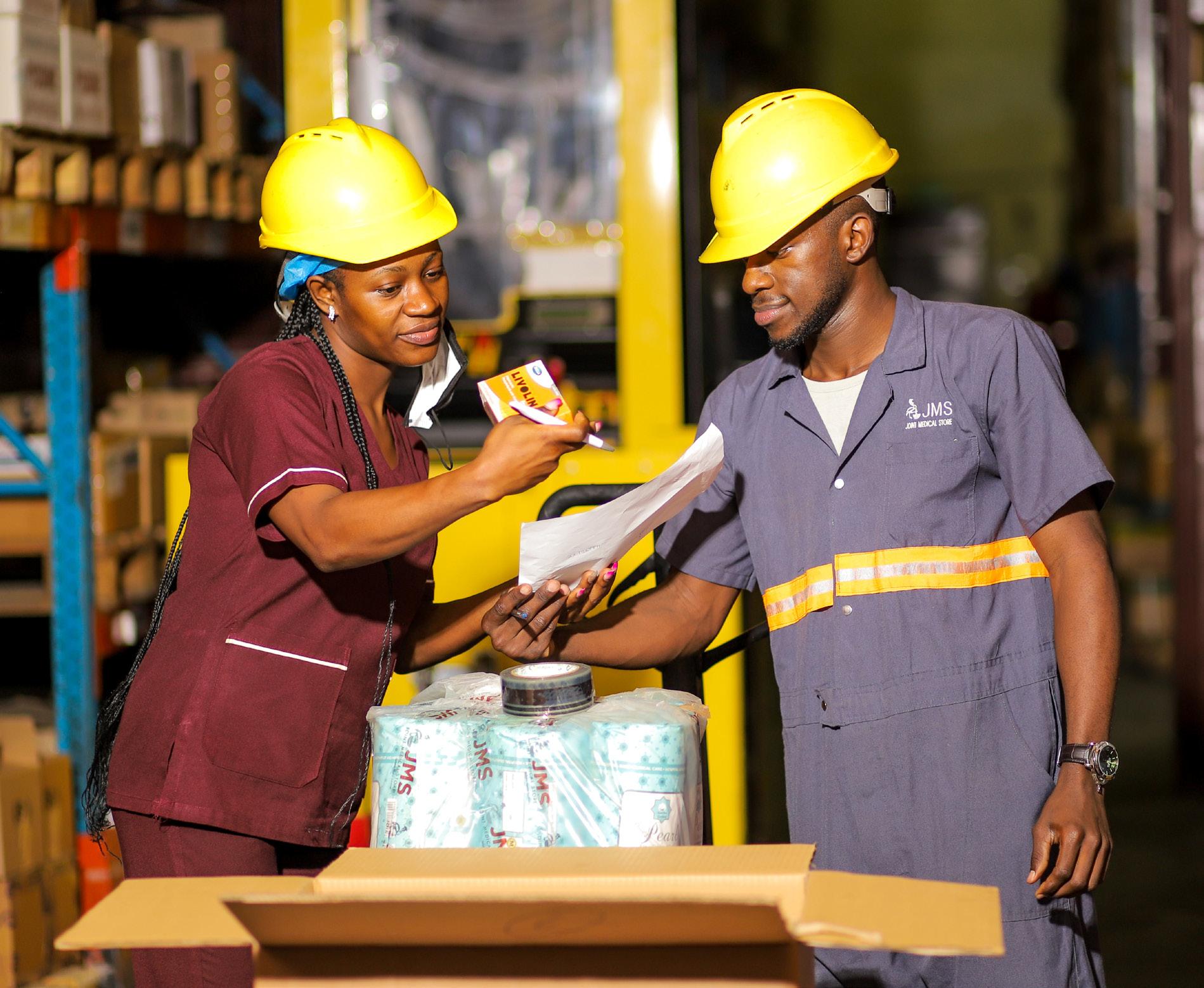
“On top of our product developments, we are also doing contract manufacturing for oxybutynin, and additionally, we are working with some partners in producing new capacity
for Replenish Plus, an immune booster, and foods for special medical purposes (FSMPs) to help malnourished children in Uganda.”
According to Baguma, Uganda has a very young and rapidly growing population, and with this comes both increased technological accessibility and widespread use. Taking this into account, JMS recognises the need for technology integration as well as the adoption of digitalised methods and practices to further its presence and services, to best help and serve people across Uganda.
“JMS is very open to changes and evolving in the digital space, especially in light of the current information and digital revolution,” Baguma tells us. “We also operate in areas where many people don’t have sufficient access to computers, and sometimes don’t have the skill to use them, but it is very important to us that we develop a digital presence and ensure that customers can reach us digitally, without the need to visit us physically.”
To answer this, JMS set up an enterprise resource software called Industrial Financial Services (IFS), an integrated platform that handles all of the company’s operations, including


warehouse management, order processing, financial transactions, and human resource transactions.
“This platform also provides capacity expansion to the customer and increases business connectivity,” Baguma continues. “In this way, the process of finalising allows us to see, order, process and save records of what we need to serve our customers in a surer and swifter way, streamlining our operations when it comes to business-to-business (B2B) activities.
“We believe that this will be crucial for us to be able to reach and supply our customers seamlessly. It is a heavy investment which we are continuing to do both on the side of the customer and the supplier. For the latter, we have integrated another system for advanced supplier notice to ensure full accountability of the commodities.”
People are at the heart of JMS’ mission and central to the company’s success in the sector, whether they are pharmacists, engineers or warehouse workers processing orders and deliveries.

With people at the forefront, JMS places a great deal of value on bettering the skills and opportunities of those in the community.
“One of our roles and mandates at JMS is to ensure that we have the right kind of health workers who are trained and skilled enough for the job and to help people in Uganda,” Baguma elaborates. “We do this in various ways; we support our founding bureaus, the UCMB and the UPMB, to provide scholarships for staff in facilities to be able to train and gain more skills in the field, be it doctors, nurses, technicians or others.
“The second area of JMS’ engagement is working with Ugandan universities to support hands-on training in terms of providing space for students to undertake internships and practical training.”
“WE AIM TO MAKE SURE THAT OUR SUPPLY CHAIN IS EFFICIENT, AND THAT IT DELIVERS VALUE TO THE PEOPLE THAT WE SERVE”
– BILDARD BAGUMA, EXECUTIVE DIRECTOR, JOINT MEDICAL STORE


Norvik Enterprises Limited is a company that is committed to importation and distribution of high quality pharmaceutical products and medical sundries at affordable rates, making them available to all.

It was incorporated in 1998 with the major aim being “to meet the increasing demand of drugs and their supply at affordable rates”.
We supply all over the country, i.e. Mbarara, Fort portal, Kasese, Gulu, Kabale, Masaka, Mbale, Jinja, Hoima and many more remote areas.
Norvik Enterprises Ltd. is currently one of the leading importers of pharmaceutical & medical products in Uganda. We import high quality pharmaceutical products from reputable manufacturers who meet the stringent regulatory global approvals.
Norvik Enterprises Ltd. is known to respond quickly to expanding clientele needs, while ensuring a continuous flow of life-saving drugs and essential health products to health facilities across the country.






Student training is a key part of JMS’ work with the Ugandan community, helping to raise up and train new generations of medical experts and front-line medical workers to further the Ugandan healthcare space, for example, in the area of health logistics.
“We also work with universities in developing programmes that surround supply chains, permits for engineering, and innovations that can further improve the efficiency with which we work in various areas,” Baguma says. “This, in our view, is one of the major roles that we play, improving the overall healthcare system and developing people’s skills to help manage the healthcare sector further.”
This training and preparation of the next generation of medical personnel is a key part of JMS’ vision for Uganda moving forward. At the same time, the company’s mission is to make sure that health facilities, and therefore by extension patients, can actually receive quality and affordable health solutions.
“We aim to make sure that our supply chain is efficient, and that it delivers value to the people that we serve,” Baguma reaffirms.
VISION:
“A partner of choice excelling in health solutions for the glory of God” - JMS
MISSION:
“To provide affordable, quality health solutions through an efficient supply chain system that delivers value to accredited health units and other stakeholders” - JMS

“WE BELIEVE THAT IT IS NOT ONLY IMPORTANT TO PROVIDE OUR SERVICES TO COMMUNITIES, BUT ALSO TO PROPERLY MANAGE AND MAINTAIN THEM”
– BILDARD BAGUMA, EXECUTIVE DIRECTOR, JOINT MEDICAL STORE
“Therefore, one of these key priorities is digitalisation, and our ambitious digitalisation agenda ensures sufficient business-to-business activity and connectivity, which in the short- and medium-term will ensure that facilities and suppliers are able to reach us seamlessly. That is a key target that we are working on for the year.”
JMS is also working on its evolving portfolio of manufacturing products. The company is expanding its production facility so that it can increase the number and variety of products that it is producing locally, and in doing so, also improve and create employment opportunities for the community.





“Lastly, we have designed, continue to use, and expanded a key scheme that allows healthcare facilities to purchase and acquire the medical equipment they need,” Baguma adds. “Many facilities cannot afford to pay




for equipment such as computerised tomography (CT) scanners as they are expensive pieces of kit, but our initiative is a game changer, and allows us to provide such equipment on a repay system so that each party receives what they need.”



With these three core focus areas for the years ahead, JMS is leading the development and expansion of healthcare products, equipment and supplies across Uganda, for a healthier, better and brighter future.


Spearheading the advancement of healthcare in Africa, Sysmex West and Central Africa has positioned itself at the forefront of medical innovation and education. We delve deeper with Managing Director, Eric Osei
Writer: Ed Budds | Project Manager: Callam WallerIn the MedTech industry, it’s important to connect people and technology, build networks across boundaries, tolerate ambiguity, integrate diverse ideas, and allow sustainable solutions to emerge. These ideals carve out the foundation of business and ambitious aspirations of Sysmex West and Central Africa (Sysmex).
“I inspire my teams to discover innovative solutions to uncommon challenges in Africa, to be curious, see new patterns, develop insights and trust their intuition,” opens Eric Osei,

Managing Director of Sysmex.
Drawing from a vast swathe of diversity in his career to date, Osei transitioned from his industry entry as a pharmacist to a Sales Manager, Area Manager, and then eventually, after working across cultures in Africa with great multinational companies like Roche, BD and Sysmex covering pharma, medical devices and the IVD industry in West and Central Africa respectively, to his current role at Sysmex.
“As Managing Director, I am responsible for leading the transformation of Sysmex’s business in West and Central Africa. As an international business manager, it’s important to assess trends and developments in the regional
economy, provide a framework for analysis to understand economic developments, and reduce the inherent uncertainty and risk involved with doing business in countries,” he expands.
By predicting the actions of governments and other entities in the region and their impact on Sysmex’s business and its local teams, the company develops action plans to defend, retain, or increase business where necessary.
Sysmex exists as a subsidiary of Sysmex Europe SE, and for over three years the company has actively shaped the advancement of
healthcare in West and Central Africa by setting new standards and driving innovations in haematology and other areas of expertise.
Sysmex now sits among Africa’s top laboratory diagnostics and healthcare companies and is the industry leader in haematology diagnostics and service.
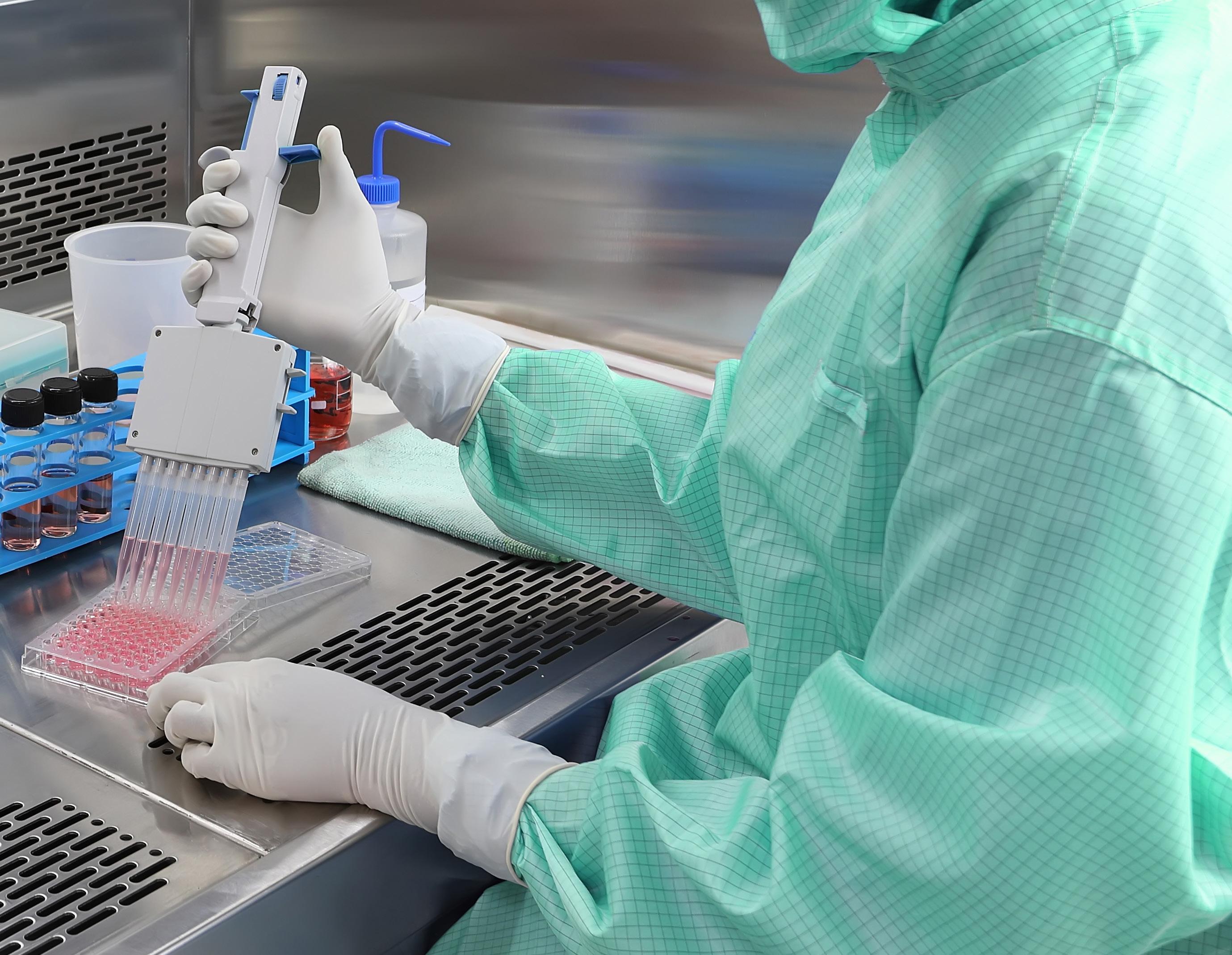
“We’re famous for sales and aftersales support of diagnostic solutions for medical laboratories including automation, and our activities span the entire region,” acclaims Osei.
Sysmex looks after the interests of and provides support for its many stakeholders through a range of affiliate companies and local cooperation partners per country. In this way, the company can coordinate
the entire buyer experience, including purchasing, delivery, use, supplementary services, maintenance, disposal and replacement marketing, as well as all regulatory issues.
“Sysmex is also home to our main training and service centre called the Sysmex Academy. One of our strongest assets is that we love knowledge. We love applying it in smart ways to create unique solutions that really help people, our clients, and our partners,” he tells us.
Currently, Sysmex is actively expanding its expertise and is already breaking new ground in such diverse fields as coagulation and urinalysis, near-patient testing and automation.
Osei believes that the people of Sysmex, their know-how, creativity and engagement are the company’s most valuable resource.
“Excellent collaboration is a way to tap into this resource and is, therefore, a key driver for all future success. Leadership is another important enabler of collaboration, as this provides the framework for action for all members of the organisation,” he outlines.
“Our principles have been developed by Sysmex employees for Sysmex employees. These
principles represent our shared ambition for successful collaboration and leadership. By describing values, motives, beliefs as well as behaviour, they offer a possibility of identification with what we believe is important to us.”
Osei further believes it’s these principles that have built a solid foundation for success at the company.
“The Sysmex way is a good representation of who we are and how we want to act, and one of the core features of the Sysmex way is trust. Clients must trust the fact that our solutions solve their challenges, and they must trust our products, services, and staff. Ideally, our employees also trust in their abilities and those of the company,” he clarifies.
In almost all areas, Sysmex employees are given broad scope for decision-making. Experience has taught Sysmex that having confidence in its employees translates into close involvement with the company – a great, mutually-reinforcing circle.

“We greatly appreciate competence and teamwork and the remarkable diversity and creativity generated by simply letting people be who they really are,” Osei adds proudly.
ERIC OSEI, MANAGING DIRECTOR: “Accompanying the change process, we are looking at delivering successful laboratory automation in West and Central Africa. Providing a concept is a huge step, of course, but we guide our customers through the whole change process to ensure the efficiency of the daily laboratory routine at any time, 24/7. We will provide support in managing the inevitable bottleneck during the implementation phase and assist with concept readjustments if necessary.
“In terms of improving lab economics, consuming just three to five percent of the healthcare budget, the laboratory, nevertheless, influences directly or indirectly over 90 percent of patient management processes related to diagnosis or patient treatments. Providing excellent scientific laboratory support by using advanced clinical parameters saves costs and reduces the level of patient discomfort, and this is what Sysmex strives towards.”
Sysmex, Ajinomoto Foundation and NEC have initiated a cross-industry co-creation project to improve maternal and child health and nutrition in the Republic of Ghana.
Malnutrition and malaria are two of the most severe health issues in Ghana, and are considered the most significant risk factors for death and disability. The former is a leading factor in stunting the growth of unborn children and infants and causes anaemia, which enhances the risk of severe malaria. Additionally, children under five and pregnant women are especially vulnerable to malaria, making it particularly important for Sysmex to take an integrated approach to the prevention of malnutrition, anaemia, and malaria.
By combining effective nutrition education for mothers and children in Ghana using ICT with business-based approaches, such

Using the latest and adequate diagnostic tools in achieving healthcare delivery...




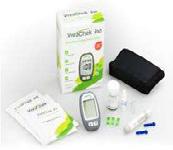







...Using




as supplement production by local private companies and marketing and infiltration activities by local NGOs to enable sustainability,
MISSION
Shaping the advancement of healthcare.
VALUE
Continuing to create unique and innovative values, while building trust and confidence.
MIND
With passion and flexibility, always demonstrate the company’s individual competence and unsurpassed teamwork.
Sysmex aims to make behavioural changes to healthcare and strengthen the health system through human resource development of medical professionals. Utilising innovative ICT and clinical testing technologies originating in Japan will contribute to creating environments where pregnant women, breastfeeding women, caregivers, and children can enjoy high-quality nutrition and health services.
Looking to continually enhance the healthcare space, Sysmex aims to promote improved test quality and

access through the introduction of malaria diagnostic medical devices and educational activities for medical professionals, leading to the early detection and treatment of anaemia, malnutrition and malaria through human resource development.
The Sysmex Academy was envisioned to expand the company’s customer knowledge. Classroom training, digital training and webinars are now accessible in French and English for
“WE GREATLY APPRECIATE COMPETENCE AND TEAMWORK AND THE REMARKABLE DIVERSITY AND CREATIVITY GENERATED BY SIMPLY LETTING PEOPLE BE WHO THEY REALLY ARE”
– ERIC OSEI, MANAGING DIRECTOR, SYSMEX WEST AND CENTRAL AFRICA
all countries in the West and Central Africa region.
Another strand of the academy is the Sysmex e-Learning portal, which is now available via mobile app for free on all iOS and Android devices. It is the perfect complement for all Sysmex digital training, allowing users to access tests, certificates, and much more, now readily available from a phone, even without an internet connection.
Regarding further education and development, the internship programmes created by Sysmex offer a wide range of opportunities, particularly for the younger African demographic. Some beneficiaries of these internship programmes have additionally been given the opportunity to work full-time at Sysmex, based on their work ethics and the availability of these opportunities during the periods they interned.
“We hope to make a difference in giving opportunities, which is often unusual in our area of specialisation, to these young people as an array
of hope towards the motivation of others to choose professions in medical science in Africa,” Osei elaborates.
High-performance medicine thrives on interdisciplinary dialogue, ideally reaching across the aisle between clinical and diagnostic disciplines so that adequate and rapid therapy can be guaranteed in the future.
Antimicrobial resistance (AMR) knows no boundaries; it can affect anyone, of any age, in any country. AMR is the ability of microorganisms such as bacteria, viruses, and parasites to stop an antimicrobial, such as antibiotics, from working against them. AMR can also lead to treatments becoming ineffective and accelerate the spread of infections. Microorganisms are increasingly harder to treat with antimicrobial medication, and more and more bacteria are becoming resistant to antibiotics. Therefore, antivirals must constantly keep up with new mutations as well.

“Sysmex intends to focus on the AMR fight in West and Central Africa using our urinalysis technology and partnering with health authorities in various countries to develop and implement AMR policies for public safety,” explains Osei.

Sysmex implemented the first fully automated urinalysis analyser in Komfo Anokye Teaching Hospital, located in Kumasi, Ghana. This fully automated urinalysis testing system combines the integration of the urine chemistry analyser UC-3500, urine particle analyser UF-4000 and the urine particle digital imaging device UD-10.
“The Sysmex XN-31 automated analyser is also elevating the malaria diagnostic game to another level, and it’s really something that the world has been looking forward to having in terms of the fight against malaria,” he adds.
It is advancements like the gamechanging analysis technology and tools offered by the company that promise Sysmex will maintain its position moving forward, as a true pioneer of the African healthcare space.
Leading laboratory services across Malaysia, we dive into Innoquest Pathology Sdn Bhd, and speak to CEO Dr. Nelson Nheu about delivering high-quality and affordable diagnostics services throughout the country
 Writer: Marcus Kääpä | Project Manager: Callam Waller
Writer: Marcus Kääpä | Project Manager: Callam Waller
Healthcare is a passion, born from the joy of helping other people.”
The words of Dr. Nelson Nheu, CEO at Innoquest Pathology Sdn Bhd (Innoquest) sum up the positive, people-centric spirit of a company working for the health and wellbeing
of people across Malaysia.
Formerly known as Gribbles Pathology, Innoquest is currently the largest private provider of diagnostic laboratory services in the country. This industry-leading position has been achieved by way of the company’s mission, to deliver affordable

diagnostics services of the highest quality, which is in turn made up of a multi-faceted mantra.
“We are medically managed, run under the stewardship of medical doctors; we are the lab of the future - investing in new technologies and tests that are clinically relevant,
and we create memorable patient experiences - from blood taking to releasing the report to a doctor, every patient’s journey is what matters to us,” Dr. Nheu tells us proudly.
For over 26 years, Gribbles Pathology has been the market leader in in-vitro diagnostics (IVD) in Malaysia. The rebranding in June 2022 comes with the backing of TPG as the company’s key investor, and more importantly with the leadership of PAH (Pathology Asia Holdings).

PAH is the fastest growing clinical lab in Southeast Asia (SEA), with a strong presence in Singapore, Malaysia, the Philippines, Vietnam and Australia. Innoquest’s regional reach and unparalleled volume allow the company to provide the highest quality at affordable prices.

Innoquest Malaysia obtained CAP (College of American Pathologists) accreditation and launched a powerful online platform that allows
company services to be delivered in a much more seamless and efficient way. Innoquest’s immediate plans are to have new features on this platform that will continue to improve the way that doctors can deliver lab test services to patients.
“Today we are operating through 75 sites across East and West Malaysia, offering employment to 1,100 staff in Malaysia,” Dr. Nheu says. “We have a very strong team of experts serving millions of patients each year, from couriers on their motorbikes who service thousands of clinics each day, rain or shine, to the dedicated scientists who provide potentially lifesaving test results around the clock.
“Our multidisciplinary services are the most comprehensive in Malaysia, covering the most special tests in genomics, anatomical pathology and adjuvant oncology molecular testing, down to the high volume and fully automated Biochemistry, Haematology, Immunology and Toxicology departments. If there is
Our team, which we refer to fondly as the “One Together” team, lives by the principle of “Always with you”. This symbolises our commitment to serve and support our clients from our hearts. We will continue to be the best version of ourselves and our ultimate pride lies in our clients’ success. We aspire to be the preferred and referred partner for our clients through our exceptional ability in mastering the sciences and technologies behind Molecular Diagnostics, Clinical Diagnostics, Life Science and Big Biodata Management.
Neoscience has established ourselves as one of the industry leaders through multiple national government awards and national collaboration projects. We are blessed with the continuous support from our clients and partners. Growing together with them and creating a self duplicating business model will always remain as our key drivers, with the aim to be the best of both worlds.
www.neoscience.com.my
“Neo” akin to New, Advance, and State-of-the-art, Innovative “Science” akin to competency in a particular branch of knowledge







Neoscience was established in 2012 with the vision of empowering medical diagnostics and life science research in Malaysia through the application of advanced technologies.




We are partnering with world-class, reputable suppliers who are reliable and provide innovative solutions to meet our clients’ needs in our current fast moving, ever-changing Medical and Life Science field. We are confident and proud of every products and services that we provide; and our number one priority had always been to achieve a world-class customer experience and satisfaction.



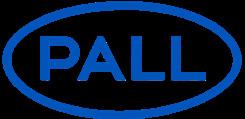



any clinical lab service that we don’t provide in-house, we are able to refer these special testing services to the best international labs such as Mayo Clinic Laboratories, for which we are an exclusive distributor.”
With its regional strength, PAH is also able to acquire best-in-class laboratories with niche competencies, such as toxicology testing - until now, all confirmatory toxicology tests in Malaysia were serviced by the overwhelmed public sector.
The recent COVID-19 pandemic has changed perceptions on the importance of healthcare and diagnostics in general, which echoes throughout Innoquest.
“For the first time in my lifetime, we have experienced how healthcare dictates our economy,” Dr. Nheu elaborates. “We saw how significantly the results of PCR testing determine
when and how the workforce can function, borders can be reopened for travel, or when we can board a train or even grab a taxi. All these basic things that we take for granted, have been limited to one single swab test result.”
The pandemic also accelerated the digitisation of the healthcare industry. With Innoquest and PAH’s vision of being innovative, and with recent investments and acquisitions to move the company ahead in this trend, there remains a lot of potential moving forward.
“I am very excited about the future of our company and that of the industry. I always believe that disruptive technology to our industry should be coming from within, allowing the experts to determine and shape the future of diagnostics and patient data management,” Dr. Nheu explains.

“Three years ago today, I would have not imagined that the diagnostics
DR. NELSON NHEU, CEO: “My six years of medical residency in Australia were spent evenly between the public and private hospital system. No matter where my training was, or under which clinical speciality, one thing became clear to me: the importance of diagnostic tools in patient management. And unlike medical practice, IVD has the ability to scale massively.
“Today, more than 70 percent of medical decisions are based on laboratory test results. While in Malaysia the barrier to entry in this industry is relatively low, you need to be of significant scale in order to offer high-quality service at an affordable cost to the patient. Being the laboratory with the highest volume in this region and in Malaysia, it allows us to offer special tests that others aren’t able to, it allows us to be the referral lab for most hospitals and clinics, and it allows us to set up new tests with novel platforms that come at high initial cost.
“These are the main reasons I became interested in healthcare, diagnostics in particular, and in working with PAH in Malaysia under the Innoquest brand.”
BD is one of the largest global medical technology companies in the world and is advancing the world of health by improving medical discovery, diagnostics and the delivery of care.
The company develops innovative technology, services and solutions that help advance both clinical therapy for patients and clinical process for health care providers.
BD has 75,000 employees and a presence in virtually every country around the world to address some of the most challenging global health issues.
BD helps customers enhance outcomes, lower costs, increase efficiencies, improve safety and expand access to healthcare.
bd.com
ABBOTT
Abbott creates breakthrough products – in diagnostics, medical devices, nutrition and branded generic pharmaceuticals – that help you, your family and your community lead healthier lives.
For more than 130 years, we’ve put science and innovation to work – to create more possibilities for more people through the power of health.
Our purpose is to make the world a better place by bringing life-changing health technologies to the people who need them. That’s our commitment to helping you live your best life.
www.abbott.com



Abbott has driven innovation across medical diagnostics, pioneering new technologies and solutions that transform the way patients and healthcare providers receive accurate and timely results for diseases such as cancers, infectious disease, cardiovascular and more. We are creating the future of health and technology to change life for the better.




www.abbott.com
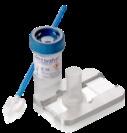

industry would be what it is now. In my recent visit to the AACC Annual Scientific Meeting and Clinical Lab Expo Conference held in Chicago (US), the largest of its kind, it was clear to me how much emphasis is given to COVID-19-related testing, resulting in non-COVID-related tests taking a backseat.
“I am certain that this will quickly fall into balance again, but it was pleasing to see the willingness to invest in and rapidly adopt new technologies in IVD service delivery. This trend will only continue - and it is exciting to just imagine what this industry will look like in another three years.”
While Innoquest operates in a very traditional industry with a heavy focus on ‘standards of procedures’ and quality of care, emphasis is also being placed on innovating the ways it delivers its services. Nowadays, most things are at people’s fingertips and the traditional way of operating is not able to keep up with this trend. Thus, it is important for Innoquest, as the largest diagnostic healthcare provider
in Malaysia, to continuously innovate the way it delivers its services.
“Innoquest is in the best position to drive the future of the healthcare industry in Malaysia,” Dr. Nheu says. “I firmly believe that “disruption” should be fostered from within. Much of our effort and passion is towards new methods of delivering our services, to ensure that the future of diagnostics never compromises on the fundamental ethics of healthcare.”

As the economy returns to normalcy, it is expected that there will be a rise in some areas of medicine which were put off during the pandemic period. Cancer diagnosis, elective procedures, non-communicable disease management, and flu outbreaks among others will see a
marked increase in hospital and clinic presentations.
The Innoquest team, already with the largest capacity, will continue to build-up to meet industry needs and to ensure that service levels are maintained, along with the company’s quest for continuous improvement. According to Dr. Nheu, healthcare is not spared from the critical labour shortages seen in other industries. As hospitals and other health services experience the flood of increased workload, labour supply is a key constraint.
“We will continue to emphasise our human policies that have worked well for us, with extremely low staff turnover in our supervisors, management and above,” he elaborates further. “We also foresee that other areas of growth will
“HEALTHCARE IS A PASSION, BORN FROM THE JOY OF HELPING OTHER PEOPLE”
– DR. NELSON NHEU, CEO, INNOQUEST PATHOLOGY SDN BHD
Innoquest’s client base varies from primary care family doctors to medical specialists in tertiary hospitals across Malaysia. The company is also the one-stop referral centre for community laboratories, hospital laboratories, and even the public sector. Company services are utilised by more than 4,000 doctors daily and around the clock, giving results to over five million patient episodes each year.
Some of Innoquest’s achievements to date include being the first private laboratory in Malaysia to attain NATA and ISO 15189 accreditation. It is also the only multidisciplinary laboratory to achieve CAP accreditation in Malaysia, further enhancing the country’s reputation in quality service across the region. Innoquest directly manages over 65 private hospital labs, and a referral centre for an additional 200.
gap-up in the near future, including our foreign worker screening where Malaysia is still short of around one million foreign workers for our plantation, manufacturing, service and other key industries.
“We expect our borders to open soon for foreign workers to flood back. I am glad to see that our ministries are increasing the approvals of foreign workers; this will help our labour crunch tremendously. Health tourism will also experience higher traffic. Innoquest continues to ensure all stakeholders mentioned receive
the best diagnostic services, as our economy finds normalcy in the next few quarters.”
A FULL-SERVICE LAB PROVIDER PAH has recently set up a genomics lab under LifeStrands Genomics to complement existing competencies in Malaysia and the region. Within a short period, they have increased their NIPT (non-invasive prenatal testing) profiles and capacity, and have built a growing list of offerings including somatic oncology testing (with a highly competitive menu of comprehensive offerings),
pharmacogenomics testing, and have invested in liquid-based biopsy competency to be launched soon in Malaysia. Innoquest is proud to include LifeStrands services and products to its existing range of service offerings nationwide.

NIPT assesses a foetus’ risk of having certain chromosomal abnormalities including Down’s syndrome. A simple maternal blood test allows the laboratory to examine the foetal DNA - reducing the risk of complications such as miscarriage associated with more traditional methods of sampling and testing.
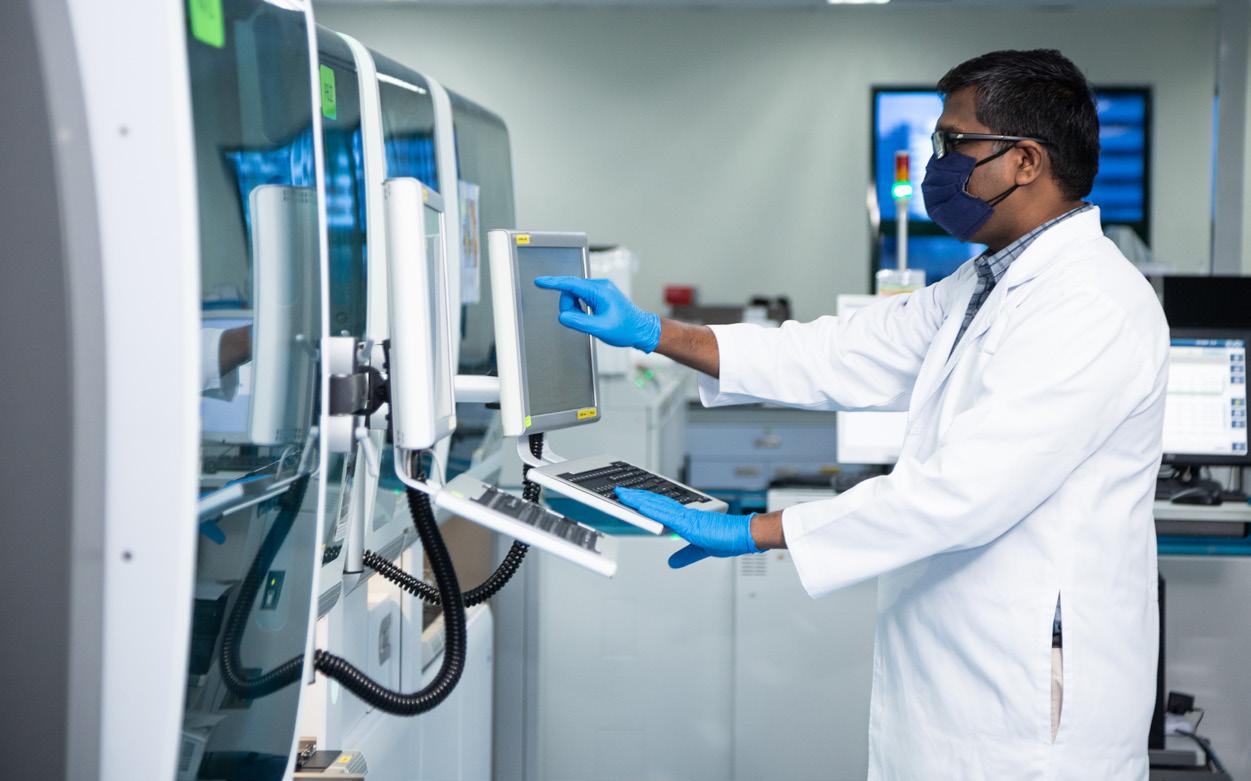 Biochemistry Department: “The Roche total laboratory automation system has the capability to perform tests for over 10,000 patient episodes a day.”
Biochemistry Department: “The Roche total laboratory automation system has the capability to perform tests for over 10,000 patient episodes a day.”
“In Malaysia, the adoption of this test is still at a lower rate due to the prohibitive cost. However, PAH through our genomics lab and Innoquest Pathology offers a highquality NIPT service that is fully CAP accredited (the first of its kind in Malaysia),” Dr. Nheu continues. “Our task is to continue reducing the cost to make it affordable for pregnant women in Malaysia. I am proud to announce that our team is headed by Dr. Vivek Rathi, one of the top molecular pathologists in Australia.


“We have also made strategic investments to launch various seamlessly interconnected platforms, allowing the doctor to order tests electronically, track the progress of all episodes, view lab results in real-time, have access to useful data such as their ordering pattern, their patient’s lab and other health records (for example, from their
wearables - smart watches, mobile phones and other devices).”
Innoquest continues to invest in other speciality testing competencies to complement its traditional lab services, such as animal pathology, and is the only private provider with a full menu for veterinarians, including microbiology and anatomical pathology lab services. The company’s anatomical pathology services are complemented by a full range of immunohistochemistry testing and molecular testing for targeted therapy. Innoquest offers a comprehensive menu of toxicology testing backed by expertise based out of its sister laboratory in Australia called Safeworks Laboratories.

“I am also very excited about our plans in chemical and environmental testing, which will be revealed soon,” Dr. Nheu alludes.
These plans and developments would falter without Innoquest’s hard-working staff, who remain the company’s heart and soul.
From the dedicated scientists working around the clock to the motorbike couriers who battle city traffic and all kinds of weather, Innoquest’s employees are working towards the goal of improving patient care. Innoquest emphasises standard operating procedures (SOPs) and strictly follows internal and external quality governance.
“From our recruitment policy towards fully qualified staff, followed by stringent training before they can operate independently, we foster professional and personal development to find the most adequate career path for each individual,” Dr. Nheu tells us.
“Having multiple labs with a range of specialties across the region gives our staff the opportunity for further development across functions, within and outside Malaysia (in our sister companies in Singapore, Philippines, Indonesia and Australia).”
Frequent assessments and appraisals are carried out at Innoquest to encourage regular feedback amongst staff and management, and to identify areas for improvement and growth. Company work culture focuses on teamwork and empathy, and on teaching and learning. Staff are rewarded for their excellence in performance, and we strongly encourage positive behaviour: great customer service to doctors and their patients is our central focus.
“In response to the growing awareness of mental wellbeing, especially during stressful times of the recent pandemic, we also engaged the services of an Employee Wellbeing consultant to ensure our employees’ concerns are seen to,” Dr. Nheu adds.
For Innoquest, a large part of the past three years revolved around managing the pandemic; the company was the first private laboratory in Malaysia to provide COVID-19 screening to the public and its efforts were mostly channelled to helping the public healthcare system conduct mass screening, as it was having difficulty coping with the large numbers at that time.
During these three years, Innoquest also expanded and built new labs to run COVID-19 tests across the country as well, and at the same time managed the pandemic within its own workforce.
“Today, as we ease into endemicity, we return our attention to our core laboratory testing, focusing on expanding our services to reach more people in the country, providing new test offerings to the community, selling tests from the personalised medicine field, histopathology, occupational health and safety,
and improving service delivery as a whole,” Dr. Nheu concludes. “In the coming years, we aim to provide a seamless patient journey through IT, from the ordering of tests by our doctors, to providing e-reports safely and efficiently through our IT platforms to improve patient care management and doctors’ experience.
“We continue to build our strong reputation in the medical and research field; growing and expanding partnerships with medical centres, other private and government institutions; we continue to drive improvements in patient care; staff competency, training and development.”
INNOQUEST PATHOLOGY SDN BHD

Tel: +603 7841 7752
enquiries@innoquest.com.my
www.innoquest.com.my

Following a recent merger, Innoquest Diagnostics is moving forward as one in pursuit of transformative healthcare.
Foo,
Whilst the medical diagnostics industry has always been robust and resilient, the COVID-19 pandemic saw a sea change in focus on diagnostics.”
At the forefront of this shifting dynamic is Innoquest Diagnostics (Innoquest), whose CEO, Ginny Foo, believes there has never been a more exciting time to be in the industry.
Innoquest was officially launched in March 2021 as a merger of Quest Laboratories (Quest) and Innovative Diagnostics (IDPL), both

long-established in Singapore having been founded in 1995 and 1996, respectively.
Whilst the Innoquest brand is still in its infancy, the actual origins of the lab therefore go back more than 27 years.
“The merger between Quest and IDPL was complicated by the long history of the two labs, the multiple overlapping clients, clinics and test/ profile codes, and the different laboratory information systems (LIS) and instrument platforms (LIP) used,” Foo informs us.
“The Innoquest team are truly unsung heroes who put in countless hours to build the lab that we see today. There were endless issues and hurdles that we needed to overcome to smoothen our workflow and streamline our processes; I also wish to thank our loyal clients who stuck with us throughout.”
Innoquest is proud to serve clinicians, hospitals, medical centres and their patients, as well as nonprofit organisations, through the deployment of advanced diagnostic
From the leader in COVID-19 testing — solutions you can trust for the information you need
In a time when getting answers quickly is critical, we’ve responded with solutions to help keep the world moving forward. We deliver:
• Proven COVID-19 testing solutions for accurate, trusted results
• Reliable supply from a single source for uninterrupted testing
• Worldwide service and support to get—and keep—testing up and running
And we’ll continue to anticipate evolving testing needs and proactively developing innovative solutions to address future challenges.
Thermo Fisher Scientific is involved in more than 50% of global COVID-19 testing, helping to enable greater access to fast, reliable, trusted answers. So the world can keep moving.

Find out more at thermofisher.com/covid19

testing methods, supported by a wealth of industry expertise and ground-breaking technology.
Operating from seven facilities in Singapore, Innoquest’s main laboratory at Starhub Green is installed with the Roche total laboratory automation (TLA) system,
VISION:
To be the eminent innovator and leader in advancing new frontiers in medical testing and diagnostics.
MISSION:
To transform healthcare and improve the human condition.
PURPOSE:
To save and improve every patient’s life.
VALUES:
• The pursuit of excellence
• Care for others
• Innovation that impacts
• Trust with integrity
The company’s extensive network of laboratories offer a wide range of in-vitro diagnostic (IVD) tests across laboratory medicine, to help detect diseases or conditions and to monitor the health of patients.
“We provide a full range of IVD tests, which include allergy testing, biochemistry, anatomical pathology, haematology, immunology, microbiology, molecular and much more.
capable of performing tests for more than 15,000 patients a day.
“What we achieved in 2021 was truly amazing. We managed to merge two huge laboratories into one, renovated and expanded the lab space so that we could change our LIP, upgraded our LIS to a newer version, and continued to improve our lab processes.”
With the installation of multiple Roche TLA systems at Innoquest’s laboratories, the company has been able to enhance the capacity, accuracy, and quality of its testing capabilities.
The patient’s sample is placed into the TLA system, which reads the barcode on the back of the sample tube and detects what tests to run. Once tested, the sample goes into refrigerated storage at the stockyard; if clinicians wish to add a test, the request is relayed to the LIS and the sample is automatically retrieved from the stockyard.
“For abnormal results, repeat criteria are keyed into the system. Samples that require a repeat are picked up automatically by the system and transported to the analyst, minimising human intervention and removing human error almost completely from the entire analytical process,” Foo explains.
“100 percent of cancers are diagnosed by pathologists, and 70 percent of medical treatments, diagnoses and discharge decisions are based on pathology test results. Everyone from birth to old age uses pathology at some point in their lives to determine the status of their health – that is how important and crucial medical diagnostics are to the healthcare industry,” emphasises Foo.
At the peak of COVID-19 testing, Innoquest had about 300 members of staff in the COVID-19 labs and logistics department, providing a 24/7 roundthe-clock service to clinics, hospitals, and swab collection sites.
“Our core business comprises over 440 employees, so altogether we had around 740 people working under the Innoquest brand by the end of 2021. Now, we are slowly ramping down the COVID-19 labs and redeploying some personnel to our other laboratories.”
In response to the urgent need to boost Singapore’s COVID-19 testing capacity, the company worked alongside the Ministry of Health to build five COVID-19 testing laboratories in 2020 within the space of nine weeks.

To date, more than 3.8 million COVID-19 swab tests have been performed by Innoquest, who had to quickly pivot to perform enough PCRs to cater to the mass testing requirements of the nation.
“The last two years have taught us many things in terms of hazard preparedness. Innoquest has stepped up to the challenge and contributed
Grow your capabilities with PCR-based RUO panels that enable accurate and efficient results. Our extensive library of predesigned Applied Biosystems™ assays helps laboratories provide sensitive and scalable insights. And thanks to our global supply chain, you can be confident that you’ll have access to what you need for any routine or specialized testing.

went from performing 200 molecular tests per day to several thousand at the height of the pandemic, and since April 2020 has issued over 10 million patient results.
Given the huge number of samples that have been processed, the pandemic has unsurprisingly been an extremely busy and stressful time for Innoquest.
“We hope this will assist Singapore in reducing the unnecessary use of antibiotics and improve antibiotic stewardship,” outlines Foo.
GINNY FOO, CEO: “My first degree was in Food Science at the University of Guelph, Canada, but I became interested in healthcare when my mother was hospitalised in the late 1980s.
“I came across the hospital laboratory whilst visiting her, and went in to speak with the Laboratory Manager. He asked me to send my CV, which I did, and I got my first job as a medical technologist at the Mount Elizabeth Hospital lab in 1989.
“I’ve been in the healthcare industry since, and had to pursue another degree in Medical Science in order to advance further in the sector. I completed a twinning programme with the Curtin University of Technology in Perth, Australia, and obtained my BSc in Medical Science in February 2005 after just over a year on the programme.”
“The mental and physical stress on our lab staff was enormous, as they had to ensure they did not get infected with COVID-19 and transmit the virus to their family members. Some staff were staying away from their family members for months whilst they were working in the laboratory, just to keep their families safe,” reveals Foo.
“Many staff stepped up from their usual job scope to help with the COVID-19 testing process, such as driving vans to pick up samples from collection sites or helping to sort out samples for testing at the labs.
“With the right processes in place, we are very glad that after two years of intense testing, no one at the lab has been infected,” she continues.
Innoquest recently automated its microbiology department, by investing in the latest MALDITOF mass spectrometry for the identification and diagnosis of microbes.
This automated system ties in with Innoquest’s ongoing digital transformation initiatives, as it embraces a world of electronic orders, e-billings, e-payments and digitalised reports. Not only does this enable patients and doctors to receive results quicker, but it will also enhance the overall patient journey and subsequently result in better care.
“We will no longer work in the background, but instead take on an enabling role in bringing quality care to patients in collaboration with our healthcare partners.”
Providing high quality, accessible, and affordable diagnostics is at the heart of Innoquest, and can’t be achieved without unparalleled customer service and the latest technologies.

Partners rely on Innoquest to assist in their medical diagnoses, and the company is committed to providing clients with a memorable, positive end-to-end experience. In this regard, Innoquest is working with healthcare platform BioMark to further enhance the digitalisation of pre- and postanalytical processes.
significantly to the nation’s COVID19 testing capacity throughout the pandemic. After going through this exercise, we are now more prepared to face any such pandemics again in the future,” Foo acclaims.
As a result, Innoquest laboratories
Prior to the MALDI-TOF system, it would take at least 72 hours for a clinician to receive indicative information on the result of the test. As microbiology is often a decisive factor in the prescription of antibiotics, this lengthy turnaround time ran the risk of increasing antibiotic usage.
With the MALDI-TOF system in place, Innoquest is able to provide a turnaround time of less than 48 hours and an overall accuracy of 95 percent at species level, enabling fast and correct treatments for patients.
“Our goal in the next two to three years is to do away with pen and paper, and have all of our lab orders and reports issued electronically. BioMark and the Innoquest IT team have to perform API beta testing, so we should be rolling out the application to our clients very soon.”
In Singapore, BioMark has partnered with Innoquest’s 2,500 clinics, storing lab results from nearly two million patients.
BioMark acts as the conduit between Innoquest, doctors and patients. Broadly speaking, BioMark compiles blood and pathology reports, and displays them to doctors and patients through its own innovative platform.


In contrast, culture-independent molecular testing has excellent performance characteristics, shortens turn-around times, and offers integrated workflows that require limited technical expertise. Infectious disease areas that benefit from molecular testing include respiratory tract infections, gastrointestinal infections, sexually transmitted infections, urinary tract infections, and women’s health, among others.
testing solutions.
Grow your capabilities with PCR-based RUO panels that enable accurate and efficient results. Our extensive library of predesigned Applied Biosystems™ assays helps laboratories provide sensitive and scalable insights. And thanks to our global supply chain, you can be confident that you’ll have access to what you need for any routine or specialized testing.
Our mission is to enable our customers to make the world healthier, cleaner, and safer. We are here to support our customers by accelerating life sciences research, increasing lab productivity, and improving health through accurate diagnostics and lifechanging therapies.
To learn more, visit thermofisher.com/pathogendetection.
Clinics and healthcare providers can therefore effectively monitor their patients’ wellbeing, and flag those who need follow-up consultations or tests. The platform allows for real-time results to be viewed by doctors, and with immediate access to results as soon as they are validated in the lab, it enables a much faster turnaround and better service provision.
Likewise, patients are able to make more sense of their lab results and monitor the progress of their health, creating better continuity of care and interaction with doctors.
For example, BioMark’s platform is used in the Philippines by over 10,000 patients for the management of diabetes, in partnership with Sanofi. This real-world, real-time monitoring platform has resulted in dramatic improvements to the HbA1c results in diabetics, and in both quantitative and qualitative metrics across the board, an
indicator of the long-term reduction in complications from diabetes.
“BioMark’s services intend to add value for patients, by placing doctors at the centre of the equation in order to provide better care,” Foo says.
Innoquest is also working closely with sister genomic diagnostics company, LifeStrands, to drive the adoption of clinical genomics and to advance precision medicine in Southeast Asia.
LifeStrands intends to research and develop new assays tailored to the Southeast Asian population, and its medical needs by partnering with best-in-class companies and research institutions to develop expertise in Singapore through tech transfers.

The three segments that LifeStrands will be concentrating on from the start will be oncology,
As a leading organization in the biomedical and life sciences industry, Biomed Global offers a holistic range of innovative and cuttingedge solutions for healthcare in the Southeast Asia Region.
From market research to business development, and technical service, we extend our in-depth knowledge and experience to empower our partners to raise healthcare standards globally.
We believe in the power of bringing people and medical innovations together to shape the future of the healthcare industry and improve the quality of life. Our team of 250+ is constantly working hard and smart to deliver our solutions throughout the region and coupled with more than 20 years of experience in this industry, makes us a critical part of the diagnostic testing ecosystem in the region.
Our cooperation with Innoquest began in 1996 with one of its subsidiaries Gribbles, and together we have grown from strength to strength over the decade. Both our organizations have gone through rebranding exercises to become the well-respected brands we have established today.
We are proud to have worked together on multiple projects to improve patient care and lower the cost of testing such as COVID-19, Blood Banking, Allergy Testing, and Microbiology Testing.
Our COVID-19 project is particularly noteworthy for its scale and speed of deployment throughout the Innoquest network which greatly improved the pandemic situation. We continue to work on many more such projects which promise to deliver greater impact than ever before. www.biomed-global.com
Biomed Global is a renowned brand for healthcare solutions in the clinical diagnostics and lifesciences space across Southeast Asia. As the exclusive distributor for certain product lines of Becton Dickinson, ThermoFisher, Biorad, Bruker, and numerous other leading diagnostics organizations, our portfolio breadth is among the widest in the region.

Bruker

Bruker MALDI Sirius Biotyper System identifies microorganisms using MALDI-TOF (Matrix-Assisted Laser Desorption/ Ionization Time of Flight) mass spectrometry to measure highly abundant proteins that are found in all microorganisms.

ICatcher
Make early cancer detection possible with iCatcher – A platform designed to extract cfDNA & cfRNA from up to 4mL of blood or plasma.
MGI
High speed, high flexibility, and ultra-high throughput turbocharge your sequencing.

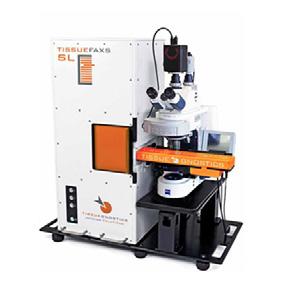



A solution provider for Precision Medicine / Next-Generation Digital Pathology and provides fully integrated cutting-edge tissue cytometers.
Our team is also constantly on the lookout for new and innovative healthcare solutions which can bring substantial transformation to the healthcare landscape and raise the standards of healthcare in our markets.
We take pride in our wealth of expertise, which is critical to ensure the needs of our customers', such as Innoquest, are well met at the highest levels of customer satisfaction possible. We also are on the journey to becoming an organization which considers wellbeing one of the pillars of growth for the future.
www.biomed-global.com
All ACL TOP systems are optimized to run with a comprehensive panel of HemosIL reagents, they offer complete disease-state management. The broad test menu provides flexible solutions for both routine and specialty testing. The same reagents on all ACL TOP systems mean true standardization throughout the lab.

reproductive health, and inherited disorders.
The importance of developing an oncological test that can screen and detect the early onset of cancer cannot be overemphasised, and this is now possible through genetic testing, which detects genetic risk factors and links them to a wide spectrum of cancers. Targeted therapy or precision medicine also guides clinicians to a more patientcentric approach and the most effective treatments.
Reproductive health is another very important segment, in view of more and more couples starting families in their mid or late 30s.
Non-Invasive Prenatal Testing (NIPT) screens pregnant women to test for trisomies 21, 18, and 13, for the highly accurate detection of Down’s, Edwards’, and Patau’s Syndrome.
“Other reproductive screenings include the carrier screening for couples planning to start a family. This is a comprehensive test to detect genetic disorders in one or both parties, and has the power to detect diseases causing mutations in over 2,000 genes,” Foo notes.
Finally, comprehensive tests can identify inherited risks for at least eight types of cancer based on investigations into personal or family history, as well as hereditary heart conditions based on a patient’s genetic make-up – there is a 50 percent chance of inheriting an autosomal dominant cardiovascular condition from an affected first degree relative.
The test investigates and reports known, affected genes that are linked to a wide variety of cardiovascular disorders. This better informs clinicians and patients on the best management or treatment decisions to make.
“Reproductive health tests such as NIPT screenings and carrier tests are already available, and can be ordered by clinicians. Hereditary disorder testing for oncology, cardiology, and
other rare diseases including the whole exome sequencing are available as send-out tests, but are in the pipeline to be done in-house soon.”
Innoquest strongly believes that genetic testing will be the future of laboratory medicine. Indeed, major advances have been made in the understanding of the human genetic make-up, and laboratory medicine is making big leaps in research to come up with new tests for the prevention and treatment of many diseases.
Previously, only a single gene could be examined at a time, but as technology and molecular biology laboratory techniques have developed, next generation sequencing (NGS) allows for much faster and cheaper sequencing of large portions of DNA, or even the whole genome.
“Within the next few years, we will see genetic testing replace many older methods of predicting prognosis by pairing patients with therapies they will respond to, or by identifying the right dosage of medicine for the best results,” Foo tells us.
“With more advances made in recent years, genetic testing will impact the laboratory space even more by allowing doctors to detect a variety of diseases earlier and therefore administer treatment sooner.
“These advances will be most welcome, especially for complex diseases such as cancer. We also hope to see the cost of genetic tests come down with NGS techniques, and this will make it more affordable for the masses.”
Testament to Innoquest’s quality standards is the company’s dual accreditation from the College of American Pathologists (CAP) and the Singapore Laboratory Accreditation Scheme (ISO 15189).
With a senior management team comprising medical doctors and senior scientists, whose accumulated laboratory experience exceeds 100 years, Innoquest also differentiates
Pharmacogenomics (PGx) is the understanding of how genes impact response to medications. Significant progress has been made to determine the safest, most effective course of treatments. As we deploy more PGx testing, we are better positioned to improve the health of individuals and communities, with the potential to reduce healthcare costs.
“The clinician and patient are better informed when PGx testing is used during medication selection, and more importantly, the medication is more likely going work,” says Manoj Gandhi, Senior Director of Medical and Scientific Affairs for Thermo Fisher Scientific.
To learn more about pharmacogenomics solutions, please visit thermofisher.com/pgx.
Advancelab is a team of architects, interior designers, construction personnel, safety managers and scientists that are heavily involved in built environment space. We function in many avenues including:
• Architect
• Design & build
• M & E design
• Tender administration
• Project management
• Facility managers
We are who our clients need us to be. Collaboration is our middle name.
Everything from government level CBRE facilities to Class A Office space - we are comfortable, we are forward thinking and most importantly we are eager.
www.advancelabglobal.com
We design everthing from offices to advanced national level laboratories.













Site Assessement






Layout Plans
Client Briefs










Room Cards
Seminars
Construction Budgets and Estimates
Regulatory Approval
Tender Documentation & Management

Project Management
The future of health care includes factoring genetic test results into treatment decisions. Applied Biosystems™ products help drive pharmacogenomics advancements, and we continue to participate in partnerships to make it accessible for laboratories, employers, and government agencies.
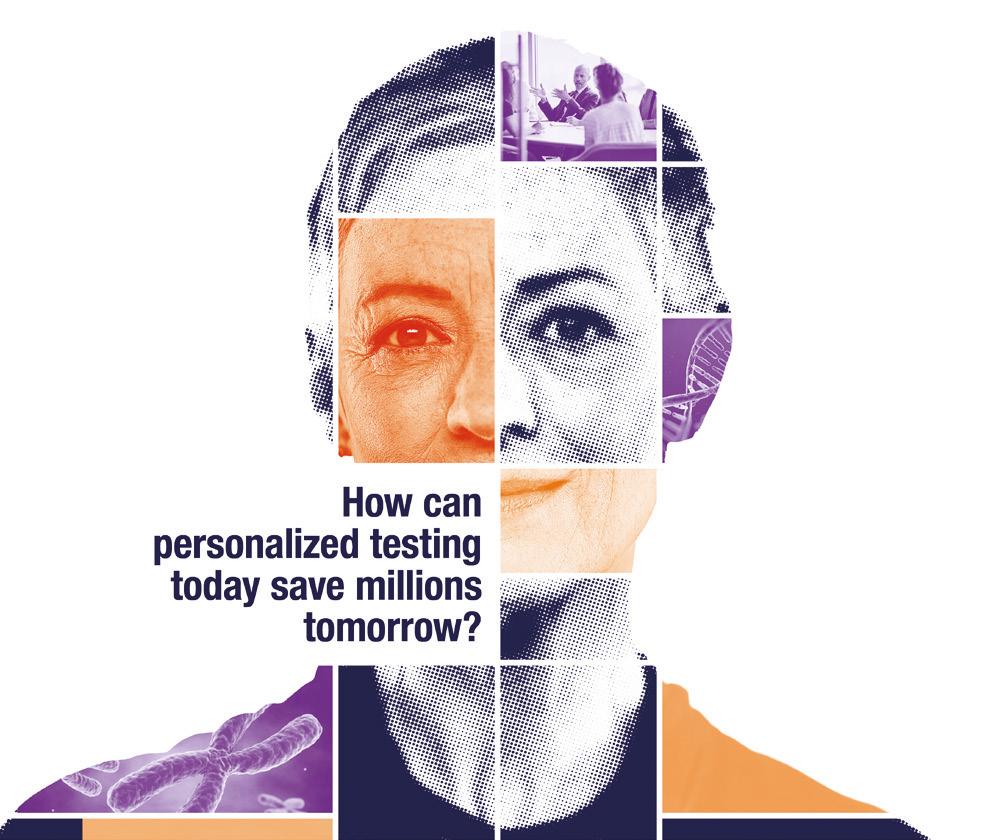
itself from other competitors as a “medically managed” organisation.
“We always believe that it takes a doctor to understand another doctor. Our Group CEO, Dr Chris Ting, and COO, Dr Anthony Stanislaus, are both medical doctors,” Foo shares.
“Our expertise allows us to offer the widest selection of tests in-house at very competitive rates, with significantly improved turnaround times compared to sending those tests to a referral lab.”
The supply chain is of equal importance to daily operations at Innoquest, who work closely with partners and suppliers to guarantee no logistical disruption.
“Our partnerships with suppliers also ensure that workflows are optimised, and customisations are built to further enhance and improve on quality and efficiencies,” adds Foo.
Innoquest works with sister companies across the region to form strong, long-term partnerships
with key suppliers, which allow the company to continuously improve its operations and services, and be at the forefront of new tests being brought to the market.
It is thanks to these deep supplier relationships that Innoquest has partnered on new initiatives and tests being rolled out in Singapore, and introduced the latest technologies.
The company also works closely with charitable organisations such as SATA CommHealth and the National Kidney Foundation, by providing laboratory services at a competitive price to support their respective community initiatives and events. Nevertheless, Innoquest intends to develop even more structured and sustainable corporate social responsibility (CSR) practices.
“As mentioned, through our partnership with BioMark, we are working with key clients to adopt digital reports. This will significantly reduce the amount of paper used; we
A family-owned company, bioMérieux has grown to become a world leader in the field of in vitro diagnostics. Our entrepreneurial adventure, begun over a century ago, is driven by an unrelenting commitment to improve public health worldwide.
We develop and produce diagnostic solutions that help healthcare professionals quickly and reliably determine a pathology or the source of a contamination and provide them with crucial information for optimal patient care.
Our high-performance solutions are based on three key areas of in vitro diagnostics – Microbiology, Immunoassays and Molecular biology.
www.biomerieux-asean.com

You can make a difference with the right diagnostics tests that give you the power to fight infectious diseases - and save lives.





DESIGNING WITH PASSION. BUILDING WITH PURPOSE.
The Outlook Creative Services Division provides a complete web design, build and delivery service that leverages the expertise of our in-house production team. Complementing Outlook Publishing’s portfolio of esteemed global publications, our specialist skills cater to clients around the world with a fully bespoke service.


If you would like us to bring your digital story to life with passion and purpose, visit www.outlookcs.com or email hello@outlookcs.com

are currently dispersing more than 400,000 hardcopy reports a month, so one of our key goals in the next two years is to convince more healthcare partners to go digital and make the world more sustainable,” Foo says.
Innoquest’s key priorities for the coming year are threefold. First and foremost, the company aims to increase the selection of tests available to doctors in Singapore, including but not limited to genetic testing for the early detection of cancer.
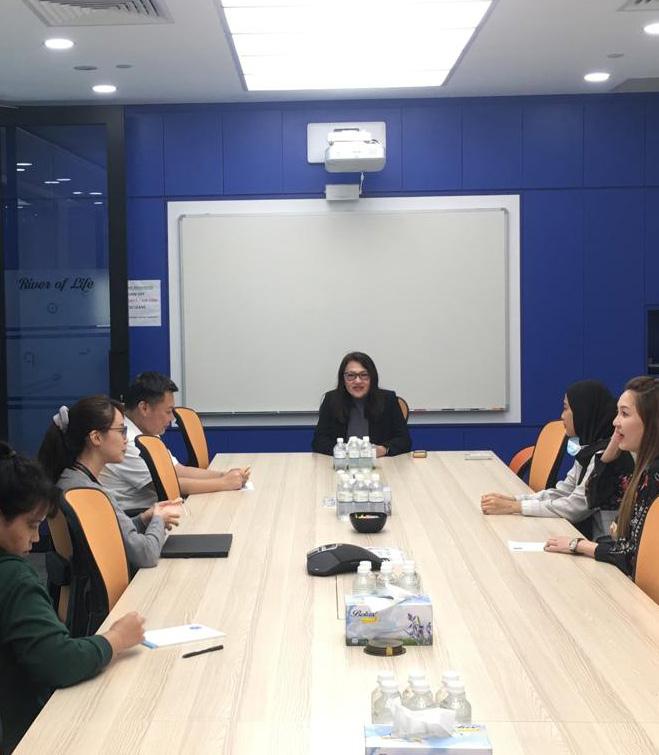
As well as automating pre- and post-analytical processes through digitalisation to improve efficiencies, reduce the environmental impact of
reporting, and provide an unparalleled service to clients, Innoquest will look to enhance the experience of healthcare partners and enable them to provide better, faster, and more accurate care to their patients.
“A key area of improvement we are targeting is the anatomical pathology department. Singapore, like many countries in the world, suffers from a chronic shortage of anatomical pathologists, especially in the private sector,” acknowledges Foo.
“In order to keep up with the rising demand of this segment, we will upgrade our anatomical pathology department, beginning with the automation of sample preparation and workflow processes.
“In the medium term, we are
Alliance BioMed is an in-vitro diagnostics contract manufacturer based in Singapore.

Our mission, at Alliance BioMed, is to continuously innovate biomedical and biotech solutions in preparation for the future. With a unique capability in life science development & contract manufacturing, we have shaped ourselves to become an indispensable partner for research institutes, diagnostic companies and biotech/med start-ups over the years and transforming groundbreaking life science solutions into commercialisation.
Our robust biomedical production and supply chain strength has made us the dominant supplier of the premium COVID-19 testing solutions to test centres nationwide, including Innoquest.
www.alliance-biomed.com
working on installing digital pathology technologies, which will provide more flexibility to accredited pathologists from overseas to read and report on the work in Singapore. Eventually, we will look into the use of artificial intelligence tools to help improve the speed and quality of our results.”
Foo concludes by assuring clients, suppliers and staff of an exciting, fruitful, and successful ride.
“Let’s start dreaming about what we want to see in the next five to 10 years for the laboratory diagnostics industry. We look forward to the day when we will see the lab in its full glory – wouldn’t that be amazing!”
Tel: (65) 6235 6950
https://www.innoquest.com.sg
Alliance Biomed is one of the few contract development manufacturing organizations that can provide IVD assay development solutions, and production, making us the best option for fullscale manufacturing and commercialization.




Our In-vitro diagnostic contract manufacturing success includes products like RESOLUTE 2.0.
www.alliance-biomed.com
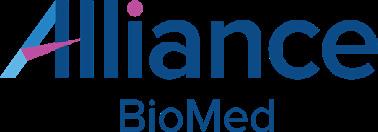
The premier turnkey solution for testing centres looking to face the increasing need for PCR testing with confidence.
RESOLUTE 2.0 COVID-19 PCR test kits eliminates the need for RNA extraction, reading clinical results within an hour.

Abbott’s hsTnI is a cardiac-specific blood test – the first CE marked cardiac-specific biomarker for risk stratification of the apparently healthy population. As a physician, Abbott’s hsTnI blood test can help you to more accurately stratify an asymptomatic individual’s risk of a future cardiac event It enables you to better prioritize appropriate care for those at higher risk to help prevent adverse outcomes, and potentially avoid unnecessary investigations and treatments in those at lower risk.
Abbott’s hsTnI can be integrated into daily practice and added to existing patient wellness checks.
To implement cardiac risk stratification of the apparently healthy population using Abbott’s hsTnI test in your practice, please contact your local Abbott representative.
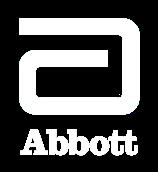
Headquartered in Singapore, BioMedix specializes in distribution of high quality and innovative medical devices, laboratory equipment, test kits and reagents as well as life science products and services which will greatly improve the productivity in the labs and hospitals.
We serve customers across Asia Pacific, providing them with professional service and advice.

Some of the products include:
Clinical Chemistry Analyser
• Immunoassay Analyser
• Haematology Analyser
Automated Stainers (Haematology/Gram/TB)
• Urea Breath Test Analyser
• Hydrogen Breath Test Analyser
• Test Kits, Reagents, Chemicals, solvents for Histology, Microbiology, Cytology, etc.
For the full range of products, please visit our website www.biomedix.com.sg
+65 6547 5591
sales_enquiries@biomedix.com.sg










Building on the global success of its regional titles – EME Outlook, Africa Outlook, APAC Outlook, and North America Outlook – Outlook Publishing is proud to introduce a platform dedicated to the mining and resources sector.
















As mining organisations worldwide confront unprecedented change, embracing technological innovations and incorporating critical environmental sustainability agendas, now more than ever is the time to showcase the strides being taken in this dynamic sector.

A multi-channel brand, Mining Outlook brings you the positive developments driven by organisations across the global mining industry through our various platforms. Discover exclusive content distributed through our website, online magazine, social media channels, and dispatches delivered straight to your inbox with a bi-weekly newsletter.



Through this compelling new venture, we foreground the movers and shakers of the industry. To participate as a featured company and join us in this exciting endeavour, contact one of our Project Managers today.
www.mining-outlook.com



































